Forums
- Forums
- Axis And Allies Forum
- General Discussion
- Aviation News
Aviation News
Post a reply
- Go to Previous topic
- Go to Next topic
- Go to Welcome
- Go to Introduce Yourself
- Go to General Discussion
- Go to Screenshots, Images and Videos
- Go to Off topic
- Go to Works in Progress
- Go to Skinning Tips / Tutorials
- Go to Skin Requests
- Go to IJAAF Library
- Go to Luftwaffe Library
- Go to RAF Library
- Go to USAAF / USN Library
- Go to Misc Library
- Go to The Ops Room
- Go to Made in Germany
- Go to Campaigns and Missions
- Go to Works in Progress
- Go to Juri's Air-Raid Shelter
- Go to Campaigns and Missions
- Go to Works in Progress
- Go to Skinpacks
- Go to External Projects Discussion
- Go to Books & Resources
-
 Main AdminAL UDEID AIR BASE, Qatar (AFNS) -- Soldiers, Sailors, and Airmen of U.S. Central Command worked together with regional partners to conduct Joint Air Defense Exercise 19-01, a regularly scheduled three-day training event focused on increasing the readiness of air defense assets in the CENTCOM area of responsibility. The U.S. Air Forces Central Command-led exercise included increased participation in the live-fly portion to include B-1B Lancers, F-15E Strike Eagles and coalition partner aircraft.
Main AdminAL UDEID AIR BASE, Qatar (AFNS) -- Soldiers, Sailors, and Airmen of U.S. Central Command worked together with regional partners to conduct Joint Air Defense Exercise 19-01, a regularly scheduled three-day training event focused on increasing the readiness of air defense assets in the CENTCOM area of responsibility. The U.S. Air Forces Central Command-led exercise included increased participation in the live-fly portion to include B-1B Lancers, F-15E Strike Eagles and coalition partner aircraft.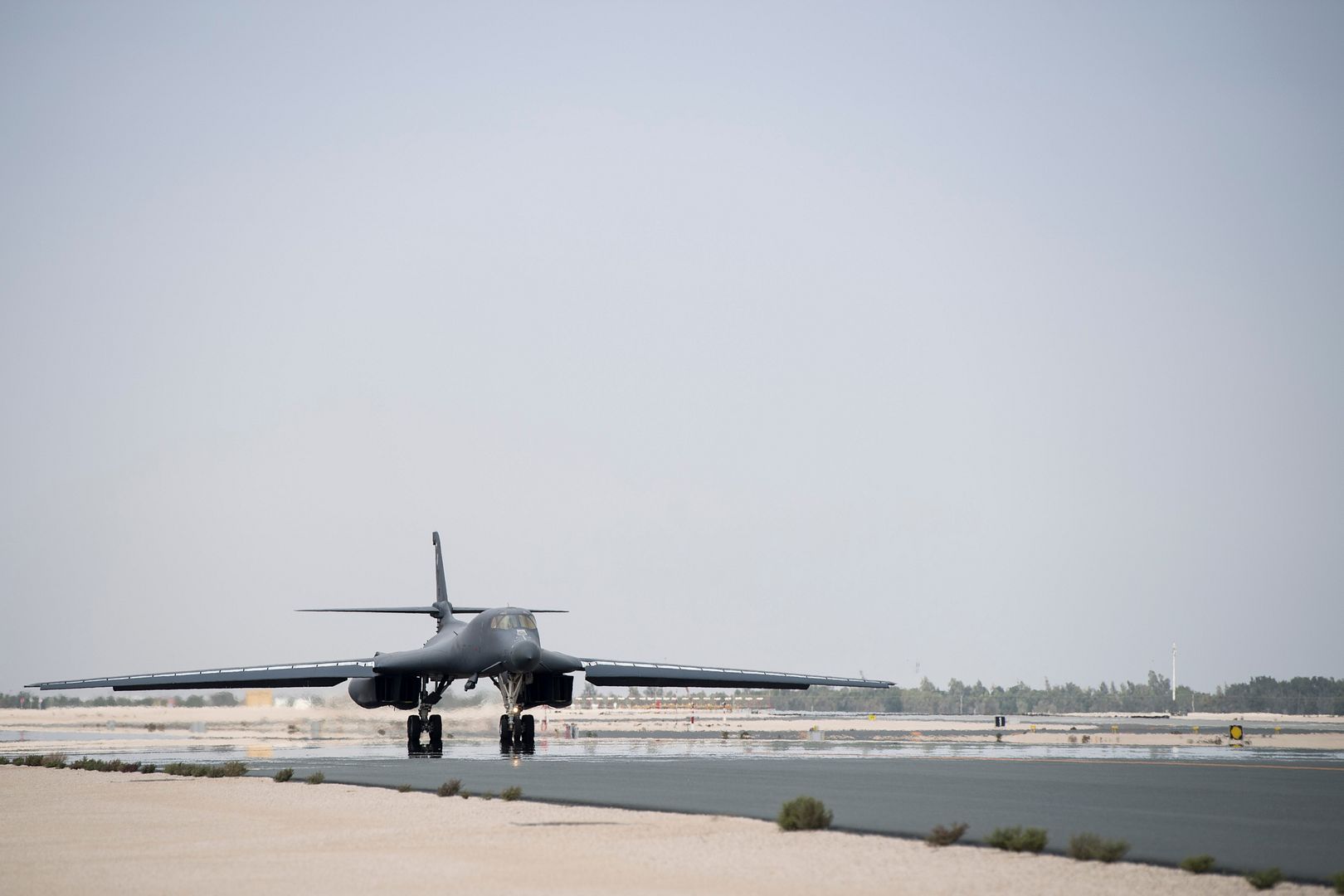
?This is the first time a B-1 has been integrated into JADEX,? said Maj. Ricardo Lara, AFCENT chief of exercises. ?It gave us an opportunity to practice combined air operations with multiple aircraft and partners dedicated to regional defense to develop command and control tactics, techniques and procedures (TTPs).?
Along with the live-fly portion, JADEX also included Navy ships and Army defense assets that participated in combined defense training. As well, the exercise consisted of robust table-top and simulated scenarios to test joint coalition C2 partners in all domains.
?We?re really testing the tactical levels of warfare,? Lara said. ?We want to get after what that Soldier, Sailor or Airman is seeing down their scope, targeting pod or radar and how they communicate and operate as a joint coalition team.?
While the scenarios were simulated, the team practiced real-world TTPs to address missile, aircraft and small unmanned aerial system threats.
Regional partners operated alongside aircraft and Joint assets across the area of responsibility to practice defense against a variety of simulated threats. With geographically separated participants from different services and nations, communication and interoperability were crucial exercise aspects.
?JADEX is an opportunity for us to practice regional defense with our gulf partners,? said Lt. Gen. Joseph Guastella, Combined Air Forces component commander. ?It?s our responsibility to maintain a credible, capable and dynamic defense posture to compete, deter and win against state and non-state actors. JADEX is one of many exercises that demonstrate those capabilities we practice alongside our international, joint and interagency teammates.?
JADEX is one of more than 75 exercises across the CENTCOM AOR that strengthens peaceful military-to-military relationships and provides regional stability with partner nations.
(U.S. Air Force photo by Senior Airman Gracie I. Lee & Staff Sgt. Clayton Cupit)
An A-10 Thunderbolt II attack aircraft assigned to the 442nd Air Wing, Whiteman Air Force Base, MO., is staged on the flight line, Marine Corps Air Station Kaneohe Bay, Feb. 20, 2019. The unit will be participating in various training exercises across the Hawaiian islands, working alongside U.S. Marine Corps units. (U.S. Marine Corps photo by Sgt. Zachary Orr)
U.S. Air Force Lt. Col. Lee Saugstad, an A-10 Thunderbolt II pilot with the 442nd Air Wing, Whiteman Air Force Base, MO., exits his aircraft after a flight, Marine Corps Air Station Kaneohe Bay, Feb. 20, 2019. The unit will be participating in various training exercises across the Hawaiian islands, working alongside U.S. Marine Corps units. (U.S. Marine Corps photo by Sgt. Zachary Orr)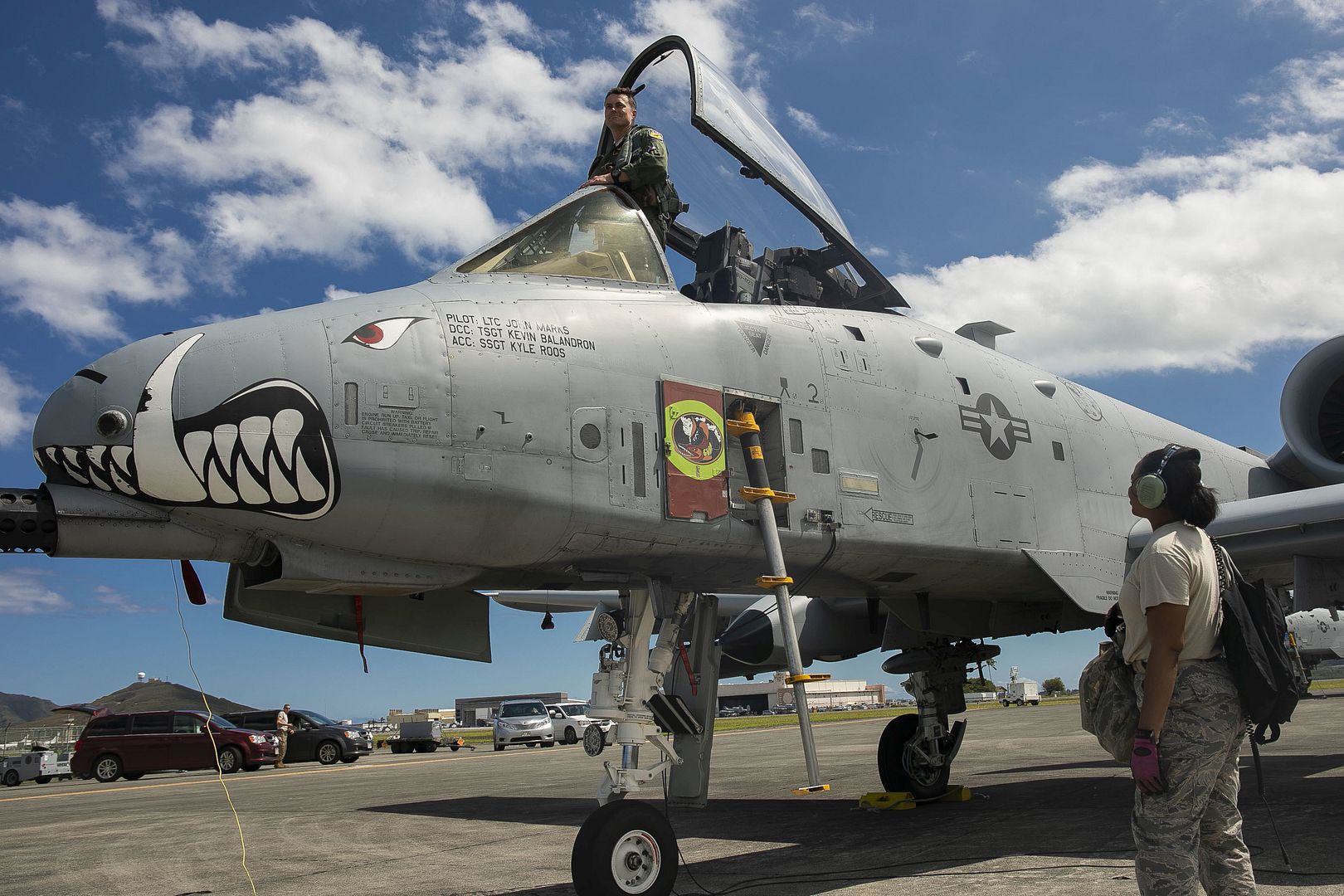
A U.S. Air Force A-10 Thunderbolt II aircraft assigned to the 442nd Fighter Wing from Whiteman Air Force Base, Missouri, escorts MV-22B Ospreys assigned to Marine Medium Tiltrotor Squadron (VMM) 268, Hawaii, Feb. 21, 2019. The unit will be participating in various training exercises across the Hawaiian Islands, working alongside U.S. Marine Corps units. (U.S. Marine Corps photo by Sgt. Alex Kouns)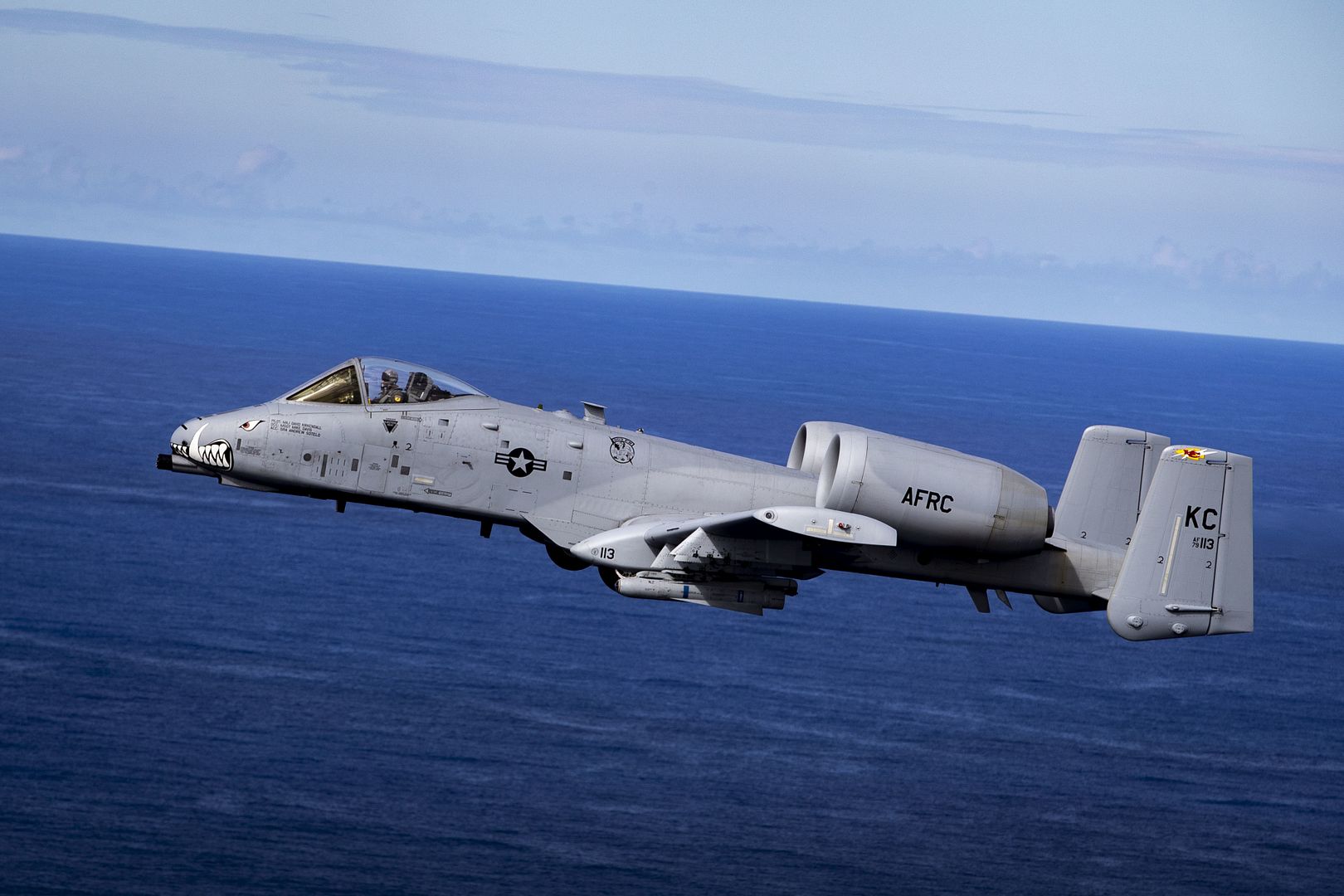
Aircraft perform a demonstration flight during Aero India 2019, Feb. 20, at Air Force Station Yelahanka, Bengaluru, India. The five-day airshow features bands, aircraft displays and other performances. (U.S. Air Force photo by Senior Airman Juan Torres)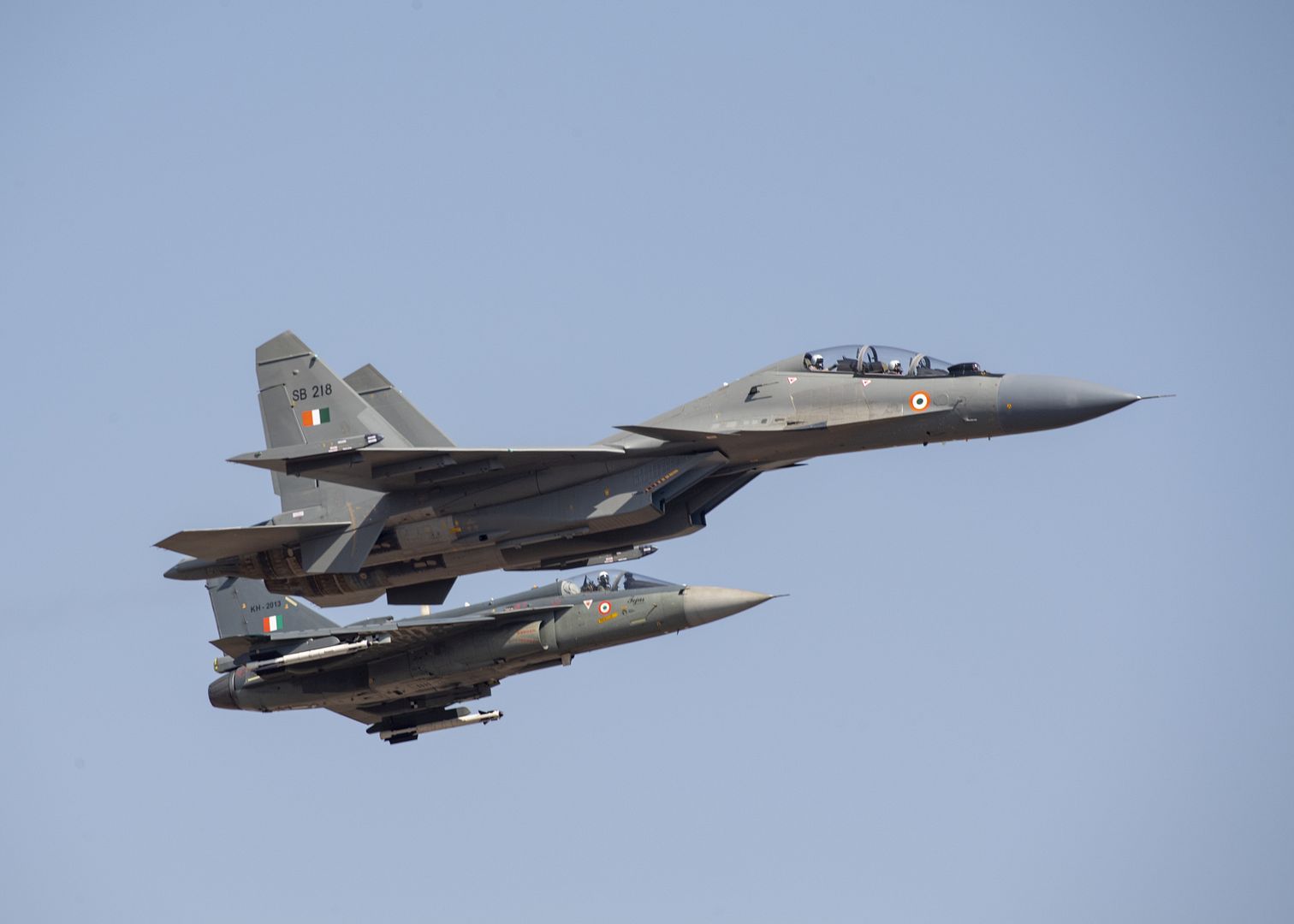
A U.S. Air Force F-16 Fighting Falcon, 35th Fighter Wing, performs a demonstration flight during Aero India 2019, Feb. 20, at Air Force Station Yelahanka, Bengaluru, India. The five-day airshow provides the U.S. an opportunity to strengthen partnerships between the United States and India. (U.S. Air Force photo by Senior Airman Juan Torres)
A U.S. Air Force B-52 Stratofortress makes a flyover during Aero India 2019, Feb. 20, at Air Force Station Yelahanka, Bengaluru, India. The five-day airshow provides the U.S. an opportunity to strengthen partnerships between the United States and India. (U.S. Air Force photo by Senior Airman Juan Torres)
F-15E Strike Eagles assigned to the 494th Fighter Squadron execute a missing man formation over Endcliffe Park during the Mi Amigo 75th Anniversary flypast event Feb. 22, 2019 at Sheffield, England. As a tribute, the Strike Eagles bore the names of each crew member to honor the memory of the 10 fallen U.S. Airmen who died when their war-crippled B-17 Flying Fortress crash landed to avoid killing residence and nearby children. (U.S. Air Force photo/ Tech. Sgt. Matthew Plew)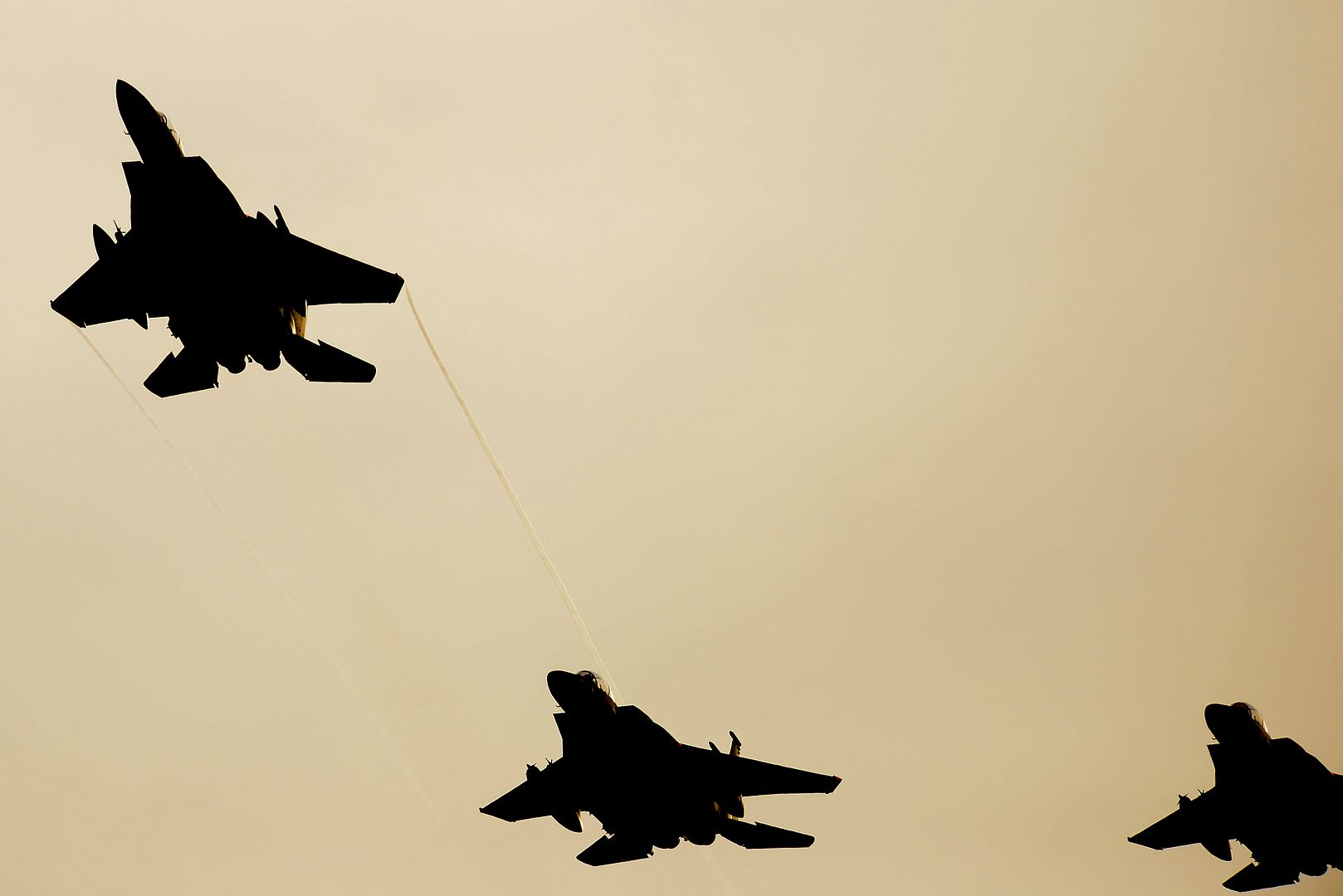
A U.S. Air Force F-16C Fighting Falcon from the 13th Fighter Squadron, Misawa Air Base, Japan, assigned to COPE North 2019, takes off for relocation as Tyhoon Wutip nears Guam, Feb. 22, 2019. COPE North 2019 paused Feb. 22 as a precautionary measure due to hazardous conditions and potentially damaging winds caused by Typhoon Wutip. Typhoon Wutip is an opportunity to demonstrate the airpower the three nations provide, and the multilateral alliance is overcoming this weather challenge through deliberate planning and disciplined execution. (U.S. Air Force photo by Senior Airman Jarrod Vickers)
PACIFIC OCEAN (Feb. 18, 2019) An MV-22 Osprey assigned to Marine Medium Tiltrotor Squadron (VMM) 163 (Reinforced), 11th Marine Expeditionary Unit (MEU), takes off during flight operations aboard the amphibious assault ship USS Boxer (LHD 4). The Marines and Sailors of the 11th MEU are conducting routine training as part of the Boxer Amphibious Ready Group in the eastern Pacific Ocean. (U.S. Marine Corps photo by Cpl. Matthew B. Teutsch/Released)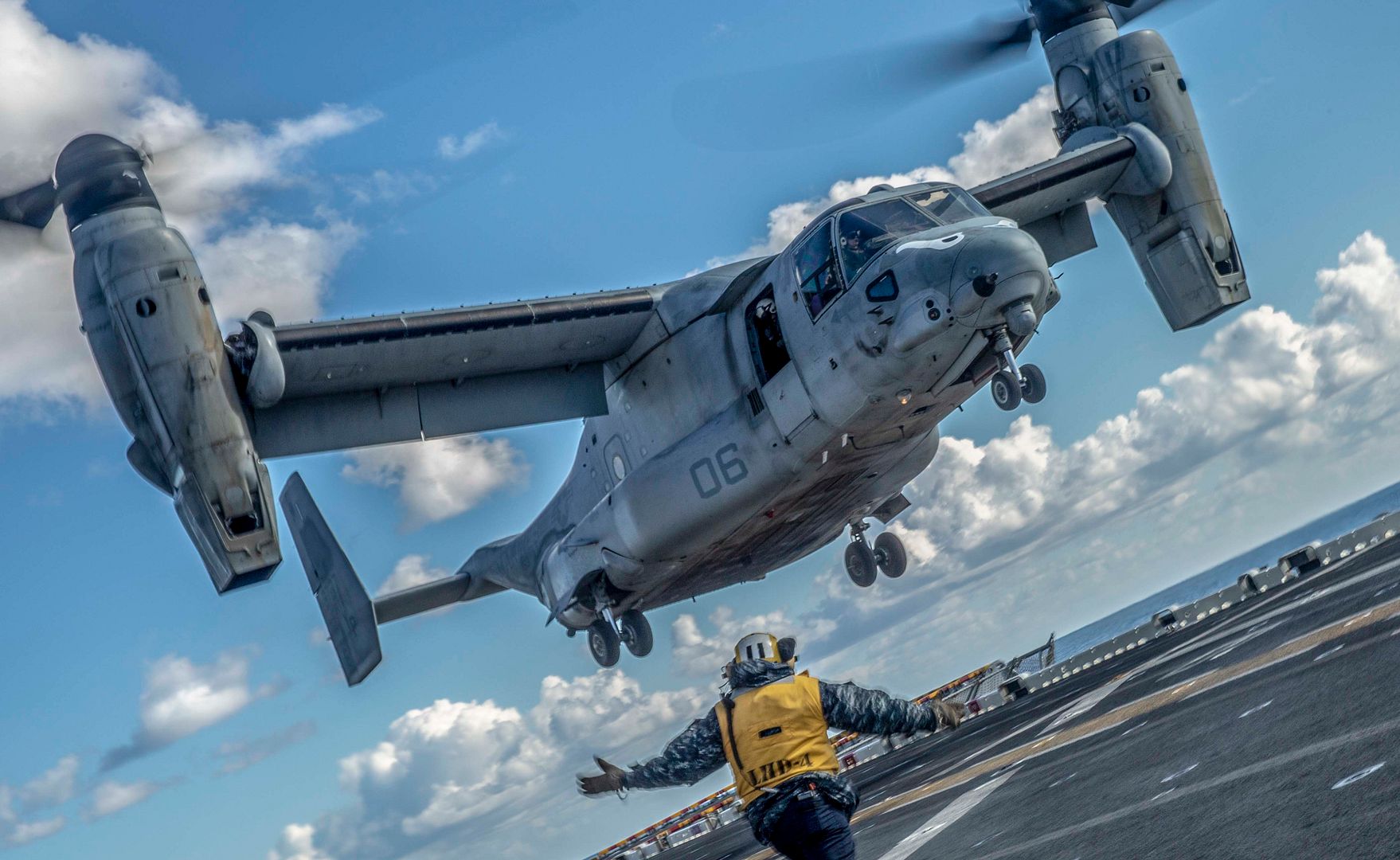
PACIFIC OCEAN (Feb. 21, 2019) An F/A-18E Super Hornet, assigned to the Golden Warriors of Strike Fighter Attack Squadron (VFA) 87, approaches the flight deck of aircraft carrier USS Theodore Roosevelt (CVN 71). Theodore Roosevelt is conducting routine operations in the Eastern Pacific. (U.S. Navy photo by Mass Communication Specialist 3rd Class Andrew Langholf/Released)
ATLANTIC OCEAN (Feb. 20, 2019) An F/A-18E Super Hornet from the Sidewinders of Strike Fighter Squadron (VFA) 86 prepares to make an arrested landing on the flight deck of the Nimitz-class aircraft carrier USS Abraham Lincoln (CVN 72). Abraham Lincoln is underway conducting composite unit training exercise (COMPTUEX) with Carrier Strike Group (CSG) 12. The components of CSG 12 embody a team-of-teams concept, combining advanced surface, air and systems assets to create and sustain operational capability. This enables them to prepare for and conduct global operations, have effective and lasting command and control, and demonstrate dedication and commitment to becoming the strongest warfighting force for the Navy and the nation.(U.S. Navy photo by Mass Communication Specialist 2nd Class Jessica Paulauskas/Released)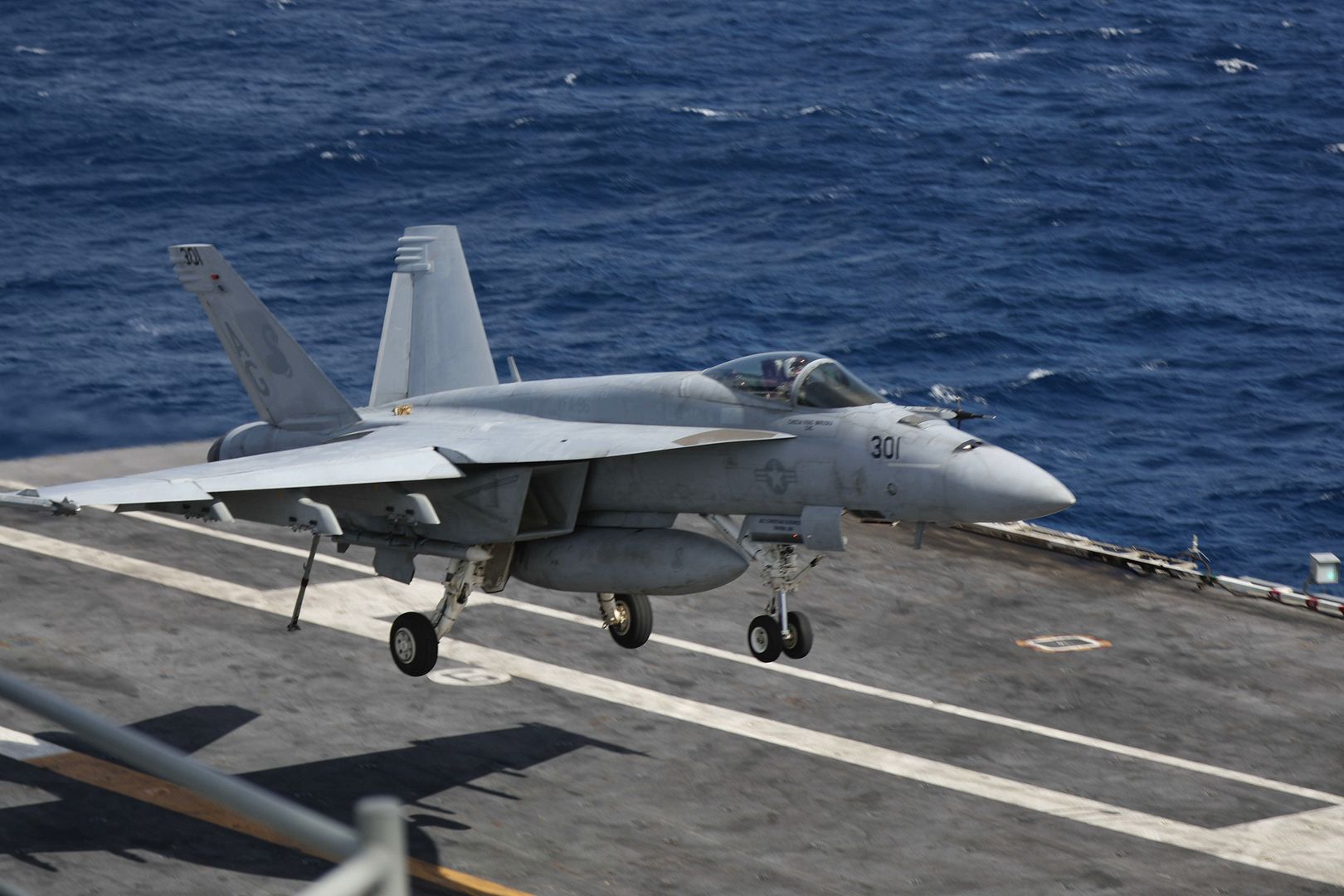
SAN DIEGO (Feb. 20, 2019) An AV-8A Harrier is loaded onto the amphibious assault ship USS Makin Island (LHD during crane operations. Sailors brought the aircraft aboard for upcoming damage control training. Makin Island, homeported in San Diego, is conducting a depot-level maintenance availability. (U.S. Navy Photo's by Mass Communication Specialist 3rd Class Jeremy Laramore/Released)
during crane operations. Sailors brought the aircraft aboard for upcoming damage control training. Makin Island, homeported in San Diego, is conducting a depot-level maintenance availability. (U.S. Navy Photo's by Mass Communication Specialist 3rd Class Jeremy Laramore/Released)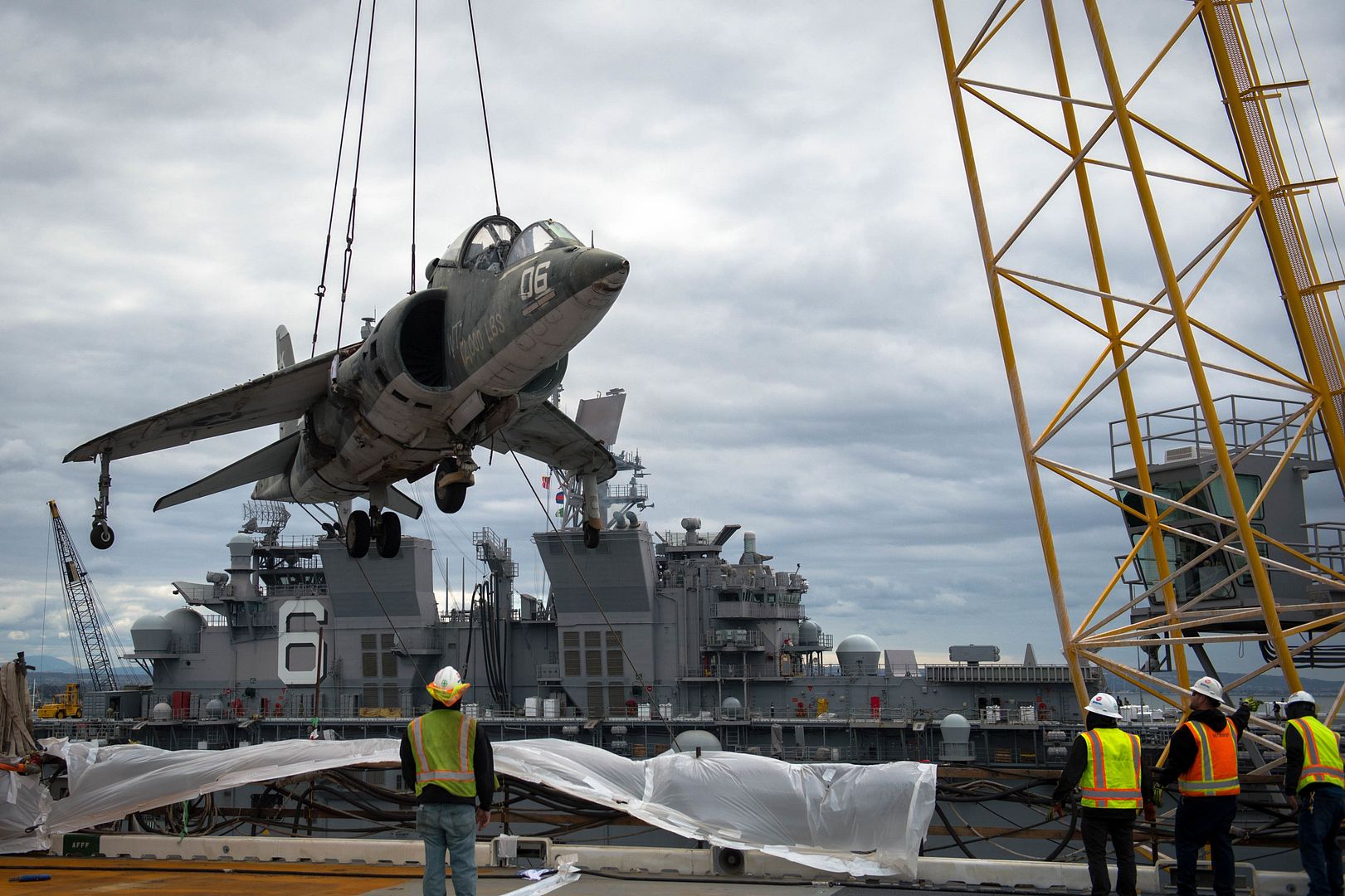
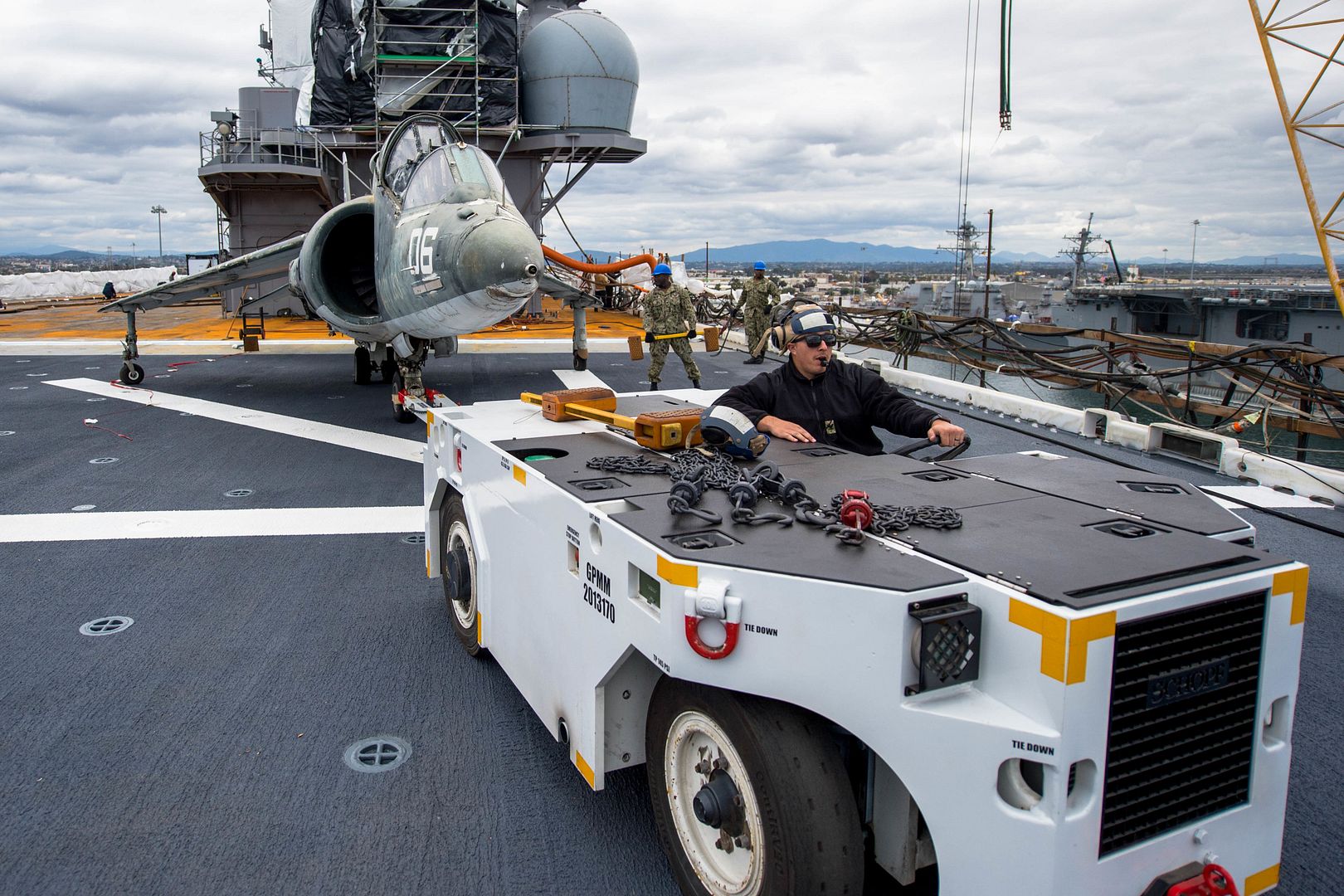
Melbourne, Florida, February 21, 2019 ? Embraer Executive Jets delivered 53 Phenom 300 and Phenom 300E light jets in 2018, according to a report issued by the General Aviation Manufacturers Association (GAMA). This is the seventh consecutive year that the Phenom 300 achieves this mark, having accrued more than 490 deliveries since entering the market in December 2009.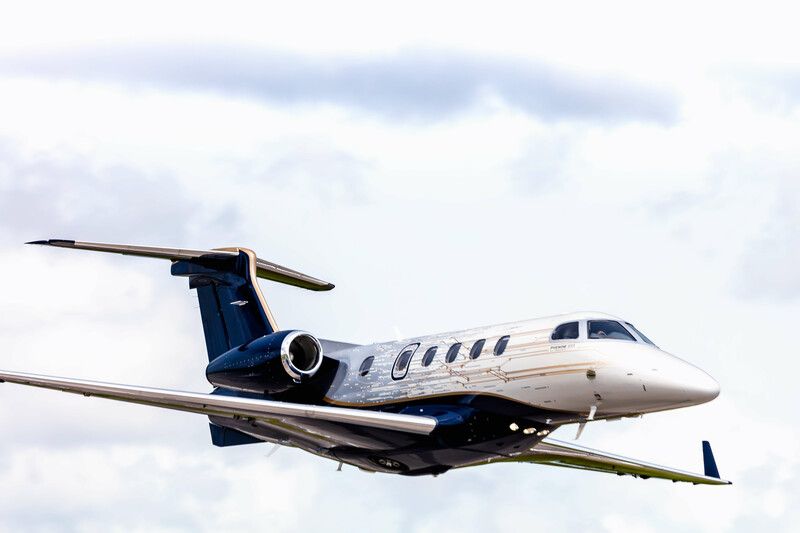
?The Phenom 300?s continued success in the market is a reflection of our commitment to fascinate customers and deliver the ultimate customer experience in business aviation,? said Michael Amalfitano, President & CEO, Embraer Executive Jets. ?The revolutionary interior design of the Phenom 300E adds even more value to this already popular model, reaffirming our commitment to continue to invest in true innovation.?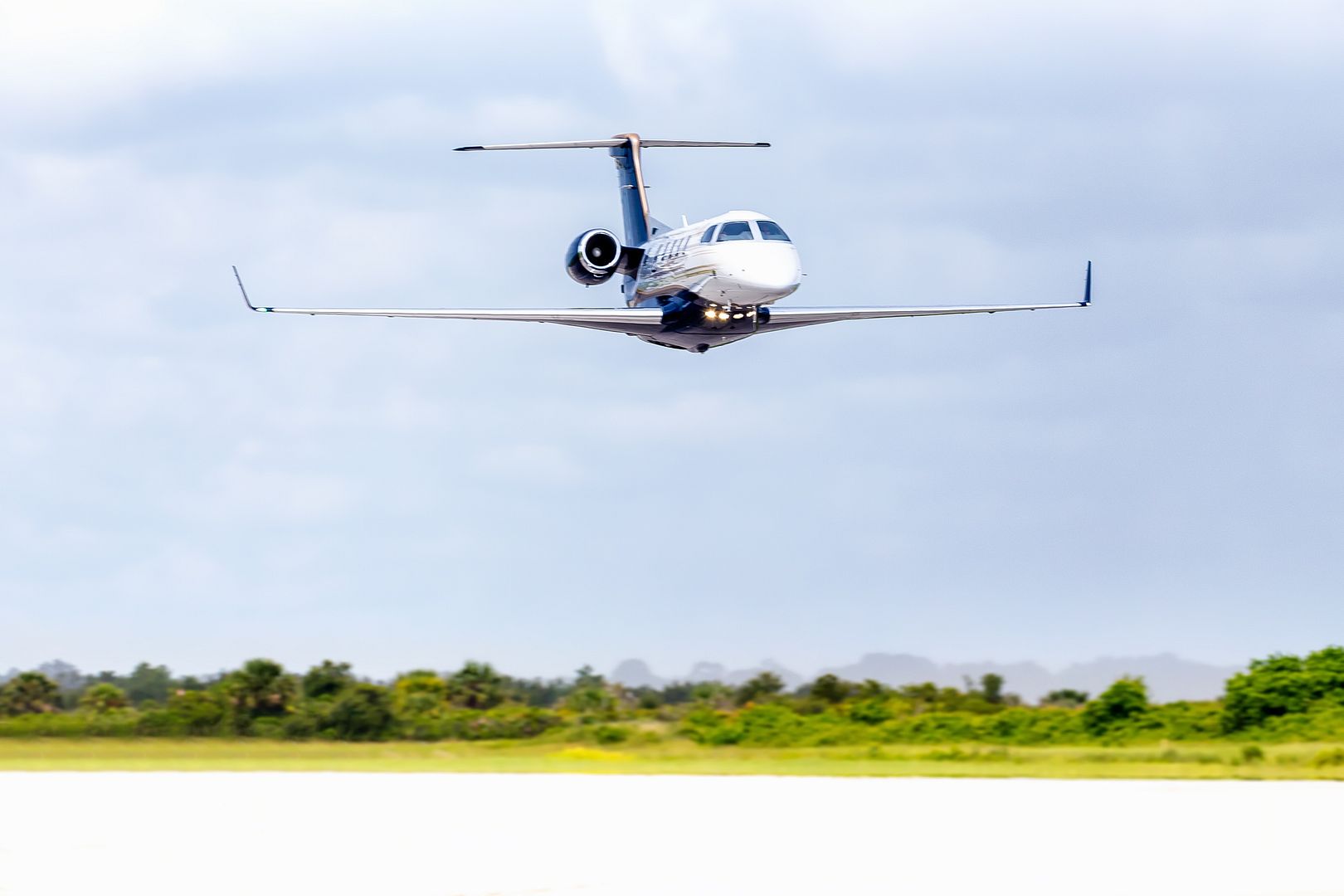
Originally launched in 2005, the Phenom 300 has sustained more than half of the light jet market share since 2012. The aircraft is in operation in more than 30 countries and has accumulated more than 780,000 flight hours. Embraer is continuously investing in the competitiveness of the Phenom 300 with enhancements to its comfort, technology and operational efficiency.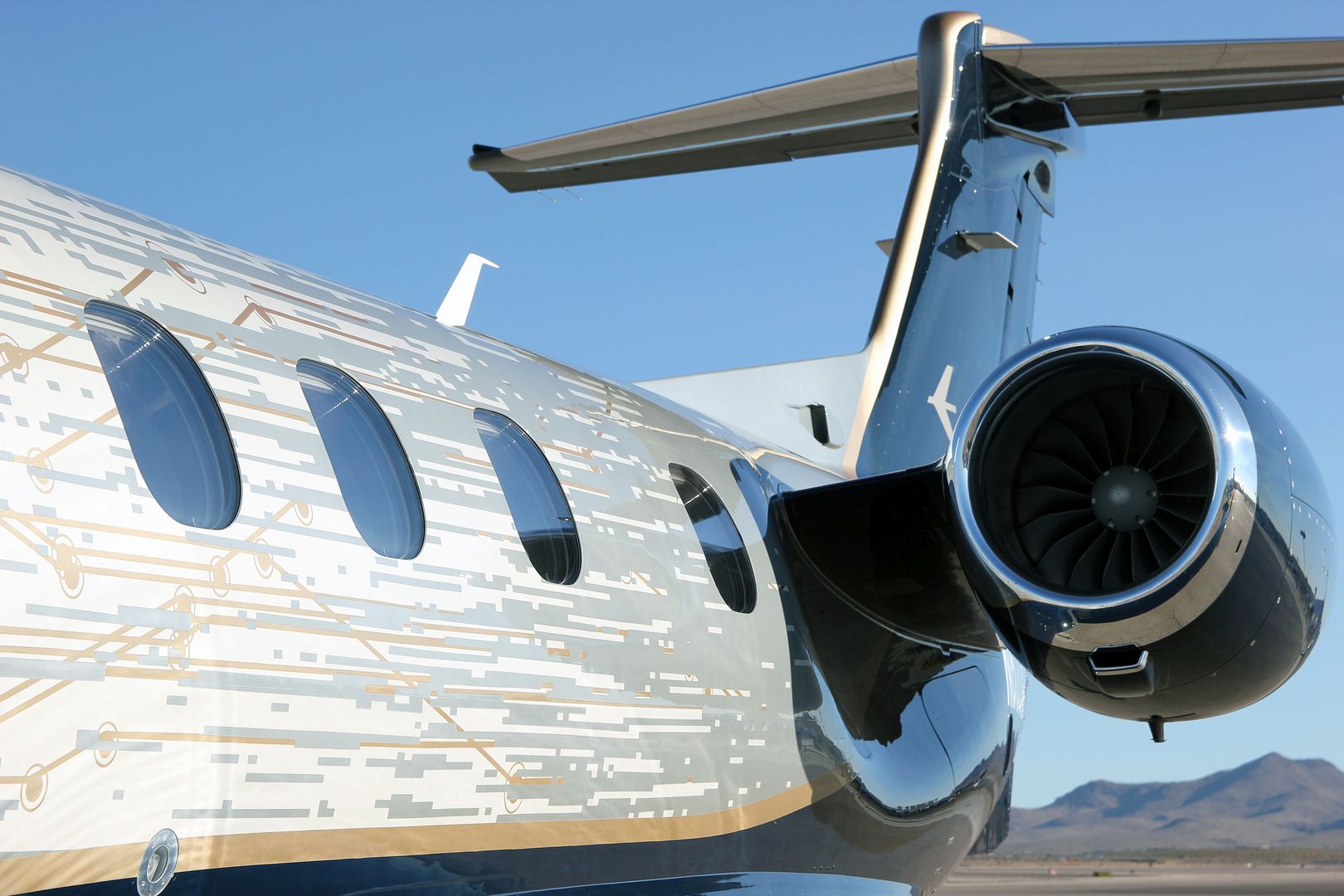
In October 2017, the new Phenom 300E was announced and entered service just five months later, in March 2018, and it is the only Phenom 300 model available to be acquired. The new aircraft is designated ?E? for ?Enhanced? in reference to its entirely redesigned cabin and the addition of the industry-leading nice? HD CMS/IFE (Cabin Management System/InFlight Entertainment) by Lufthansa Technik.
The Phenom 300E inherits the Embraer DNA Design, first introduced in its larger siblings, the Legacy 450 and Legacy 500 midsize jets. The application of this design in the Phenom 300E rendered an even more spacious cabin with more personalization options and greater ease of maintainability.
The revolutionary new interior design of the Phenom 300E starts with the all-new Embraer DNA seats, both designed and manufactured by Embraer. The new seats in the Phenom 300E feature an extendable headrest with bolsters, retractable armrest, broader backs for greater support, and extendable leg rests for improved ergonomics. The new table, side ledge, side wall, and valance design optimizes passenger mobility in the cabin with expanded aisle clearance and increased cabin space, rendering unmatched comfort and personalization in the light jet class.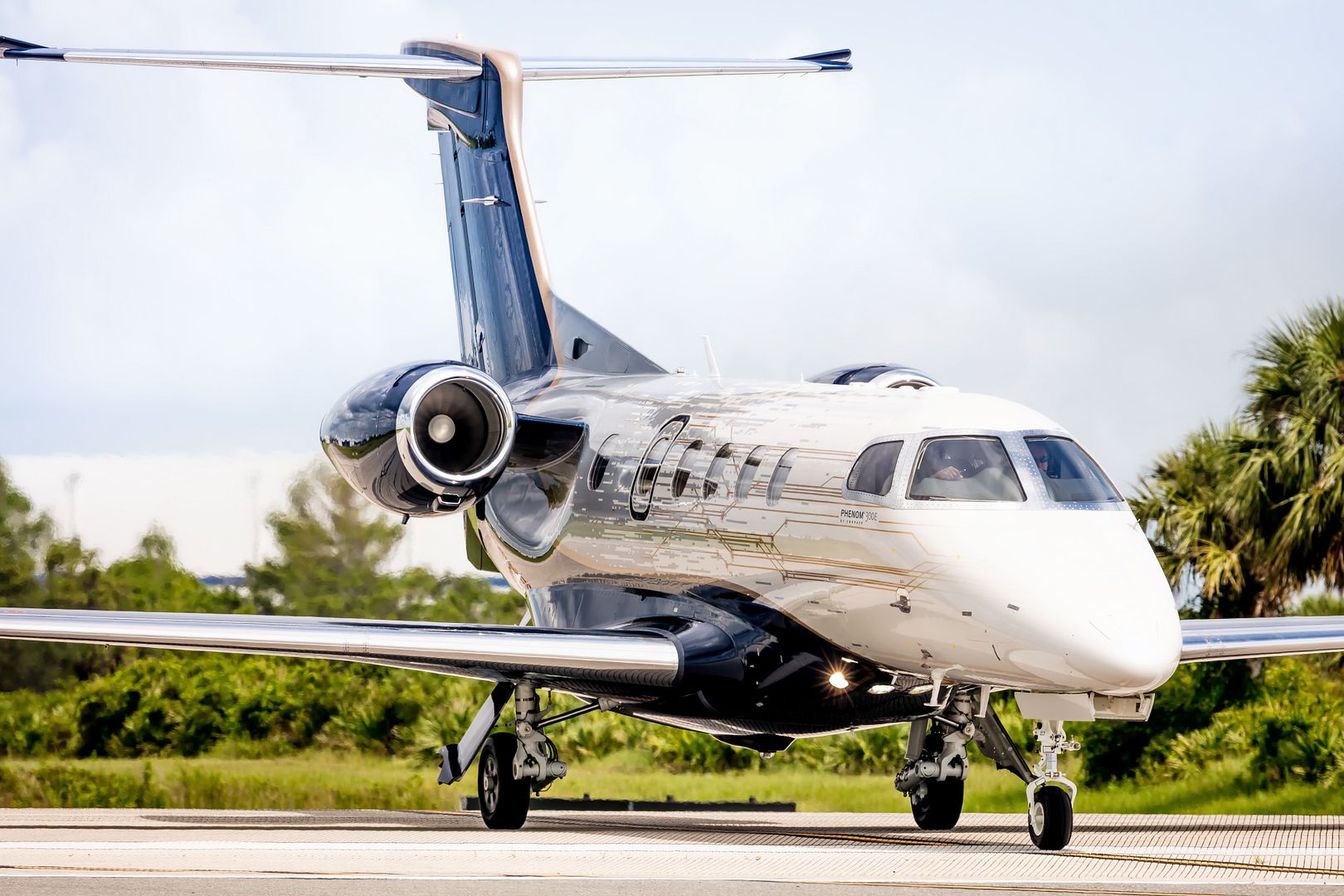
The Phenom 300E features an industry-exclusive upper technology panel (upper tech panel) along the centerline of the aircraft?s ceiling, significantly improving passenger ergonomics. The innovative upper tech panel presents passengers with pertinent inflight information, while allowing for convenient interaction with cabin management controls, as well as the option of inflight entertainment with audio and video on demand via two slender swing-down seven-inch displays. The unit also offers an enhanced cabin lighting scheme, with a broad range of ambient mood selections, as well as integrates sleek, silent gaspers enhancing acoustic comfort. Bluetooth connectivity also allows passengers to view inflight information on their personal devices.
The Phenom 300E is also the fastest light jet, having established several speed records with the National Aeronautic Association and the Federation Aeronautique Internationale.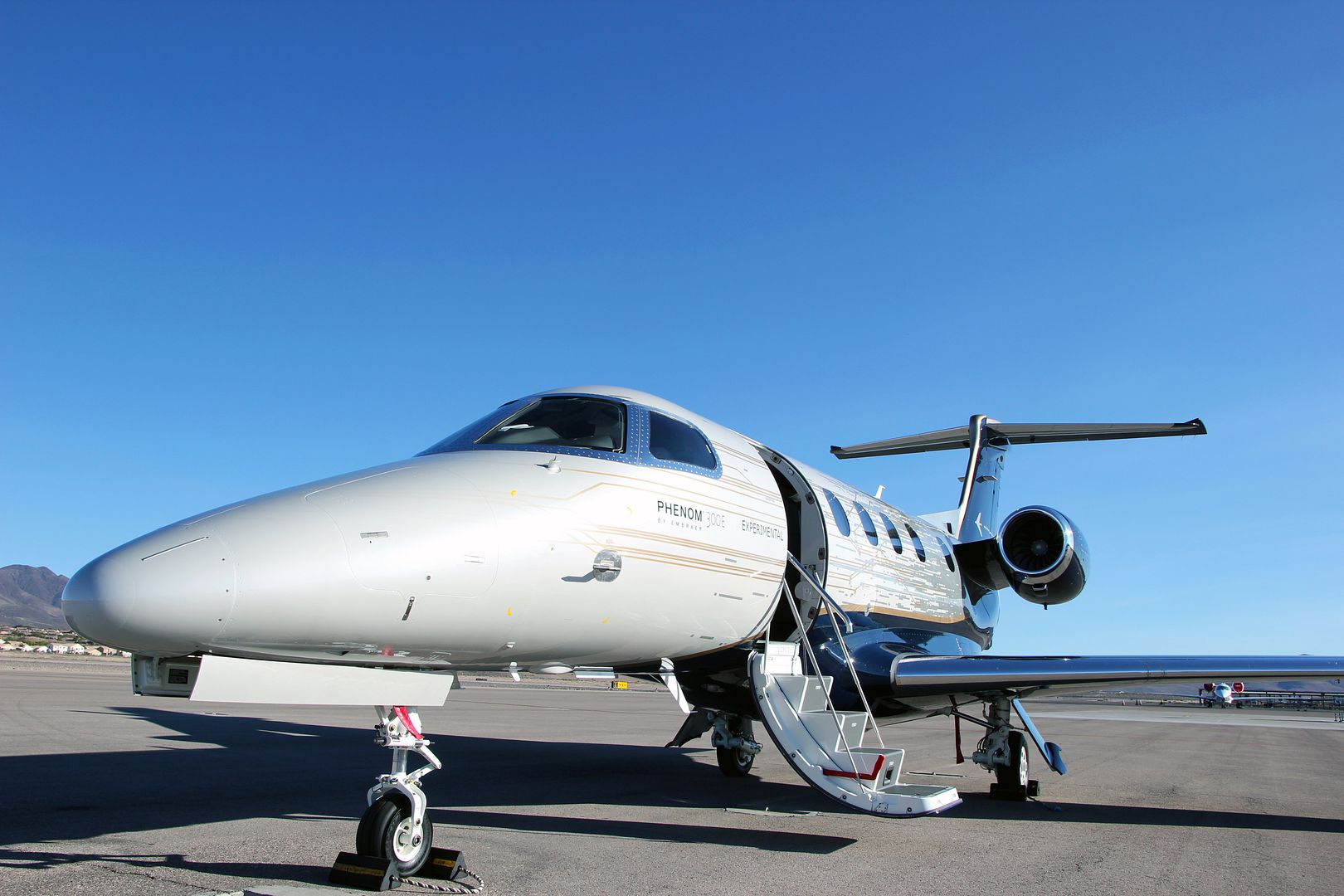
Date: 22 Feb 2019.
The Royal Air Force?s Brimstone missile capability has been deployed from a Typhoon jet for the first time, in the fight against Daesh.
Strikes have decreased in regularity this month, with the terrorists confined to a tiny enclave of territory where there is a significant number of civilians, who are being transported to safety by Syrian Democratic Forces.
However, a Typhoon was deployed to the River Euphrates on 19th February, where a boat used by Daesh had been identified and was destroyed using the Brimstone missile. The RAF also destroyed two Daesh strong-points, including a heavy machine-gun position, on 11th February using Paveway IV.
The Brimstone was one of three weapons upgrades fitted onto the Typhoon last month under ?Project Centurion?, worth ?425m over the past three years. This project not only enhanced the Typhoon with the precision attack missile Brimstone, but the aircraft also now has deep strike cruise missile Storm Shadow and air-to-air missile Meteor at its disposal. It means the jets have boosted capabilities to intercept airborne missiles and strike ground based targets, seamlessly taking over from the Tornado?s attack role as it nears retirement.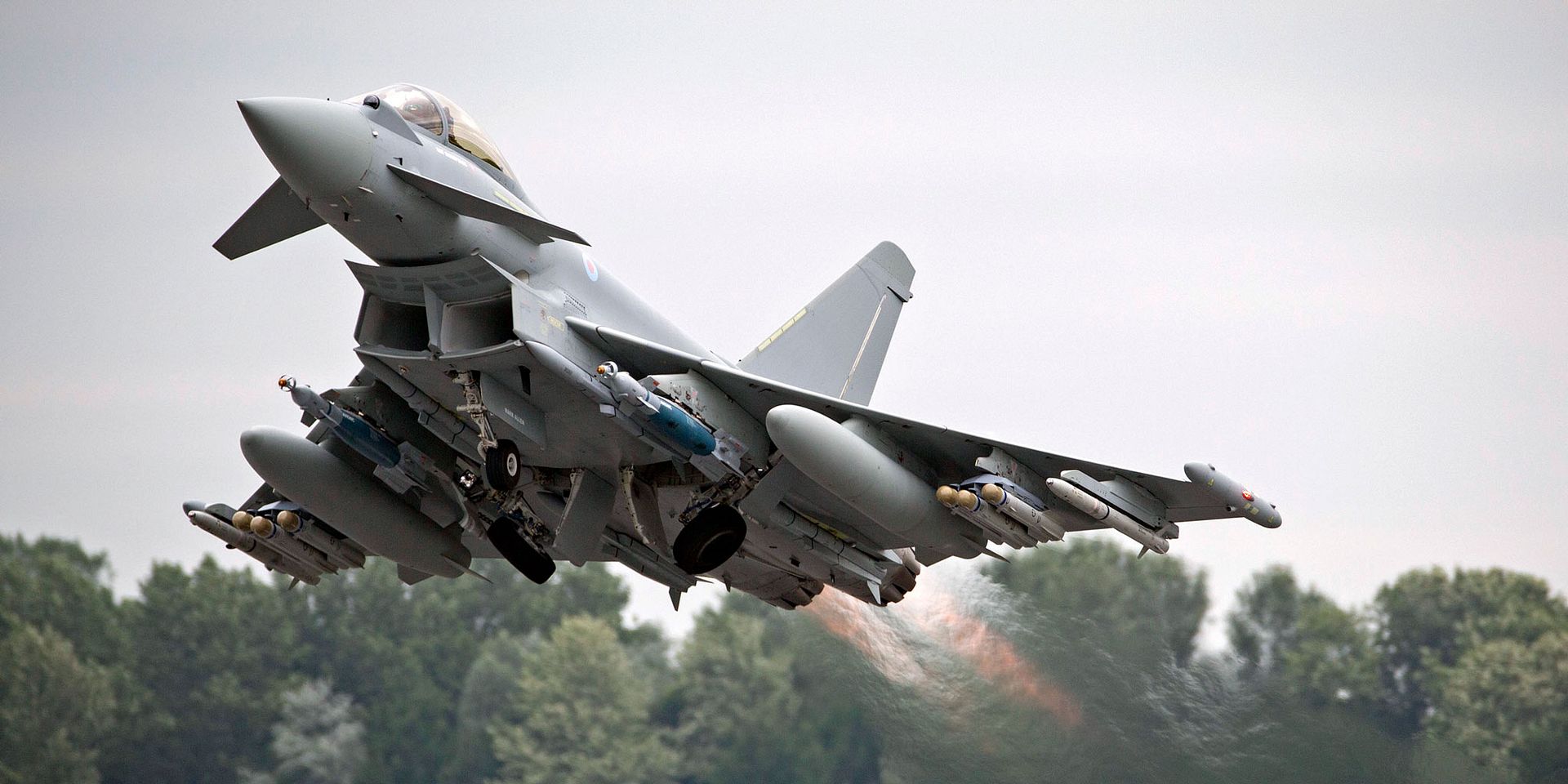
-
 Main AdminPACIFIC OCEAN (Feb. 23, 2019) An E-2C Hawkeye, assigned to the Liberty Bells of Airborne Early Warning Squadron (VAW) 115, approaches the flight deck of the aircraft carrier USS Theodore Roosevelt (CVN 71). Theodore Roosevelt is conducting routine operations in the Eastern Pacific. (U.S. Navy photo by Mass Communication Specialist 2nd Class Alex Corona/Released)
Main AdminPACIFIC OCEAN (Feb. 23, 2019) An E-2C Hawkeye, assigned to the Liberty Bells of Airborne Early Warning Squadron (VAW) 115, approaches the flight deck of the aircraft carrier USS Theodore Roosevelt (CVN 71). Theodore Roosevelt is conducting routine operations in the Eastern Pacific. (U.S. Navy photo by Mass Communication Specialist 2nd Class Alex Corona/Released)
PACIFIC OCEAN (Feb. 23, 2019) An F/A-18F Super Hornet, assigned to the Black Knights of Strike Fighter Attack Squadron (VFA) 154, approaches the flight deck of the aircraft carrier USS Theodore Roosevelt (CVN 71). Theodore Roosevelt is conducting routine operations in the Eastern Pacific. (U.S. Navy photo by Mass Communication Specialist 2nd Class Alex Corona/Released)
U.S. Marines from the Marine All-Weather Fighter Attack Squadron 242 from Iwakuni, Japan, moves a F-18D onto the flight line in preparation to start fighter operations during COPE North 2019 on Feb. 25, 2019, at Andersen Air Force Base, Guam. COPE North 2019 is in preparation to resume operations after Super Typhoon Wutip passed by Guam on Feb. 24, 2019. CN19 is a long-standing exercise designed to enhance multilateral air operations amongst allies and will include humanitarian assistance and disaster relief airlift operations as well as large-force employment. (U.S. Air Force photo by Senior Airman Xavier Navarro)
Jurgis Kairys, lead pilot for the Air Bandits aerial demonstration team, taxis down the Avalon Airport runway after a flight at Geelong, Victoria, Australia, Feb. 25, 2019. The Air Bandits consist of two Yak-52TW aircraft and Kairys? one-of-a-kind aircraft named Juka. (U.S. Air Force photo by Staff Sgt. Sergio A. Gamboa)
A U.S. Air Force B-52 Stratofortress bomber deployed to Andersen Air Force Base, Guam is parked at the Avalon Airport at Geelong, Victoria, Australia, Feb. 22, 2019. Various U.S. aircraft flew to Avalon to showcase different capabilities and missions during the 2019 Australian International Aerospace & Defence Exposition and Airshow (AVALON 2019) which will be held Feb. 26 to March 3, 2019. AVALON 19 is the premier aerospace exhibition (airshow & tradeshow) in Australia; this year?s exhibition will be the 14th iteration since its inception in 1992. U.S. forces are participating in AVALON 19 to strengthen military-to-military ties with Australian allies while enhancing relationships with partners in the Indo-Pacific region. (U.S. Air Force photo's by Capt. Candice Dillitte)
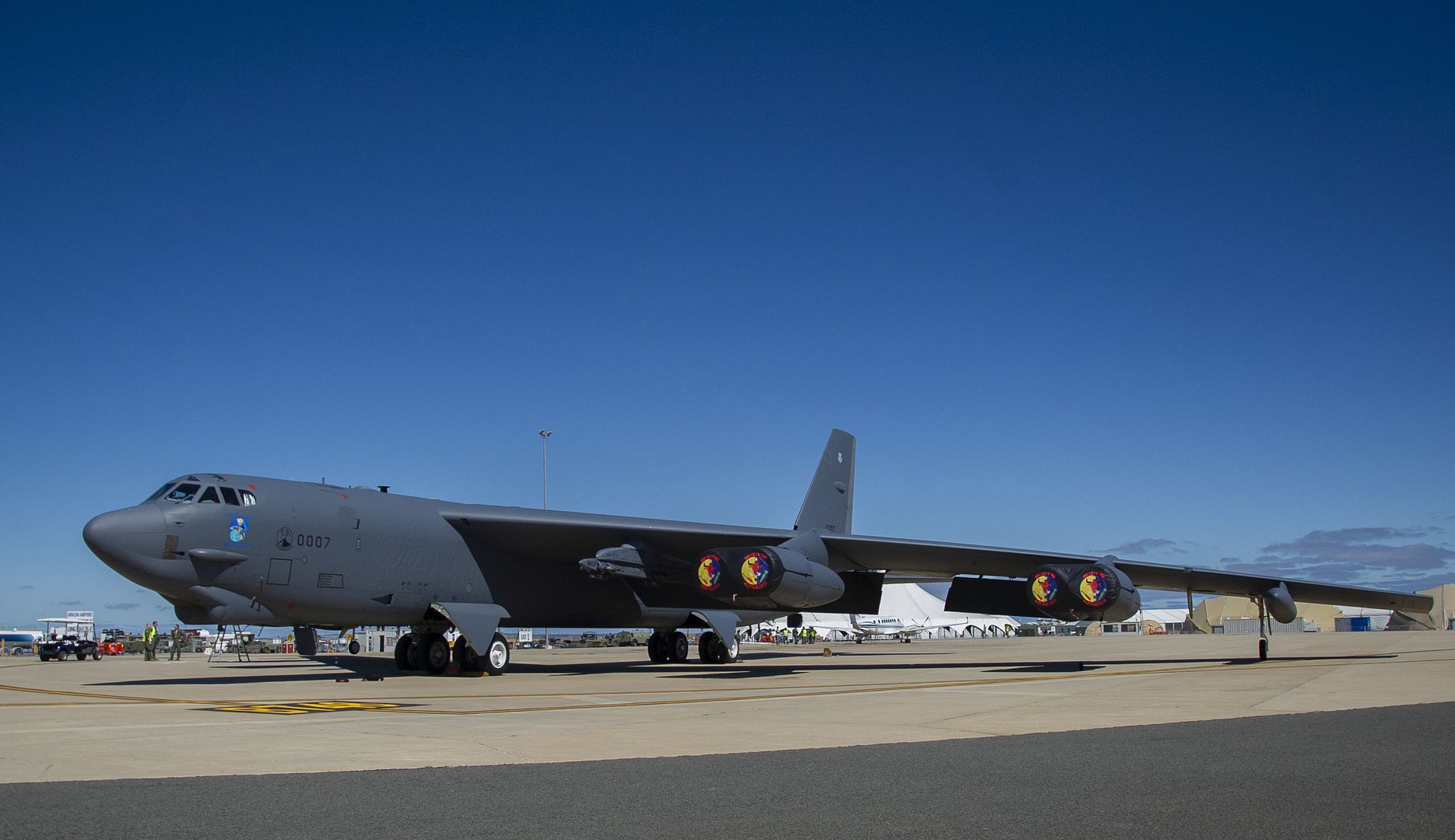
Getafe, 25 February 2019 ? Airbus has delivered the first upgraded Tranche 1 Eurofighter to the Spanish Air Force. The upgrade was carried out at Airbus facilities in Getafe and involved the introduction of hardware modifications which support the Operational Flight Program 02 (OFP-02) developed by the Armament and Experimental Logistics Centre (CLAEX).
The upgrade developed by Airbus includes modifications that integrate Tranche 2 and Tranche 3 equipment on the aircraft, not least a Computer Symbol Generator, Digital Video and Voice Recorder, Laser Designator POD and Maintenance Data Panel.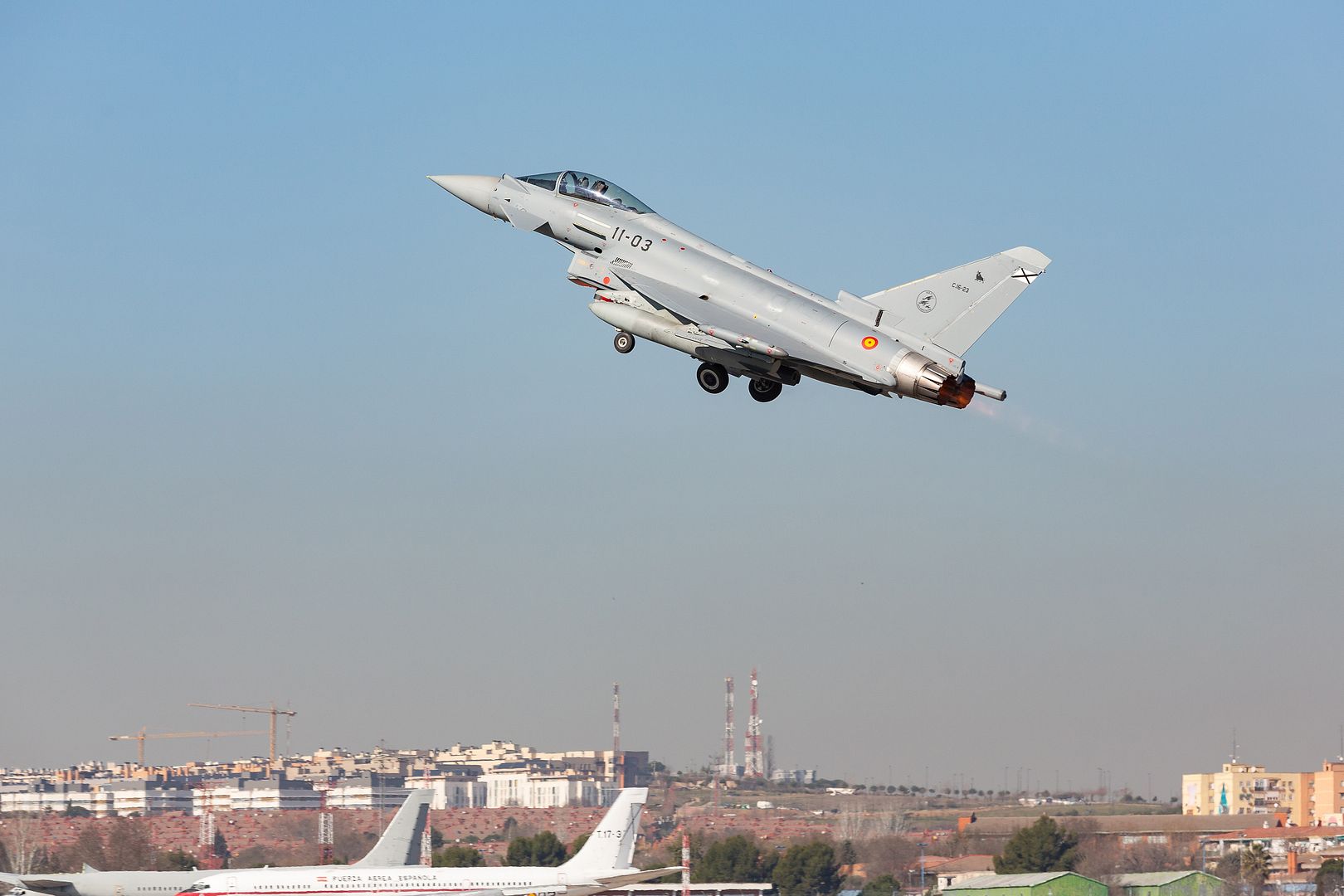
This first single-seat Eurofighter (serial number SS003), to be followed by a second two-seat aircraft currently undergoing the upgrade, will be used initially by CLAEX as a test aircraft for the qualification of these new capabilities that will be implemented on the Air Force?s fleet of 15 Tranche 1 Eurofighters.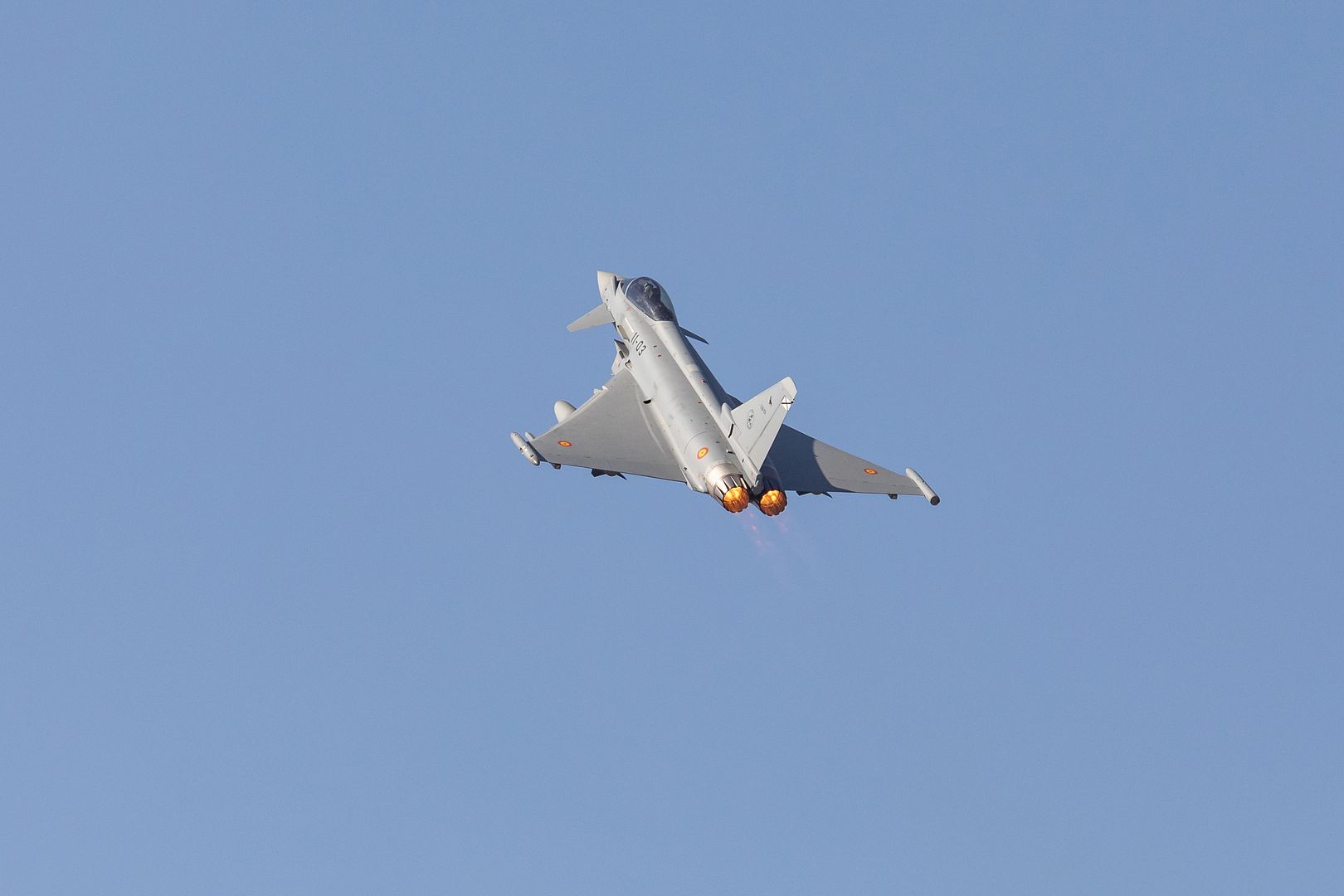
-
 Main AdminAn MV-22B Osprey tiltrotor with Medium Marine tiltrotor squadron 262 aircraft takes off during a simulated raid at Camp Hansen, Okinawa, Japan, Feb. 25, 2019. The 31st MEU, in a groundbreaking command and control exercise, is completing split operations across a large swath of the Indo-Pacific region encompassing at least four geographic locations ? Okinawa, Japan; aboard the dock landing ship USS Ashland (LSD 48) in the South China Sea; aboard the amphibious transport dock USS Green Bay (LPD 20) in the Gulf of Thailand; and other undisclosed locations. This is the first time any Marine expeditionary unit has completed this level of simultaneous operations ? from rapid-response planning to mission completion ? across such a large geographic region within the Indo-Pacific. The 31st MEU, the Marine Corps? only continuously forward-deployed MEU partnering with the U.S. Navy?s Amphibious Squadron 11, provides a flexible and lethal force ready to perform a wide range of military operations as the premier crisis response force in the Indo-Pacific region. (U.S. Marine Corps Photo by Lance Cpl. Dylan Hess/Released)
Main AdminAn MV-22B Osprey tiltrotor with Medium Marine tiltrotor squadron 262 aircraft takes off during a simulated raid at Camp Hansen, Okinawa, Japan, Feb. 25, 2019. The 31st MEU, in a groundbreaking command and control exercise, is completing split operations across a large swath of the Indo-Pacific region encompassing at least four geographic locations ? Okinawa, Japan; aboard the dock landing ship USS Ashland (LSD 48) in the South China Sea; aboard the amphibious transport dock USS Green Bay (LPD 20) in the Gulf of Thailand; and other undisclosed locations. This is the first time any Marine expeditionary unit has completed this level of simultaneous operations ? from rapid-response planning to mission completion ? across such a large geographic region within the Indo-Pacific. The 31st MEU, the Marine Corps? only continuously forward-deployed MEU partnering with the U.S. Navy?s Amphibious Squadron 11, provides a flexible and lethal force ready to perform a wide range of military operations as the premier crisis response force in the Indo-Pacific region. (U.S. Marine Corps Photo by Lance Cpl. Dylan Hess/Released)
Air Force One prepares to depart from RAF Mildenhall, England, Feb. 26, 2019. Air Force One, carrying President Donald J. Trump and a contingency of White House officials and media members, received fuel and logistical support before continuing on the journey to Hanoi, the capital city of Vietnam, for the president?s second summit North Korean leader Kim-Jong Un. (U.S. Air Force photo by Airman 1st Class Brandon Esau)
A Boeing C-32, known as ?Air Force Two? receives fuel during a stop at RAF Mildenhall, England, Feb. 26, 2019. Along with Air Force One and an E-4B National Airborne Operations Center, the aircraft were in route to Hanoi, the capital city of Vietnam, for President Donald J. Trump?s second summit with North Korean leader Kim Jong-Un. (U.S. Air Force photo by Airman 1st Class Brandon Esau)
Air Vanuatu, the national flag carrier of the Pacific island nation of Vanuatu, has signed a firm order with Airbus for four A220s (two A220-100s and two A220-300s). Air Vanuatu?s first ever order with Airbus makes it the launch customer of the A220 in the Pacific region.
Based at Bauerfield International Airport in the capital Port Vila, Air Vanuatu operates to 26 domestic airports and internationally to Australia, New Zealand, Fiji and New Caledonia. It began services in 1987, and has played a vital role in establishing Vanuatu as a tourist and investment destination. Currently the airline operates a Boeing 737 and ATR 72 fleet.
Air Vanuatu Chief Executive Officer Derek Nice said: ?We are proud to be the launch airline in the South Pacific of the best-in-class Airbus A220. These aircraft will be deployed to operate on our current domestic and international routes, including our newly announced non-stop Melbourne-Vanuatu service, and will bolster plans to expand our network in the South Pacific.?
?By ordering the A220, Air Vanuatu is making a significant investment in advanced technology and superior passenger comfort, while demonstrating its respect for fuel efficiency and the environment. Air Vanuatu?s decision to place the Airbus A220 at the centre of its expansion plans will surely keep it one step ahead of the competition,? said Christian Scherer, Airbus Chief Commercial Officer.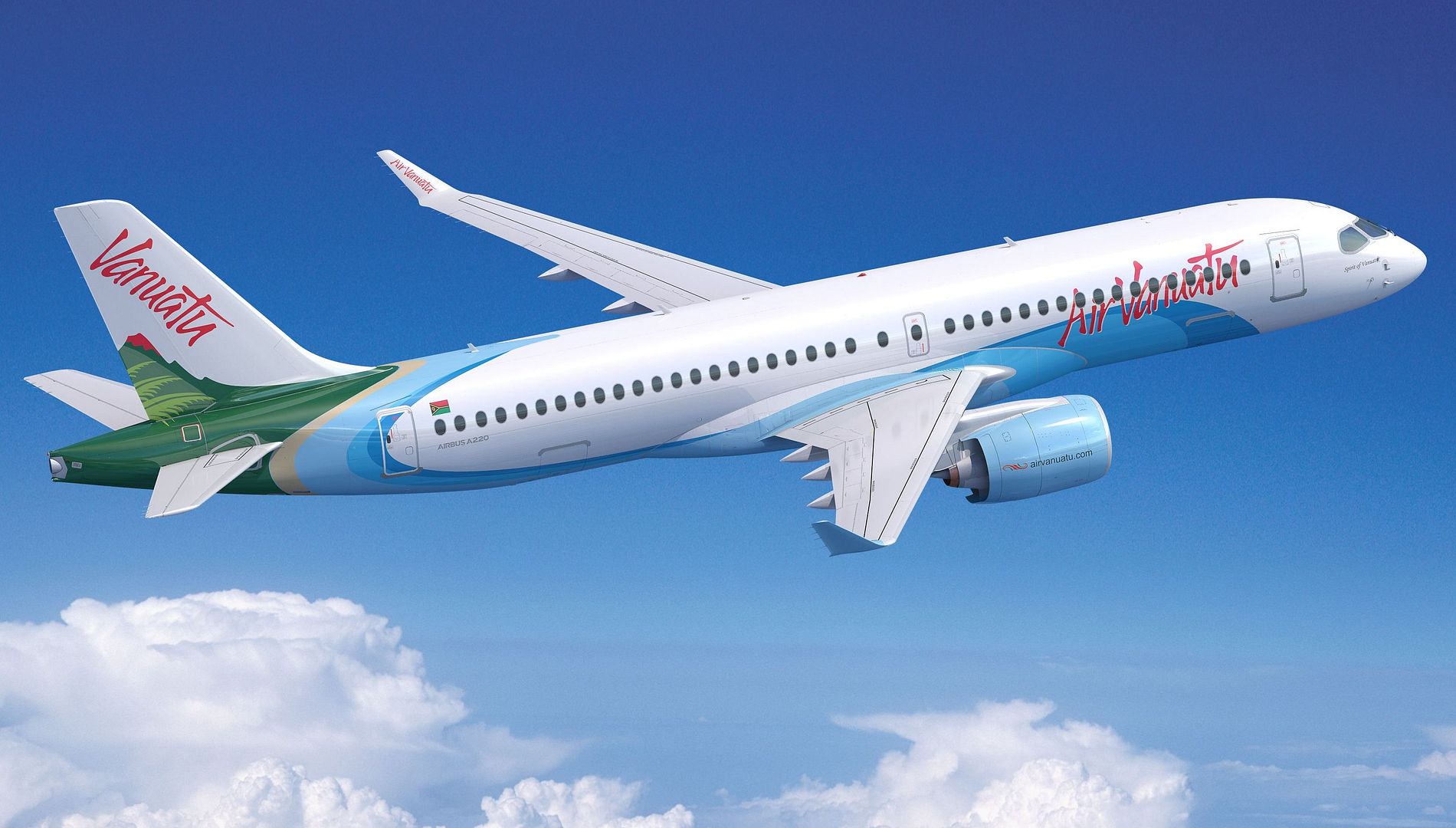
Passengers on board the A220 will experience superior cabin comfort, the widest seats and the largest windows in its market segment. The A220?s performance and range capabilities will enable Air Vanuatu to streamline its current operations and launch a growth plan that is a key pillar of Vanuatu?s economic development goals.
The A220 delivers unbeatable fuel efficiency. It brings together state-of-the-art aerodynamics, advanced materials and Pratt & Whitney?s latest-generation PW1500G geared turbofan engines to offer at least 20% lower fuel burn per seat compared to previous generation aircraft.
With an order book of over 530 aircraft to date, the A220 has all the credentials to win the lion?s share of the 100- to 150-seat aircraft market, estimated to represent at least 7,000 aircraft over the next 20 years.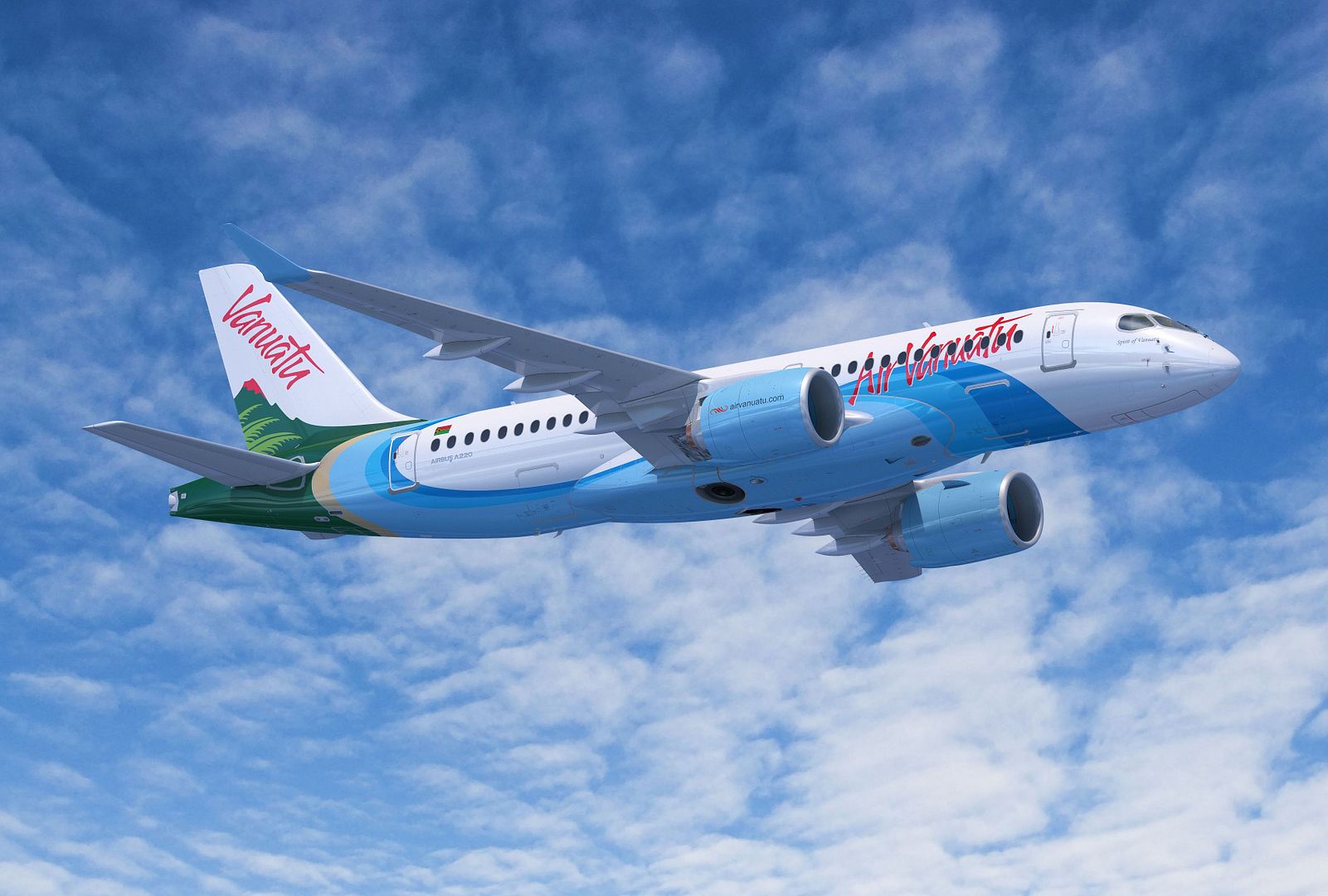
Leonardo has announced today the choice for three AW139 intermediate twin engine helicopters as part of Victoria Police Air Wing?s fleet modernization effort to provide enhanced airborne capabilities. The helicopters will be supplied by StarFlight Victoria to carry out a range of law enforcement, patrol and surveillance, and maritime search and rescue missions from the Essendon Airport on behalf of the Victoria Police Air Wing. The AW139s will be delivered from Leonardo?s Vergiate final assembly line facility in Italy in late 2019 and will enter service in 2020 following dedicated mission customization.
Configured for policing operations across the State of Victoria, the new aircraft will feature a wide range of tailored equipment including, among others, advanced mission console, camera, wire cutter and rescue hoist. This latest contract marks a further outstanding success for the best-selling AW139 in Australia, being already the leading model for Emergency Medical Service (EMS) nationwide. Nearly 120 civil, public utility and military helicopters of various models have been sold by Leonardo in the country to date.
The AW139 is part of the Leonardo?s Family of new generation helicopters that also includes the AW169 and AW189 models, which possess the same high performance flight characteristics and safety features as well as sharing a common cockpit layout, design philosophy and maintenance/training concept. These helicopters are ideal for law enforcement, EMS and parapublic missions thanks to their capability, reliability and safety.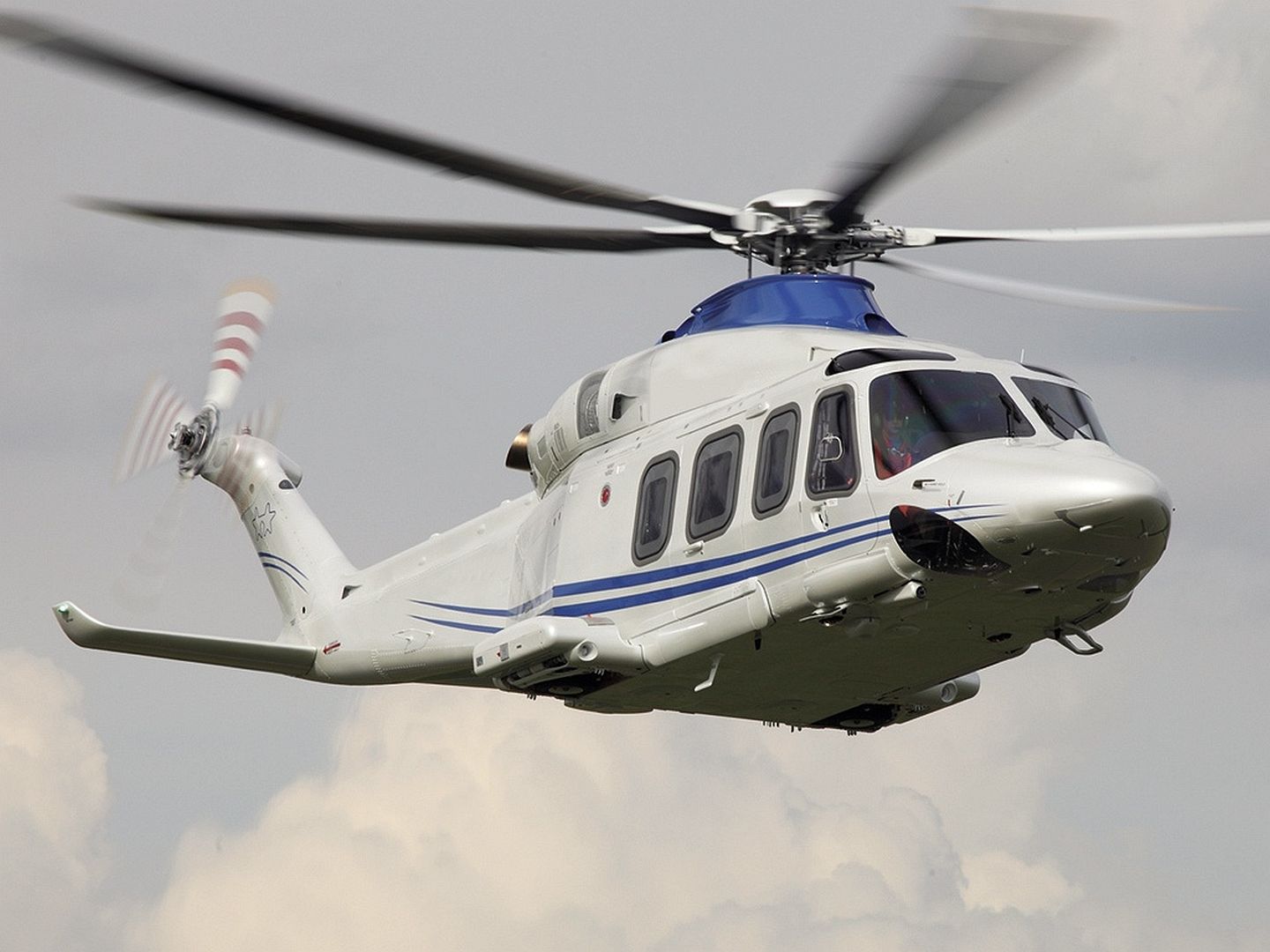
-
 Main AdminU.S. Air Force A-10 Thunderbolt II aircraft assigned to the 442nd Fighter Wing, Whiteman Air Force Base, Missouri, escort MV-22B Osprey assigned to Marine Medium Tiltrotor Squadron (VMM) 268, Hawaii, Feb. 26, 2019. U.S. Marines with Weapons Company, 2nd Battalion, 3rd Marine Regiment and VMM-268 along with A-10 Thunderbolt II conducted training consisting of a simulated tactical recovery of aircraft personnel scenario and a combat search and rescue scenario. (U.S. Marine Corps photo by Sgt. Alex Kouns)
Main AdminU.S. Air Force A-10 Thunderbolt II aircraft assigned to the 442nd Fighter Wing, Whiteman Air Force Base, Missouri, escort MV-22B Osprey assigned to Marine Medium Tiltrotor Squadron (VMM) 268, Hawaii, Feb. 26, 2019. U.S. Marines with Weapons Company, 2nd Battalion, 3rd Marine Regiment and VMM-268 along with A-10 Thunderbolt II conducted training consisting of a simulated tactical recovery of aircraft personnel scenario and a combat search and rescue scenario. (U.S. Marine Corps photo by Sgt. Alex Kouns)
A U.S. Marine Corps EA-6B Prowler taxis down the flight line at Marine Corps Air Station Cherry Point, North Carolina, Feb. 26, 2019. Marine Tactical Electronic Warfare Squadron (VMAQ) 2 flew the aircraft in preparation for their final flight as the last remaining Prowler squadron in the Marine Corps. The aircraft is assigned to VMAQ-2, Marine Aircraft Group 14, 2nd Marine Aircraft Wing. (U.S. Marine Corps photo by Cpl. Jered T. Stone)
A U.S. Air Force A-10 Thunderbolt II pilot assigned to the 303rd Fighter Squadron sits on the flightline during Forward Arming and Refueling training at Pacific Missile Range Facility, Hawaii, Feb. 25, 2019. The training increases interoperability between sister-services and demonstrates the A-10's capability of being the only fighter-type aircraft able to land in austere environments. (U.S. Air Force photo by Senior Airman Missy Sterling)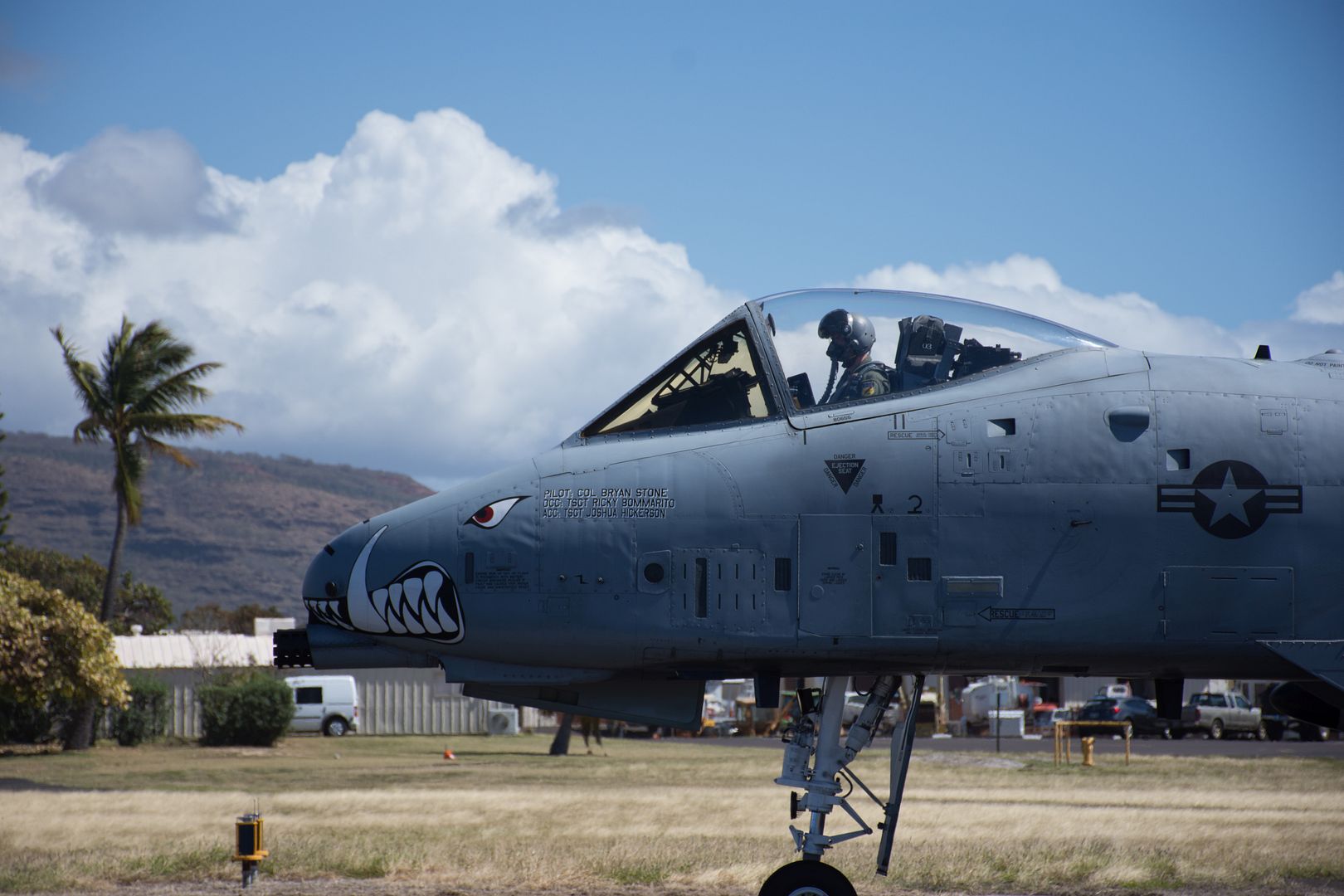
An MV-22B Osprey tiltrotor helicopter with the Marine Medium Tiltrotor Squadron 268 takes off at Landing Zone 216 after recovering a simulated downed aircraft pilot during a combat search and rescue training at Marine Corps Base Hawaii, Feb. 26, 2019. The CSAR training enhanced joint service crisis response capabilities to include locating, communicating, providing medical attention and recovering the isolated member. (U.S. Air Force photo by Senior Airman Missy Sterling)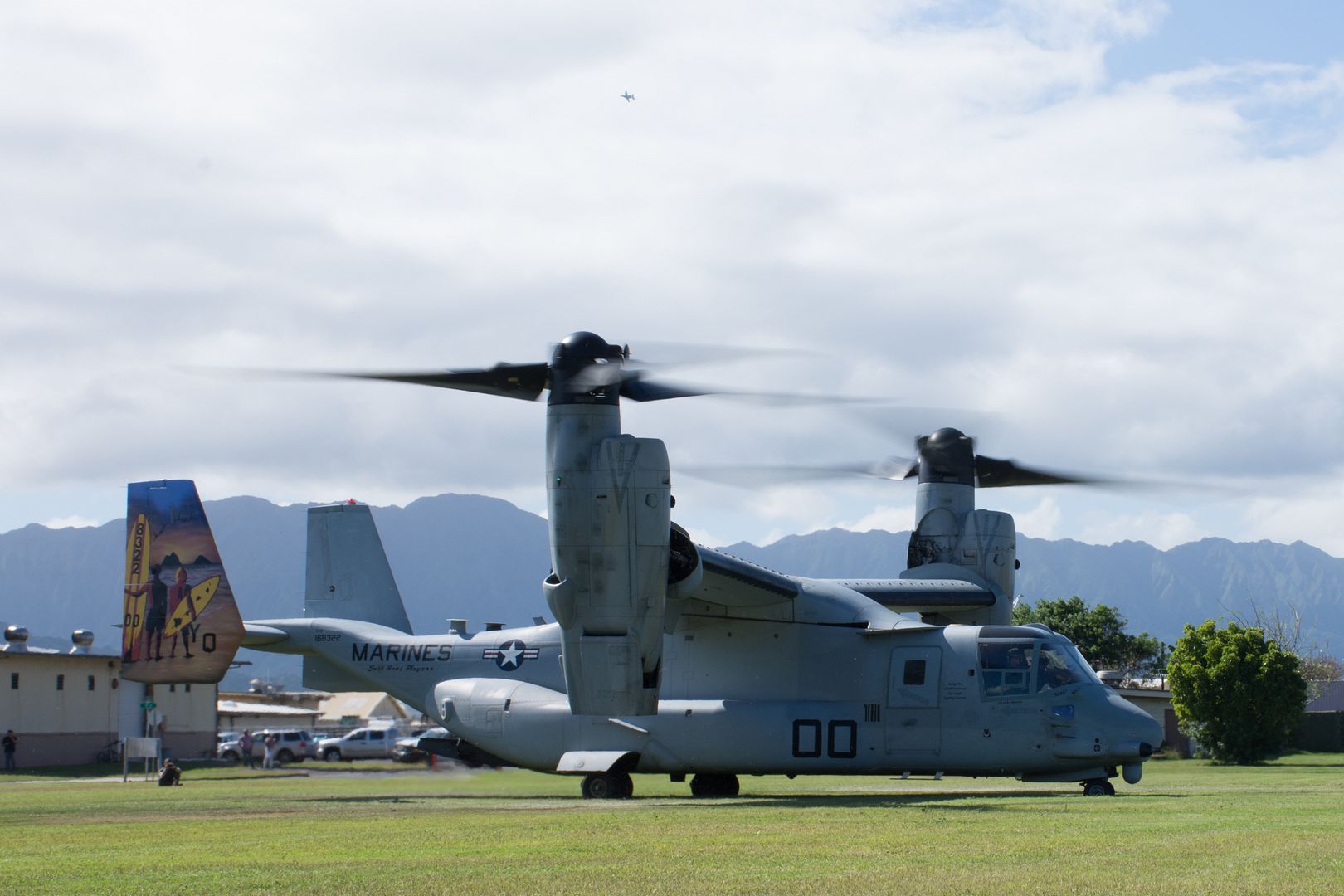
Airmen for the 27th Special Operations Logistics Readiness Squadron stand outside a F-35A aircraft after Forward Area Refueling Point training at Cannon Air Force Base, N.M., Feb. 26, 2019. (U.S. Air Force photo by Staff Sgt. Luke Kitterman)
Airmen from the 27th Special Operations Logistics Readiness Squadron refuel a F-35A aircraft during Forward Area Refueling Point training at Cannon Air Force Base, N.M., Feb. 27, 2019. This was the first time FARP training was conducted by an MC-130J for the F-35A aircraft as it expands its reach and capabilties. (U.S. Air Force photo by Staff Sgt. Luke Kitterman)
A refueling hose splits in two directions out of the back of a MC-130J during the start of Forward Area Refueling Point training for F-35A aircraft at Cannon Air Force Base, N.M., Feb. 27, 2019. This was the first time FARP training was conducted by an MC-130J for the F-35A aircraft as it expands its reach and capabilties. (U.S. Air Force photo by Staff Sgt. Luke Kitterman)
An F/A-18E Super Hornet, assigned to Strike Fighter Squadron (VFA) 97, launches from the flight deck of the aircraft carrier USS John C. Stennis (CVN 74) in the South China Sea, Feb. 26, 2019. The John C. Stennis is deployed to the U.S. 7th Fleet area of operations in support of security and stability in the Indo-Pacific region. (U.S. Navy photo by Mass Communication Specialist Seaman Jeffery L. Southerland)
WEST PALM BEACH, Fla., Feb. 27, 2019 /PRNewswire/ -- Two fully assembled HH-60W Combat Rescue Helicopters (CRH), built by Sikorsky, a Lockheed Martin company (NYSE: LMT), are preparing for their maiden flights, which will occur before mid-year at the Sikorsky West Palm Beach site in Florida.
Both aircraft, which are being built for the U.S. Air Force, were transported late last year to West Palm Beach following final assembly at Sikorsky's facility in Stratford, Connecticut. The aircraft test readiness review was completed in October 2018. The CRH HH-60W flight test team is currently preparing both aircraft for flight by conducting final installation of instrumentation and ground run testing. This marks formal entry into the flight test program that culminates in Ready Assets Available (RAA), allowing the Air Force to declare Initial Operational Capability (IOC).
"Having these initial HH-60W helicopters in West Palm Beach for flight test is an exciting time for the Sikorsky team. It is the first step toward a low rate initial production decision later this year, which will allow Sikorsky to provide a constant production flow of aircraft to the warfighter," said Greg Hames, Sikorsky director, Combat Rescue Helicopter program. "This is the point in the program when Sikorsky begins providing new aircraft into the warfighters' hands, initiating transition to the vastly more capable and reliable HH-60W Combat Rescue Helicopter."
The first of the two HH-60W aircraft will enter flight test with the new Tactical Mission Kit. The integration of sensors, radar, and multiple defense systems will bring added intelligence into the cockpit, enhancing pilots' situational awareness to complete missions, which is key to improving aircraft and isolated personnel survivability. Sikorsky's HH-60W team completed the System Configuration Test Readiness Review milestones for the Tactical Mission Kit last year.
The HH-60W hosts a new fuel system that nearly doubles the capacity of the internal tank on a UH-60M Black Hawk, giving the Air Force crew extended range and more capability to rescue those injured in the battle space. The CRH specification drives more capable defensive system, vulnerability reduction, weapons, cyber-security, environmental, and net-centric requirements than currently held by the HH-60G.
"Our team is working every day to build and deliver a superior quality helicopter to the U.S. Air Force for this critical mission," added Hames. "Both Sikorsky and the Air Force remain committed to achieving a low rate initial production decision this year and getting this much-needed aircraft to our air men and women out in the field."
A total of nine aircraft will be built in Connecticut during the Engineering Manufacturing Development (EMD) phase of the program ? four EMD aircraft and five System Demonstration Test Articles. The Air Force program of record calls for 112 helicopters to replace its aging HH-60G Pave Hawk helicopters.
MELBOURNE, Australia, Feb. 27, 2019 ? Boeing [NYSE: BA] has introduced its newest unmanned platform, the Boeing Airpower Teaming System.
Designed for global defense customers by Boeing Australia, it is the company?s largest investment in a new unmanned aircraft program outside the United States.
The aircraft will complement and extend airborne missions through smart teaming with existing military aircraft.
A model of the Boeing Airpower Teaming System was unveiled at the Australian International Airshow by the Australian Minister for Defence, the Hon. Christopher Pyne MP. As a research and development activity, the Australian Government and Boeing will produce a concept demonstrator called the Loyal Wingman ? Advanced Development Program that will provide key learnings toward the production of the Boeing Airpower Teaming System.
?The Boeing Airpower Teaming System will provide a disruptive advantage for allied forces? manned/unmanned missions,? said Kristin Robertson, vice president and general manager of Boeing Autonomous Systems. ?With its ability to reconfigure quickly and perform different types of missions in tandem with other aircraft, our newest addition to Boeing?s portfolio will truly be a force multiplier as it protects and projects air power.?
The Boeing Airpower Teaming System will:
-- Provide fighter-like performance, measuring 38 feet long (11.7 metres) and able to fly more than 2,000 nautical miles
-- Integrate sensor packages onboard to support intelligence, surveillance and reconnaissance missions and electronic warfare
-- Use artificial intelligence to fly independently or in support of manned aircraft while maintaining safe distance between other aircraft.
?This aircraft is a historic endeavor for Boeing. Not only is it developed outside the United States, it is also designed so that our global customers can integrate local content to meet their country-specific requirements,? said Marc Allen, president, Boeing International. ?The Boeing Airpower Teaming System provides a transformational capability in terms of defense, and our customers ? led by Australia ? effectively become partners on the program with the ability to grow their own sovereign capabilities to support it, including a high-tech workforce.?
First flight is planned for 2020.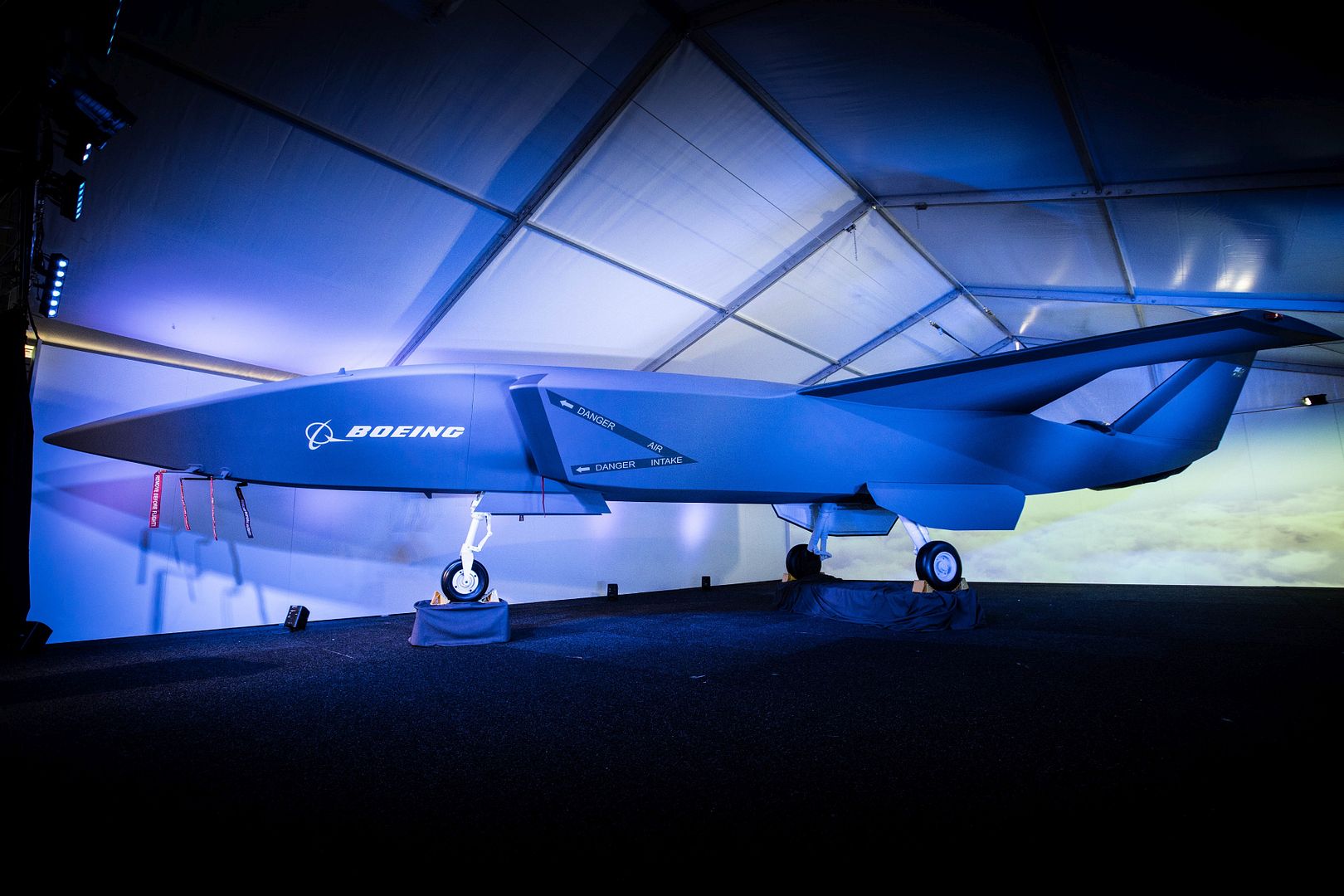
HANOI, Vietnam, Feb. 27, 2019 /PRNewswire/ -- Boeing [NYSE:BA] and Vietjet [HOSE: VJC] confirmed that the innovative and growing Vietnamese carrier has purchased 100 additional 737 MAX airplanes, taking their MAX order book to 200 jets. During a signing ceremony today in Hanoi, United States President Donald Trump and Vietnamese Communist Party General Secretary and President Nguyen Phu Trong joined leaders of both companies to unveil the $12.7 billion order, according to list prices.
The deal includes 20 MAX 8s and 80 of the new, larger MAX 10 variant, which will have the lowest seat-mile costs for a single-aisle airplane and be the most profitable jet in its market segment. The order was previously unidentified on Boeing's Orders & Deliveries website.
In ordering 80 MAX 10s, Vietjet becomes the largest Asian customer of the airplane type. The carrier plans to use the added capacity to meet growing demand across Vietnam, as well as to serve popular destinations throughout Asia.
"The deal for 200 Boeing 737 MAX airplanes today is an important move for us to keep up with our international flight network expansion plan with a higher capacity, thus offering our passengers with more exciting experiences when being able to fly to more new international destinations," said Madam Nguy?n Th? Ph??ng Th?o, President and CEO of Vietjet. "I believe that our fleet will have breakthroughs thanks to new-generation technologies, which helps improve flight quality and enhance operational reliability, while reducing operating costs in the future. Passengers will then have more opportunities to fly with reasonable fares. The contract signing ceremony, which is witnessed by the top leaders of Vietnam and the US on the occasion of the US-North Korea Summit in Hanoi, will mark a milestone in the two companies' growth path."
Vietjet placed its first order for 100 737 MAX airplanes in 2016, which set the mark for the largest commercial jet purchase in Vietnam's aviation sector at the time.
"We are pleased to expand our partnership with Vietjet and to support their impressive growth with new, advanced airplanes such as the 737 MAX. We are confident the MAX will help Vietjet grow more efficiently and provide great travel experiences for their passengers," said Boeing Commercial Airplanes President & CEO Kevin McAllister. "The economic expansion in Hanoi and across Vietnam is impressive. Vietjet and the country's burgeoning aviation sector are clearly enablers, helping to stimulate travel within Vietnam and connecting Vietnam with the rest of Asia. We are proud to support this economic development, which in turn supports engineering and manufacturing jobs in the United States."
In addition to airplane purchases, Boeing will partner with Vietjet to enhance technical and engineering expertise, train pilots and technicians, and improve management capabilities at the airline and in Vietnam.
The carrier also uses Boeing's digital solutions to optimize its operations, including flight planning & Tech Log Book.
About the 737 MAX
The 737 MAX family is powered by CFM International LEAP-1B engines, and includes design updates such as Boeing's Advanced Technology winglet that reduces drag and further optimizes the 737 MAX performance, especially on longer-range missions. Together, these improvements reduce fuel use and CO2 emissions by at least 14 percent compared to today's Next-Generation 737s ? and by 20 percent more than the single-aisle airplanes they replace.
The 737 MAX 10 is the largest variant in the family. At 43.8 meters (143 feet 8 inches) long, the airplane can seat a maximum of 230 passengers and offer airlines the lowest seat-mile costs in the single-aisle market.
The 737 MAX is the fastest-selling airplane in Boeing history with about 5,000 orders from more than 100 customers worldwide. For more information, visit www.boeing.com/commercial/737max.
About Vietjet
Vietjet is the first airline in Vietnam to operate as a new-age airline offering flexible, cost-saving ticket fares and diversified services to meet customers' demands. It provides not only transport services but also uses the latest e-commerce technologies to offer various products and services for consumers. Vietjet is a member of International Air Transport Association (IATA) with the IATA Operational Safety Audit (IOSA) certificate. Vietjet was named "Best Ultra Low-Cost Airline 2018 - 2019" and awarded the highest ranking for safety with 7 stars in 2018 by safety and product rating website AirlineRatings.com. Currently, Vietjet offers more than 385 flights daily, carrying more than 65 million passengers to date, with 106 routes covering destinations across Vietnam and international destinations such as Japan, Hong Kong, Singapore, South Korea, Taiwan, mainland China, Thailand, Myanmar, Malaysia and Cambodia. For more information, visit www.vietjetair.com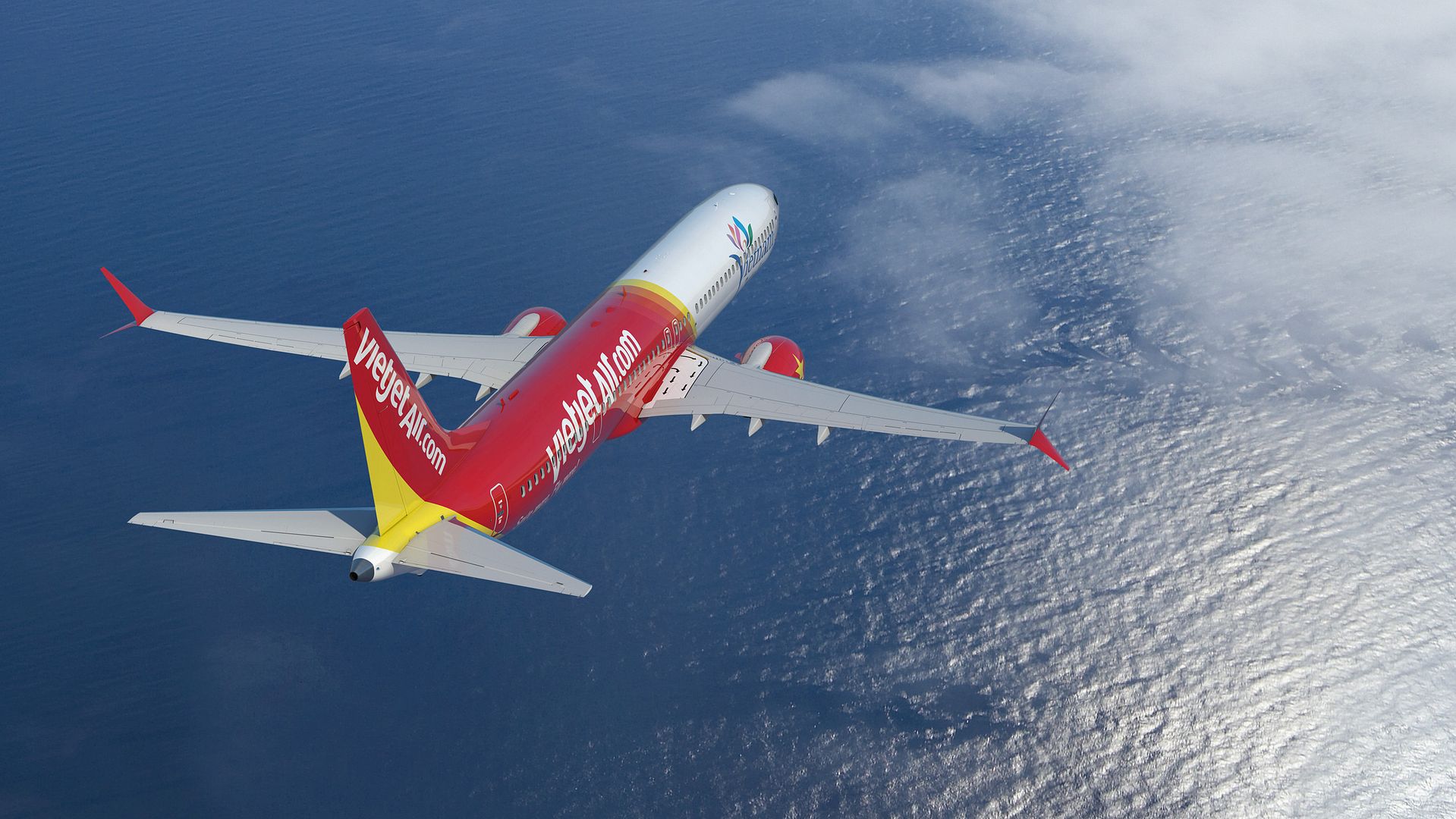
HANOI, Vietnam, Feb. 27, 2019 /PRNewswire/ -- Boeing [NYSE: BA] and Bamboo Airways today confirmed an order for 10 787-9 Dreamliners valued at $3 billion according to list prices. The order for the super-efficient and longest-range member of the Dreamliner family was unveiled during a signing ceremony in Hanoi, witnessed by U.S. President Donald Trump and General Secretary and President of Vietnam Nguyen Phu Trong.
"We are excited to be adding the new 787 Dreamliner to our growing fleet," said Mr. Trinh Van Quyet, Chairman of FLC Group and owner of Bamboo Airways. "Our long-term vision is to connect Vietnam with key markets in Asia, Europe and North America and the Dreamliner will enable us to launch these long-haul operations. The 787's superior operating economics and efficiency, as well as the passenger pleasing interior of the Dreamliner, will allow us to successfully grow our business while enabling us to better serve our customers."
This order was previously unidentified on Boeing's Orders & Deliveries website.
Bamboo Airways, a startup airline founded in 2017, began commercial operations in January, offering flights linking the capital of Hanoi and Ho Chi Minh City with cities in Vietnam. The airline plans on offering up to 40 domestic routes in 2019. Additionally, Bamboo is preparing to launch international service to Thailand, South Korea, Singapore, Japan, Taiwan and Australia, before broadening service to other destinations in Asia, Europe, and North America.
"The 787 Dreamliner's unmatched efficiency, range and flexibility make it the perfect airplane for Bamboo Airways to achieve its long-range ambitions. We are excited to advance the partnership between Boeing and Bamboo Airways and we look forward to helping them connect Asia with Europe, North America and beyond," said Kevin McAllister, president and CEO of Boeing Commercial Airplanes.
The 787 Dreamliner family allows airlines to fly long ranges while reducing fuel costs by more than 20 percent compared to previous widebody jets. The Dreamliner's superior efficiency and range have allowed airlines to open more than 210 new non-stops routes around the world since it entered service.
At 63 meters (206 feet), the 787-9 can fly 290 passengers, in a typical two-class configuration, up to 7,635 nautical miles (14,140 kilometers). The airplane is 6 meters longer than the original Dreamliner and is capable of carrying more passengers and flying farther.
The 787 Dreamliner is the fastest-selling widebody airplane in history with more than 1,400 orders from 75 customers since its launch. Nearly 800 Dreamliners have entered service around the world, helping airlines save 33 billion pounds of fuel.
Bamboo Airways is wholly-owned by the FLC Group, a Vietnamese multi-industry company, focusing on aviation, real estate, resorts, farming, and golf.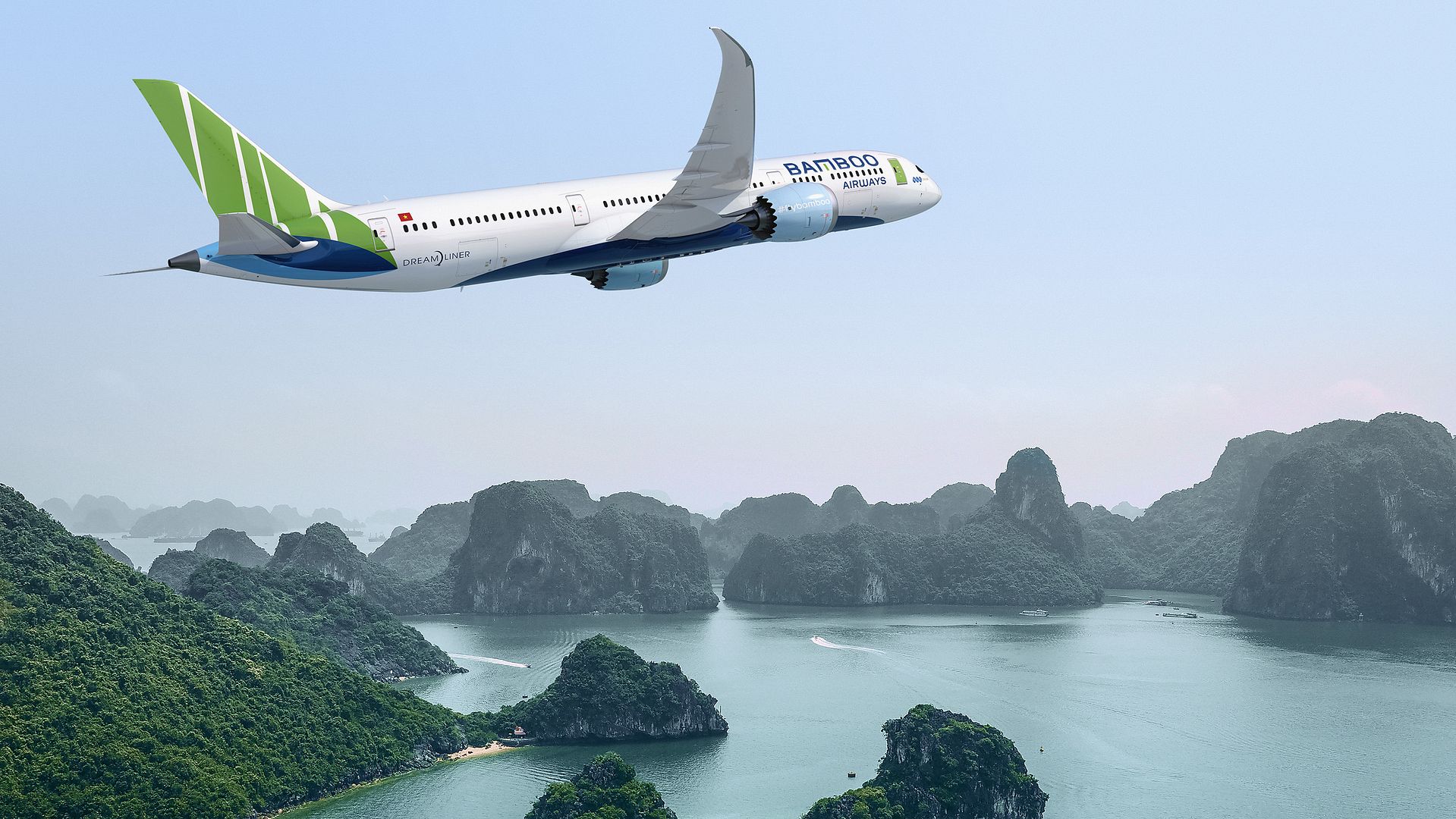
SEATTLE, Feb. 26, 2019 ? Boeing [NYSE:BA] delivered the first 737 MAX 8 to Comair Limited, which becomes the first airline in sub-Sahara Africa to operate the fuel-efficient jet. The airplane is the first of eight 737 MAX airplanes on order for Comair as the airline looks to refresh its fleet and offer better service for its passengers.
?The arrival of the MAX 8 aircraft is a continuation of our fleet renewal programme and builds on the most modern and efficient fleet in South Africa,? said Wrenelle Stander, Executive Director, Comair?s Airline Division. ?It is the first of these aircraft to operate in Southern Africa. These newer aircraft, which showcase state-of-the-art technology, will improve our customer experience, enable us to hedge against fuel price volatility and enhance our operating efficiency.?
The new airplane enters a growing African aviation market, where the domiciled fleet has almost doubled in the past two decades. And over the next two decades, Africa will require nearly 1,200 new jets, according to Boeing?s Commercial Market Outlook. Boeing airplanes represent nearly 70 percent of the continent?s in-service fleet.
Comair flies an all-Boeing fleet that includes 18 Next-Generation and seven Classic 737s for its kulula.com and British Airways (operated by Comair) brands. The 737 MAX 8 will allow Comair to achieve 14 percent better fuel efficiency and lower emissions, while flying 600 nautical miles farther than its predecessor.
The MAX?s improved performance is enabled by advanced CFM International LEAP-1B engines, Advanced Technology winglets, and other airframe enhancements. Outfitted with the popular Boeing Sky Interior, the MAX 8 can seat 189 passengers in a single-class configuration.
The 737 MAX family is the fastest-selling airplane in Boeing history, accumulating over 5,000 orders from more than 100 customers worldwide.
?We are delighted to welcome Comair to our growing MAX family. The airline will be able to significantly lower its operating costs, fly farther and provide their customers with a better flying experience,? said Ihssane Mounir, senior vice president of Commercial Sales & Marketing, The Boeing Company. ?From the Classic 737 to the Next-Generation 737 and now to the 737 MAX, we are honored to build on our partnership with Comair and support their success in the years ahead.?
About Comair Limited
Managed and owned by South Africans through its listing on the JSE, Comair has been in operation since 1946 and comprises four business units including its airline division. Comair offers scheduled and non-scheduled airline services within South Africa, Sub-Saharan Africa and the Indian Ocean Islands, as its main business. The Group operates under its low-fare airline brand, kulula.com, as well as under the British Airways livery, as part of a license agreement. Other business units cover tourism and hospitality, aviation training and aviation IT solutions.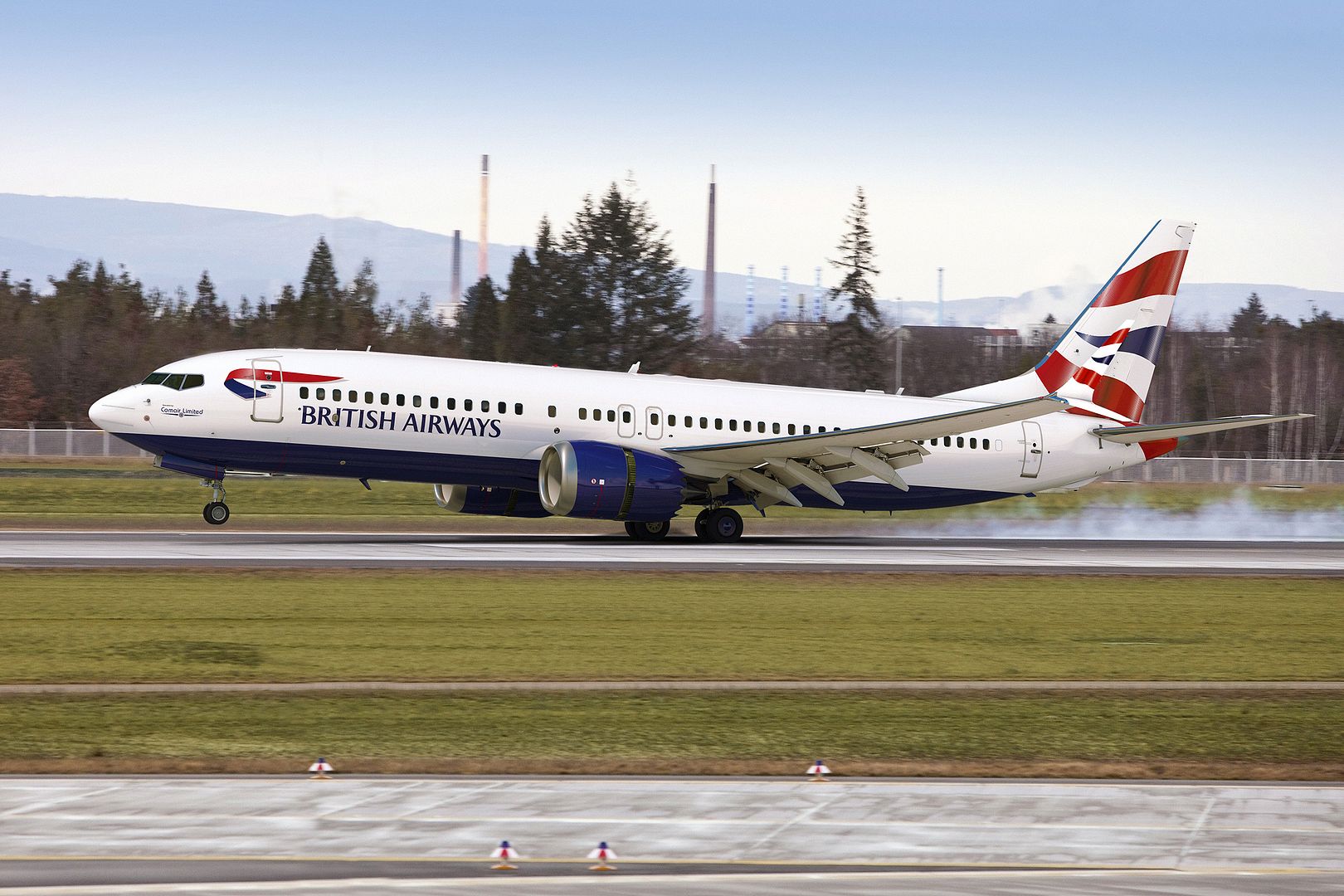
-
 Main AdminF-22 Raptors from the 1st Fighter Wing and 192nd Fighter Wing, participate in a total force exercise at Joint Base Langley-Eustis, Virginia, Feb. 28, 2018. Both wings partnered with 633rd Air Base Wing during the Phase 1 exercise to showcase their readiness and deployability of the F-22s. (U.S. Air Force Photo's by Tech Sgt. Carlin Leslie and Senior Airman Tristan Biese)
Main AdminF-22 Raptors from the 1st Fighter Wing and 192nd Fighter Wing, participate in a total force exercise at Joint Base Langley-Eustis, Virginia, Feb. 28, 2018. Both wings partnered with 633rd Air Base Wing during the Phase 1 exercise to showcase their readiness and deployability of the F-22s. (U.S. Air Force Photo's by Tech Sgt. Carlin Leslie and Senior Airman Tristan Biese)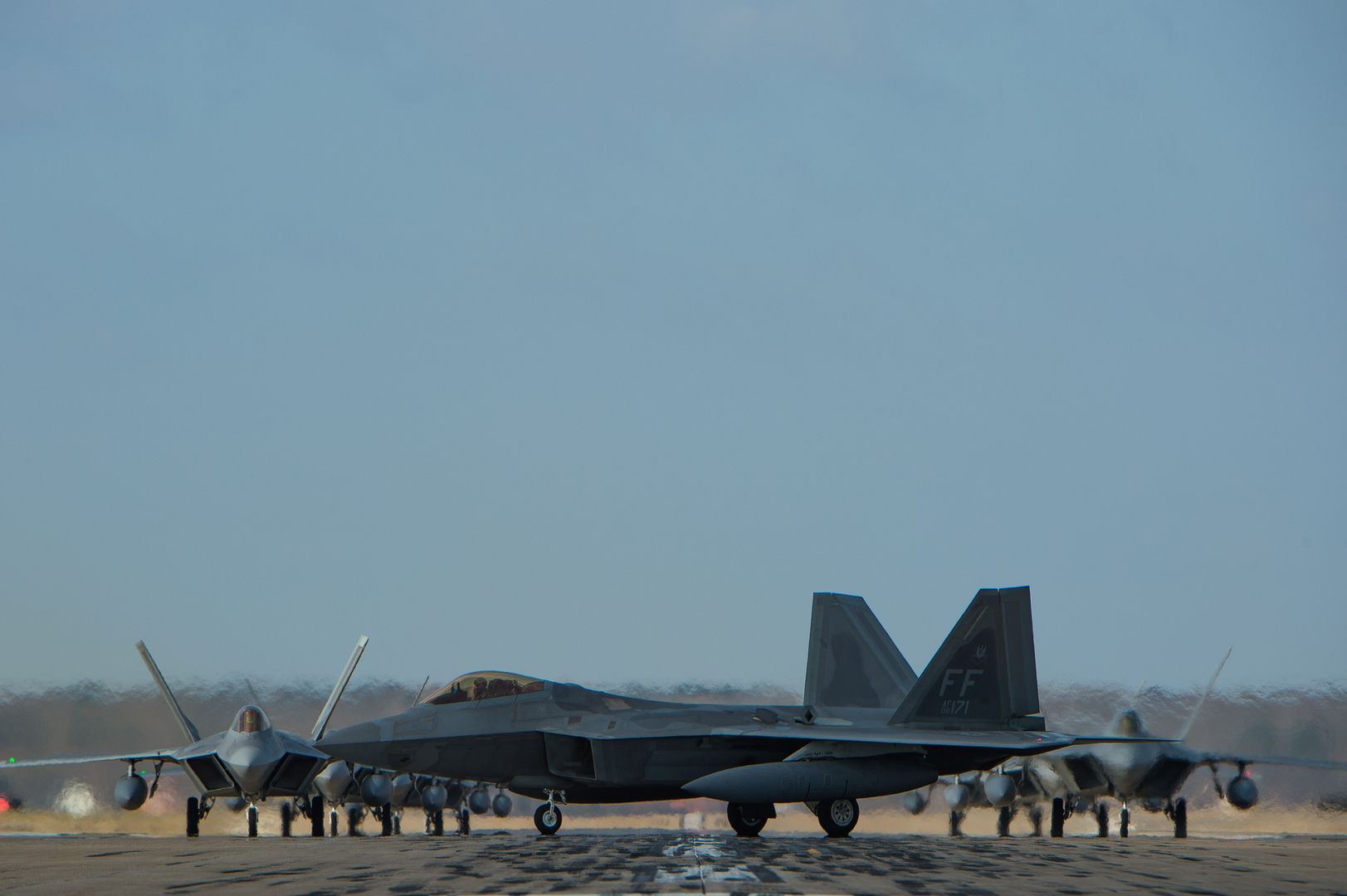

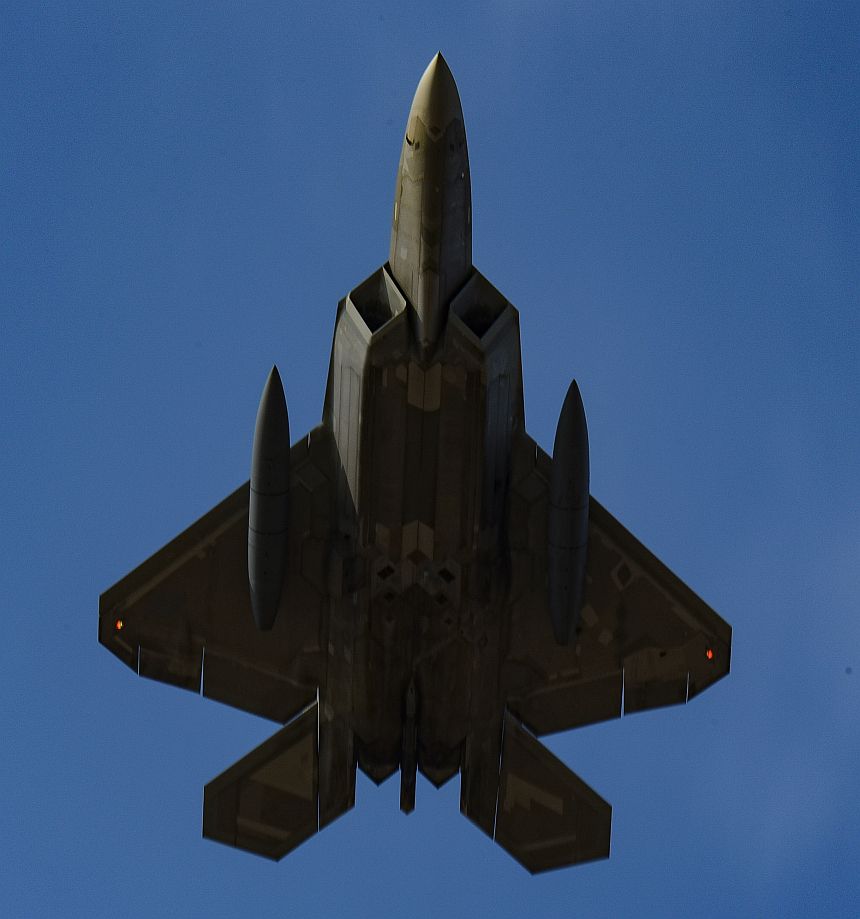
An F/A-18F Super Hornet, assigned to Strike Fighter Squadron (VFA) 41, launches from the flight deck of the aircraft carrier USS John C. Stennis (CVN 74) in South China Sea, Feb. 28, 2019. The John C. Stennis is deployed in the U.S. 7th Fleet area of operations in support of security and stability in the Indo-Pacific region. (U.S. Navy photo by Mass Communication Specialist 3rd Class Skyler Okerman)
NAVAL AIR STATION LEMOORE, Calif. (Feb. 27, 2019) Ten F-35C Lightning II jets of the "Argonauts" of VFA-147 aircraft sit on the flight line at Naval Air Station Lemoore (NASL). Commander, Naval Air Forces, Vice Admiral DeWolfe Miller H. III and United States Marine Corps Deputy Commandant for Aviation (DCA), Lieutenant General Steven R. Rudder jointly announced that the F-35C met all requirements and achieved Initial Operating Capability (IOC) 28FEB. Achieving IOC means the F-35C is available to be used in deployed environments as requested by combatant commanders. (U.S. Navy photo's by Mass Communication Specialist 1st Class Gilbert Bolibol & Mass Communication Specialist 2nd Class Manuel Tiscareno/Released)


LONDON, Feb. 28, 2019 /PRNewswire/ -- Boeing [NYSE: BA] and International Airlines Group, the parent company of British Airways, announced the airline has committed to purchasing up to 42 777X airplanes, including 18 orders and 24 options. The airline joins a group of leading carriers that have selected the new 777-9, which will debut next month as the largest and most efficient twin-engine passenger jet in the world.
The commitment, valued at up to $18.6 billion at list prices, will be reflected on Boeing's Orders and Deliveries website once it is finalized.
"The new 777-9 is the world's most fuel efficient longhaul aircraft and will bring many benefits to British Airways' fleet. It's the ideal replacement for the 747 and its size and range will be an excellent fit for the airline's existing network," said Willie Walsh, IAG chief executive. "This aircraft will provide further cost efficiencies and environmental benefits with fuel cost per seat improvements of 30 per cent compared to the 747. It also provides an enhanced passenger experience."
British Airways has been modernizing its fleet ? one of the largest in the airline industry ? to more efficiently serve its extensive global route network. In recent years, the airline has introduced the super-efficient 787 Dreamliner family to replace its medium-sized widebody jets. The new 777-9 will replace British Airways' larger widebody airplanes, mainly the four-engine 747 jumbo jet.
In ordering the 777-9, British Airways extends a long-running relationship with the popular 777 family. The airline is one of the largest 777 operators with a fleet of nearly 60 of the long-range jet. The airline last year committed to four more 777-300ER (Extended Range) jets via operating lease.
The 777-9 is larger and has a slightly wider cabin than current 777s, which provides the ability to comfortably sit 400-425 passengers in a standard two-class cabin. Powered by 787 Dreamliner technologies, an all-new composite wing, and other enhancements, the 777-9 offers airlines 12 percent lower fuel consumption than competing airplanes. The 777-9 can also fly farther than its predecessors with a standard range of 7,600 nautical miles (14,075 kilometers).
The 777X will also debut a redesigned cabin that incorporates popular 787 features and new technologies. Recently unveiled online, the 777X interior offers larger windows, a wider cabin, new lighting, while providing passengers with a smoother ride, better cabin altitude, humidity, and sound quality.
"British Airways is one of the most iconic international carriers, now in its 100th year of connecting the world with its impressive route network. We are honored that British Airways has selected the 777X as part of its fleet for its next century. Together with the 787 Dreamliner, we are excited for the 777X to help British Airways build on its incredible legacy," said Kevin McAllister, president & CEO of Boeing Commercial Airplanes. "The 777-9, in particular, simply has no competitor in its class when it comes to efficiency and performance. It is the right-sized airplane for British Airways to efficiently serve long-range routes with heavy passenger demand."
The selection by IAG and British Airways puts the 777X at 358 orders and commitments from eight customers. Production of the 777X began in 2017, with first flight planned for this year and first delivery expected in 2020.
-
 Main AdminA Panavia Tornado GR4 prepares to participate in a flypast at Royal Air Force Marham, February 28, 2019. Nine Tornado GR4s, belonging to both the 9th and 31st Squadron at RAF Marham, ended their 40-year service with a 9-ship flypast. (U.S. Air Force photo by Airman 1st Class Shanice Williams-Jones)
Main AdminA Panavia Tornado GR4 prepares to participate in a flypast at Royal Air Force Marham, February 28, 2019. Nine Tornado GR4s, belonging to both the 9th and 31st Squadron at RAF Marham, ended their 40-year service with a 9-ship flypast. (U.S. Air Force photo by Airman 1st Class Shanice Williams-Jones)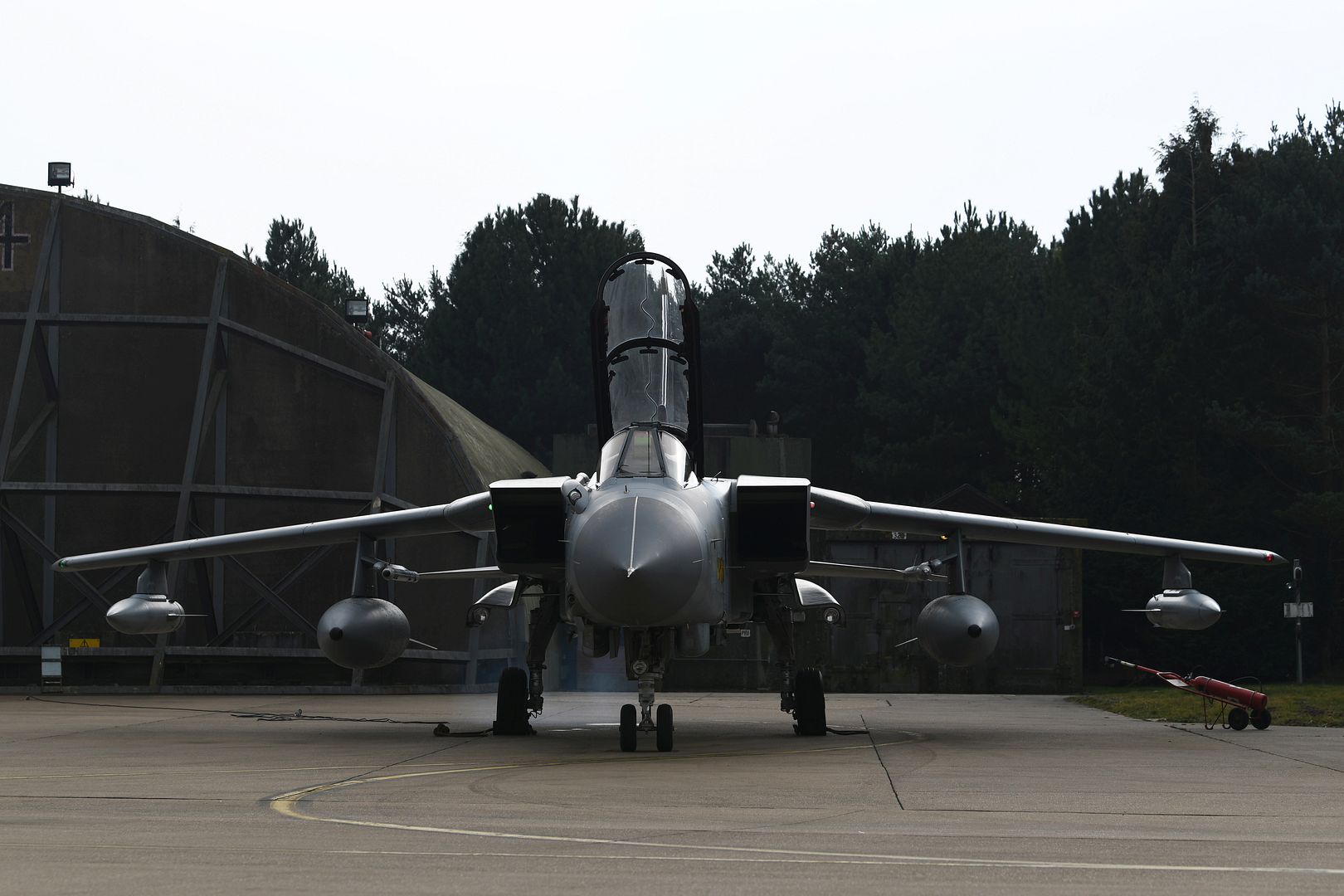
A Tornado GR4 takes off for a flypast at Royal Air Force Marham, February 28, 2019. Nine Tornado GR4s, belonging to both the 9th and 31st Squadron at RAF Marham ended the 40 year consistent service with a 9-ship flypast. (U.S. Air Force photo by Airman 1st Shanice Williams-Jones)
Nine Tornado GR4s belonging to both the 9th and 31st Squadron conducted a 9-ship flypast at RAF Marham, February 28, 2019. The Tornados ended their 40-year service with this year. ( U.S. Air Force photo by Airman 1st Class Shanice Williams-Jones)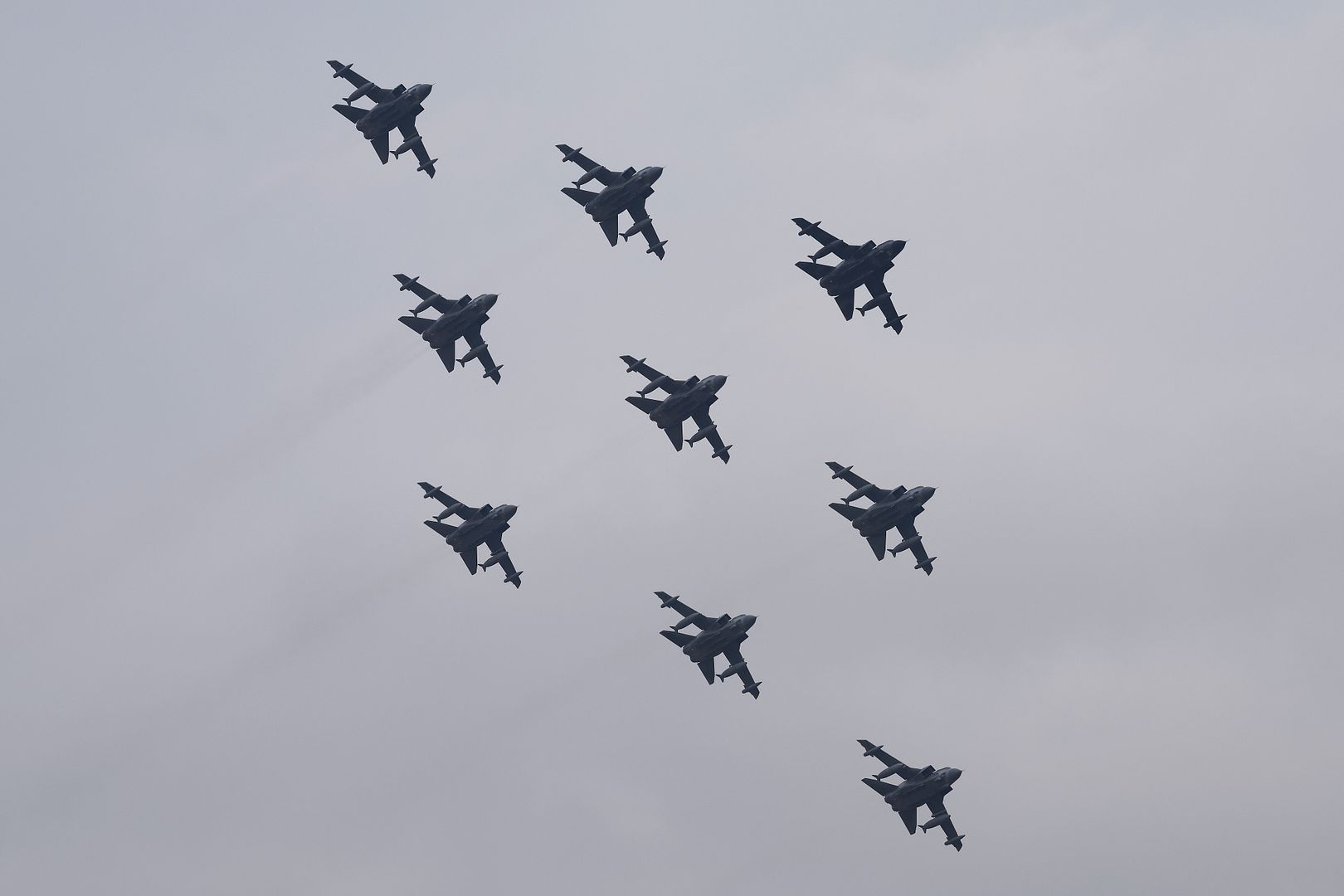
Below photo MOD.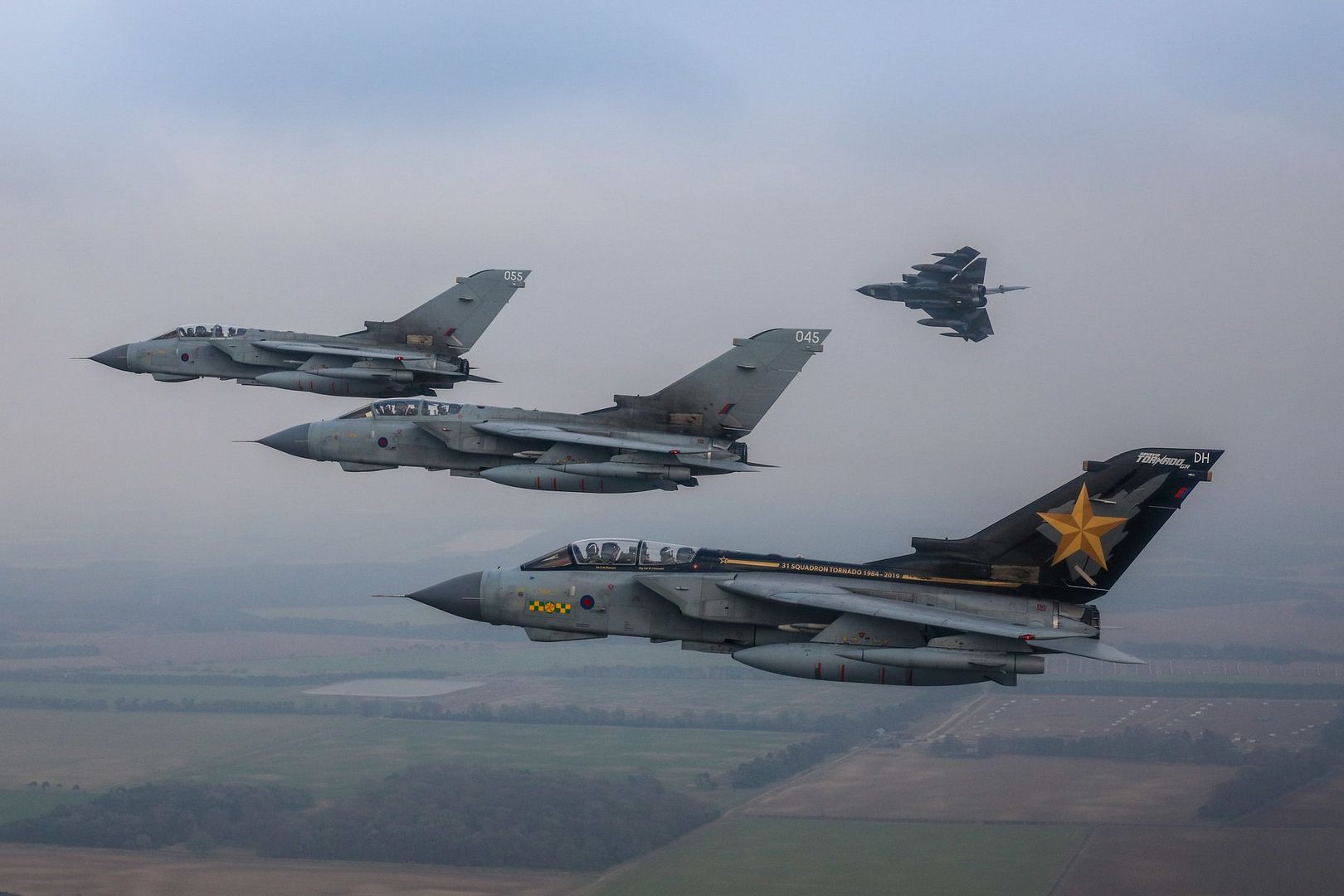
Service members from the United States, Royal Australian Air Force, and Japanese Air Self-Defense Force board a JASDF C-130H for an exercise scenario during Cope North 2019 Feb. 27, 2019, at Andersen Air Force Base, Guam. Service members from the U.S., Royal Australian Air Force, and the Japan Air Self-Defense Force exercised their Humanitarian Assistance and Disaster Relief skills together on Tinian by providing emergency medical care and secure transportation for simulated patients.(U.S. Air Force photo by Tech. Sgt. Jake Barreiro)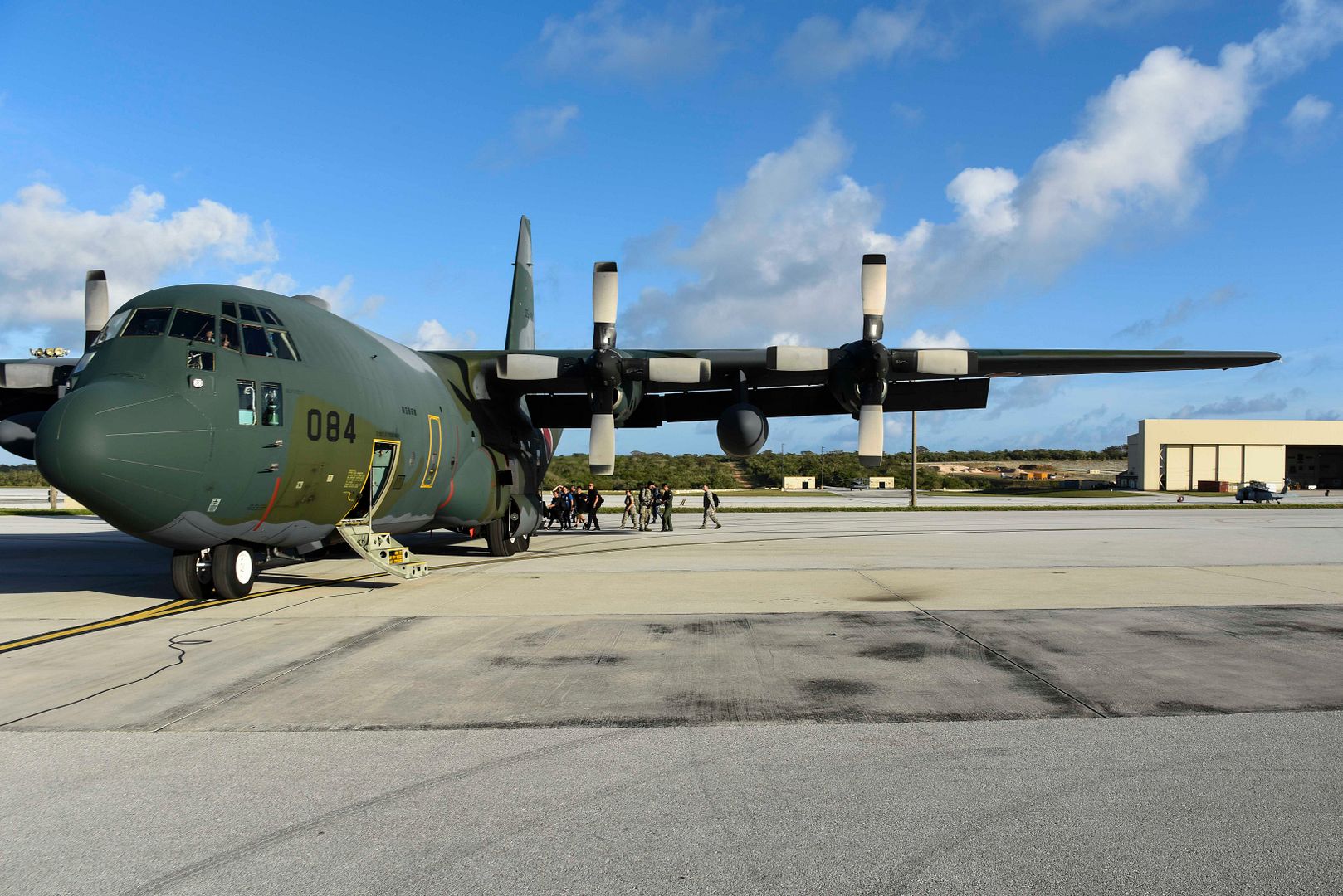
The F-35A Lightning II sits in a hangar loaded with dummy external munitions, Feb. 13, 2019 at Luke Air Force Base, Ariz. After completing the external pylon installation training, the weapons loading standardization crew, a team of three Airmen, became the first team at Luke to be certified on external GBU-12 bomb and AIM-9 missile loading. (U.S. Air Force photo by Airman 1st Class Aspen Reid)
A U.S. Air Force A-10 Thunderbolt II and a Curtiss P-40 Warhawk pass in formation during the annual Heritage Flight Training and Certification Course at Davis-Monthan Air Force Base, Ariz., Feb. 28, 2019.The HFTCC provides civilian and military pilots the opportunity to practice flying in formation together in preparation for future air shows. (U.S. Air Force photo by Senior Airman Giovanni Sims)
A U.S. Air Force A-10 Thunderbolt II and a Curtiss P-40 Warhawk fly in formation during the annual Heritage Flight Training and Certification Course at Davis-Monthan Air Force Base, Ariz., Feb. 28, 2019. During the course, aircrews practice ground and flight training to enable civilian pilots of historic military aircraft and U.S. Air Force pilots of current fighter aircraft to fly safely in formations together. (U.S. Air Force photo by Senior Airman Giovanni Sims)
February 28, 2019
For the first time, Northrop Grumman's RQ-4 Global Hawk autonomous aircraft system has landed during an airshow.
From starting out as a speck in the sky, the aircraft flew in smoothly, landing precisely on the runway before pausing and then taxiing itself to a point where it was towed to the static display area.
This autonomous system has been supporting the U.S. and its allies for nearly two decades around the world. The Block 40 aircraft arrived after a 13-hour, 3,075 nautical mile journey from Andersen Air Force Base.
Global Hawk's important mission is to provide a broad spectrum of data collection capability to support joint combatant forces in worldwide peacetime, contingency, disaster relief and military operations.
With a wingspan of 130 feet ? the same as a 737 - Global Hawk provides near-real-time actionable intelligence for more than 30 hours at a time ? the unblinking eye in the sky, at altitudes of 60,000 feet or 11 miles high.
There are always several Global Hawk systems in the air somewhere in the world 24 hours a day; 7 days a week; 365 days a year, with flight crews operating the system halfway across the world out of harm?s way.
Welcomed by an excited crowd, this historic first for Global Hawk was made possible due to the support of and partnership with the United States Air Force, in collaboration with the Royal Australian Air Force and airshow organizers.
By Faith Jennings.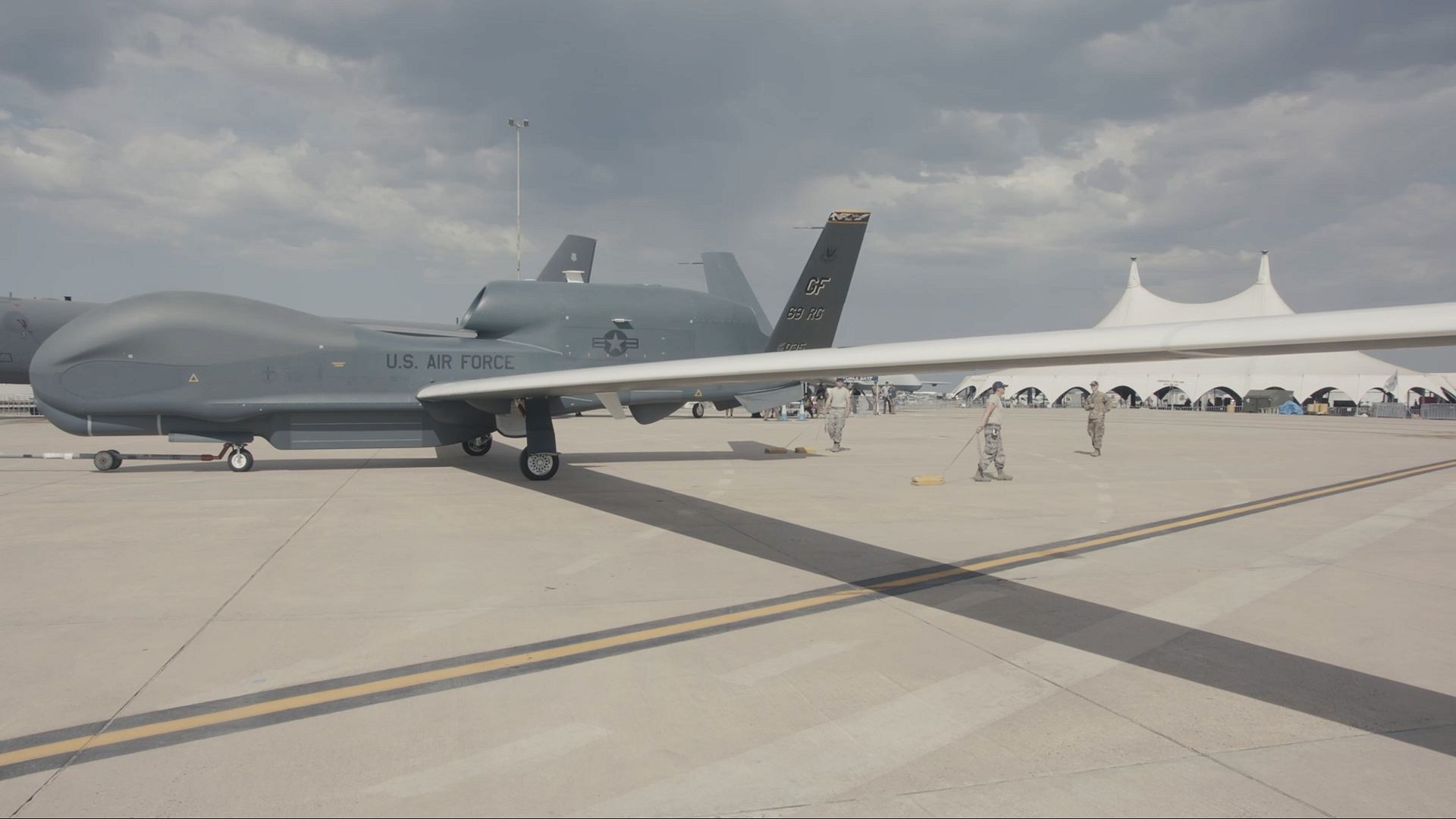
-
 Main AdminCHERRY POINT, N.C. (Feb. 28, 2019) Two U.S. Marine Corps EA-6B Prowlers assigned to Marine Tactical Electronic Warfare Squadron (VMAQ) 2, fly off the coast of North Carolina, Feb 28, 2019. VMAQ-2 is conducting its last flights prior to their deactivation on March 8, 2019. VMAQ-2 is a subordinate unit to Marine Aircraft Group 14, 2nd Marine Aircraft Wing. (U.S. Marine Corps photo by Lance Cpl. Liam D. Higgins/Released)
Main AdminCHERRY POINT, N.C. (Feb. 28, 2019) Two U.S. Marine Corps EA-6B Prowlers assigned to Marine Tactical Electronic Warfare Squadron (VMAQ) 2, fly off the coast of North Carolina, Feb 28, 2019. VMAQ-2 is conducting its last flights prior to their deactivation on March 8, 2019. VMAQ-2 is a subordinate unit to Marine Aircraft Group 14, 2nd Marine Aircraft Wing. (U.S. Marine Corps photo by Lance Cpl. Liam D. Higgins/Released)
PALMDALE, Calif. ? March 1, 2019 ? Northrop Grumman Corporation?s (NYSE: NOC) Palmdale Aircraft Integration Center of Excellence has been named the Quality Plant of the Year by Quality Magazine. Each year the publication awards this recognition to a manufacturing plant in the U.S.
?Quality is engrained in our team,? said Cory Carruth, vice president and Palmdale site manager, Northrop Grumman. ?It?s part of our culture and something our employees take very personal as it?s critical to the safety of our warfighters.?
According to Quality Magazine, the award recognizes a manufacturing facility that uses world-class technology, equipment, services and techniques to reduce scrap, rework, warranty or manufacturing costs; improve productivity or cycle time; increase capacity; or improve adherence to quality standards.
As a core value at Northrop Grumman, quality is personal to its employees and foundational to all aspects of production.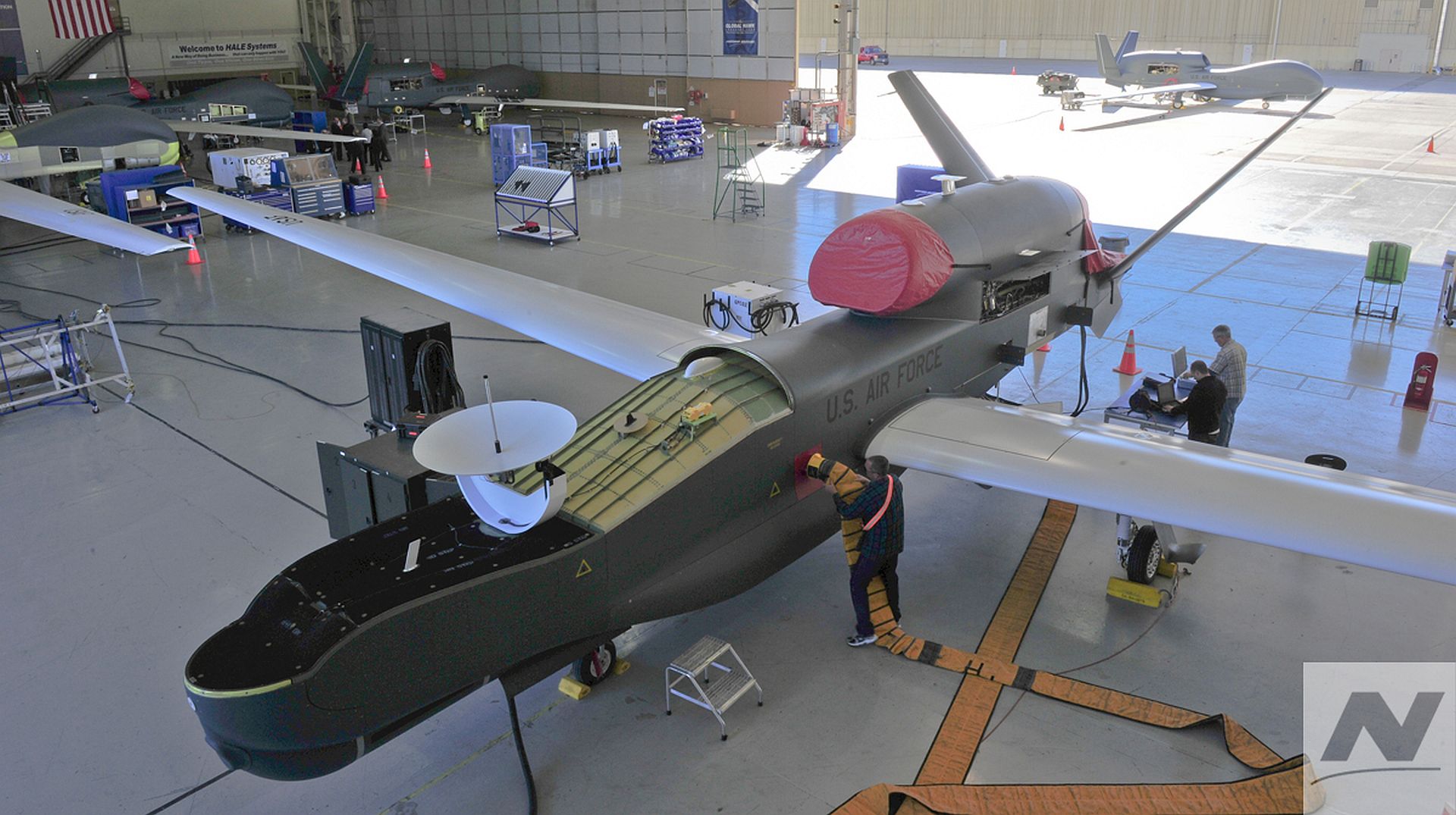
?Our workforce is absolutely critical to quality,? said Deb Andree, vice president, mission assurance, Northrop Grumman. ?They are involved from documenting requirements though delivery of post-production technology enhancements as well as logistics and sustainment. We provide our customers the highest quality products and services so they can achieve their mission.?
Northrop Grumman is a leading global security company providing innovative systems, products and solutions in autonomous systems, cyber, C4ISR, space, strike, and logistics and modernization to customers worldwide.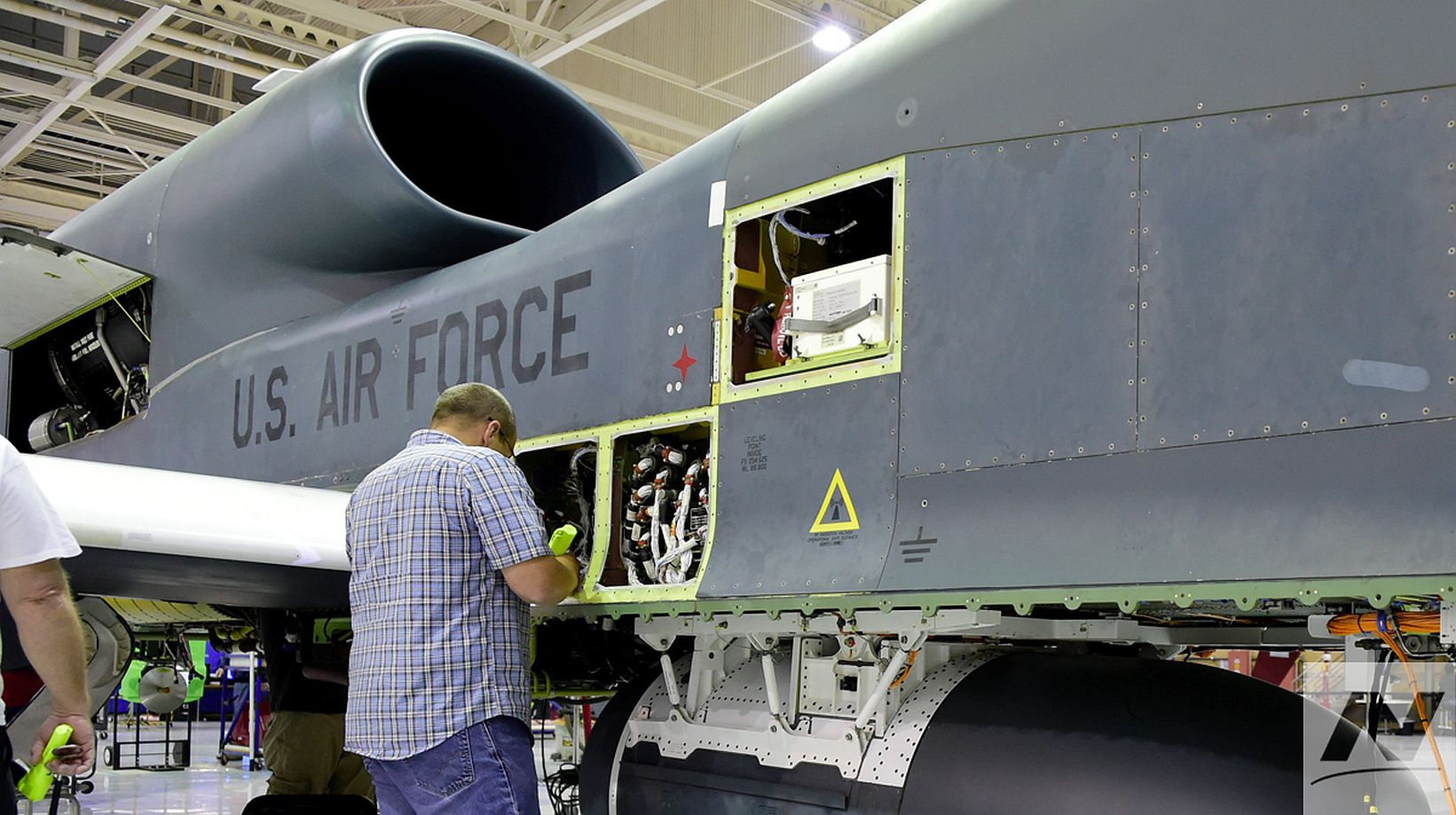
Atlanta, Airbus Helicopters is unveiling a new version of its best-selling H145 light twin-engine helicopter at Heli-Expo 2019 in Atlanta. Visible on the Airbus booth at the show, this latest upgrade brings a new, innovative five-bladed rotor to the multi-mission H145, increasing the useful load of the helicopter by 150 kg while delivering new levels of comfort, simplicity and connectivity.
?We?re extremely happy to be able to showcase the new H145 to our customers here in Atlanta as this upgrade owes a lot to the feedback they have provided us over the years about the aircraft,? said Bruno Even, Airbus Helicopters CEO. ?Our teams have worked hard to quickly bring to the market a set of innovations that we believe will contribute to the success of our customers? operations. It is their trust in the H145 and all its predecessor variants over the last decades that have made it the fantastic helicopter it has become today, and I want to thank them for their continuous support?.
The H145?s new five-bladed rotor brings a significant increase in overall performance, with a maximum take-off weight raised to 3,800 kg and a useful load now equivalent to the aircraft?s empty weight. The simplicity of the new bearingless main rotor design will also ease maintenance operations, further improving the benchmark serviceability and reliability of the H145, while improving ride comfort for both passengers and crew. The reduced rotor diameter will allow the H145 to operate in more confined areas.
The new H145 introduces new levels of on-board connectivity to customers and operators through the integration of the wireless Airborne Communication System (wACS), allowing seamless and secure transmission of data generated by the helicopter in real-time, including in-flight.
EASA certification of the new H145 is planned for early 2020, with first deliveries to follow later that year. This upgrade will also be offered to current H145 customers as a retrofit option in order to deliver the same improvements in terms of useful load, simplified maintenance and comfort to the existing version of the H145.
Powered by two Safran Arriel 2E engines, the H145 is equipped with full authority digital engine control (FADEC) and the Helionix digital avionics suite. It includes a high performance 4-axis autopilot, increasing safety and reducing pilot workload. Its particularly low acoustic footprint makes the H145 the quietest helicopter in its class.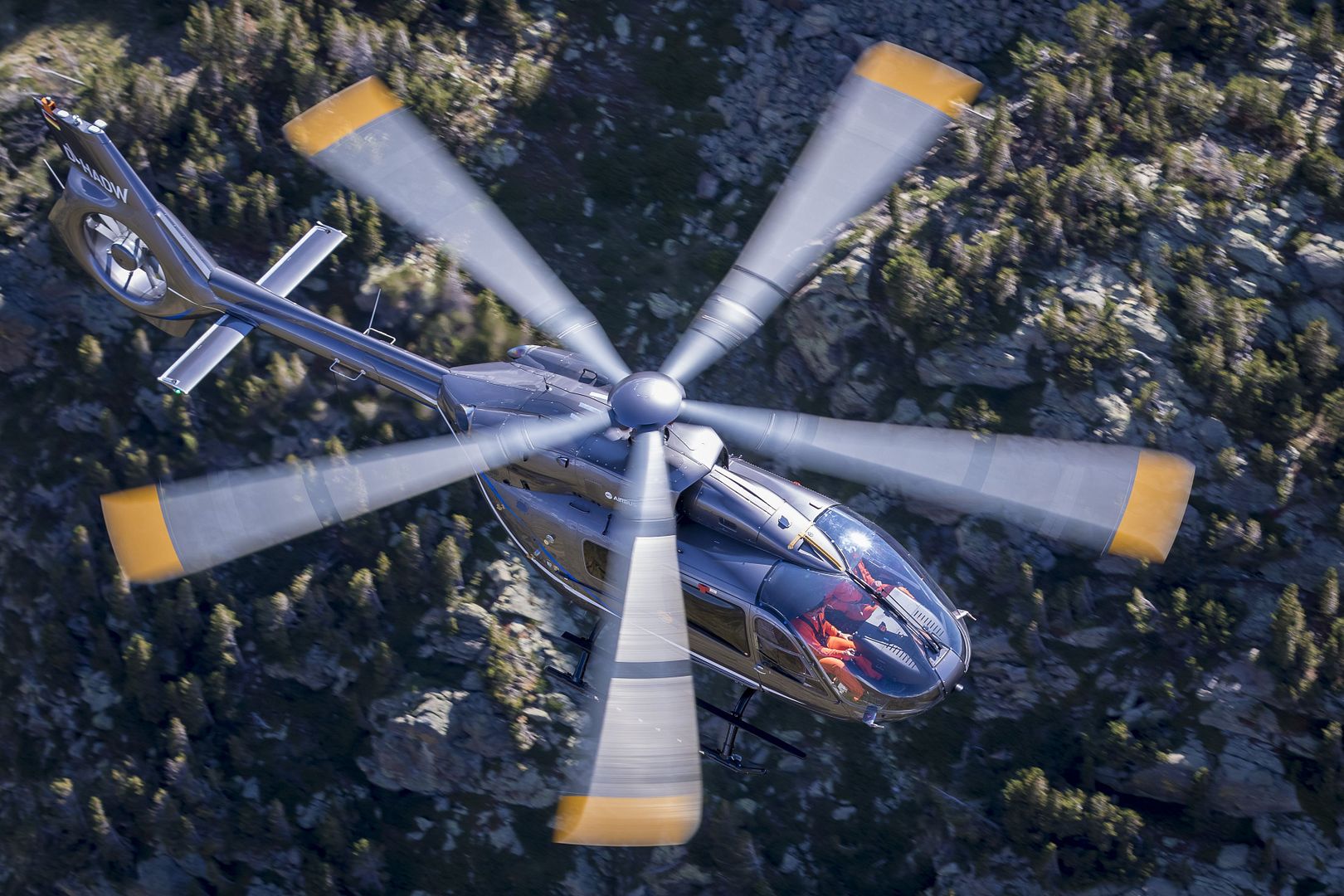
March 4, 2019 Montr?al Bombardier Inc., Business Aircraft, Press Release
Bombardier is proud to announce that its Global 7500 aircraft, has once again demonstrated its ability to go the distance by completing the longest range business jet flight in history**, successfully completing an 8,152-nautical-mile flight non-stop, pushing the boundaries of business travel.
The award-winning business jet departed from Singapore Changi Airport at 7:12 a.m. local time and arrived at Tucson International Airport at 8:19 a.m. local time, completing the long-range speed record flight for the city-pair.
?The Global 7500 aircraft was built to break all the records,? said David Coleal, President, Bombardier Business Aircraft. ?It achieved the industry?s longest mission ever in business aviation after only two months in service. We?ve demonstrated its unequaled long-range and high speed capabilities, but also its ability to break records confidently with healthy fuel reserves remaining, once again, confirming its unsurpassed performance to customers.?
Since its entry-into-service, the Global 7500 jet has emphatically proven itself to be the highest-performing aircraft in the industry and this record showcases the real-world capabilities of this impressive aircraft. With a top speed of Mach 0.925, the aircraft has unquestionably shown its ability to fly even further than any other business jet with its advertised range of 7,700 nautical miles. The achievement of a flight that reaches 8,152 nautical miles clearly demonstrates that the aircraft is the only business jet with the high-performance capabilities required for long flights. Providing access to these demanding, long-range routes is an invaluable resource for customers.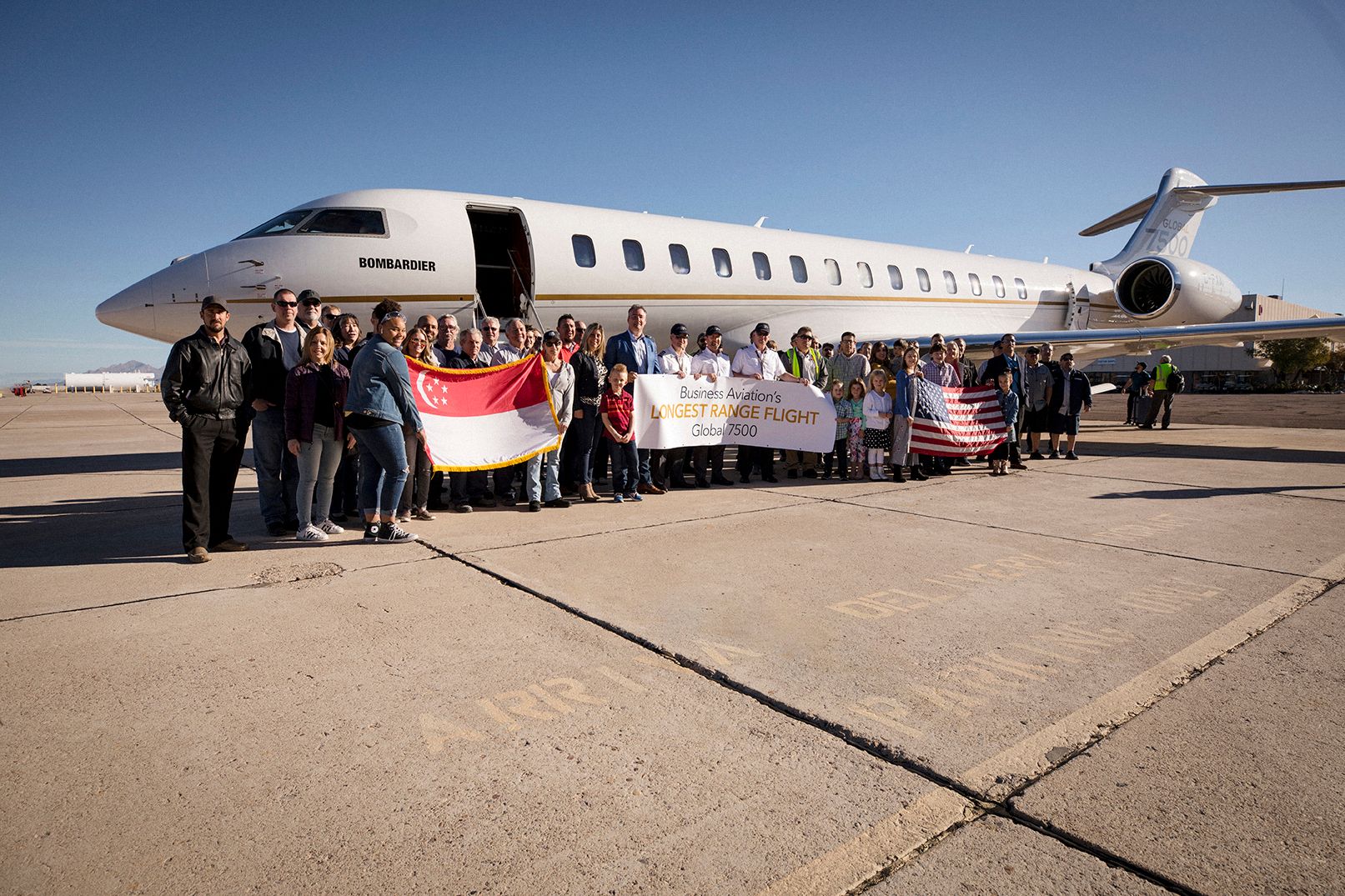
Over the last two months, the Global 7500 jet has demonstrated exceptional performance and reliability, this first aircraft has completed more than 170 hours of flight around the world.
The Global 7500 aircraft offers spaciousness that is unique among business jets, with its award-winning interior featuring a full-size kitchen and four true living spaces. The Global 7500 aircraft also debuts Bombardier?s patented Nuage seat, which was meticulously designed for maximum comfort and will be exclusive to the new Global family of aircraft.
U.S. Air Force Staff Sgt. Justin Warren, F-16 Viper Demo Team public affairs, walks on the flightline during the Heritage Flight Training Course at Davis-Monthan Air Force Base, Ariz., March 2, 2019. The five-day training prepares Air Force demonstration team pilots, maintenance and public affairs members for the upcoming 2019 air show season. (U.S. Air Force photo by Staff Sgt. Jensen Stidham)
The U.S. Air Force F-22 Raptor Demo Team climbs in altitude during the Heritage Flight Course at Davis-Monthan Air Force Base, Ariz., March 2, 2019. The five-day course allows demo teams the opportunity to perfect their performance both on the ground and in the air. (U.S. Air Force photo by Staff Sgt. Jensen Stidham)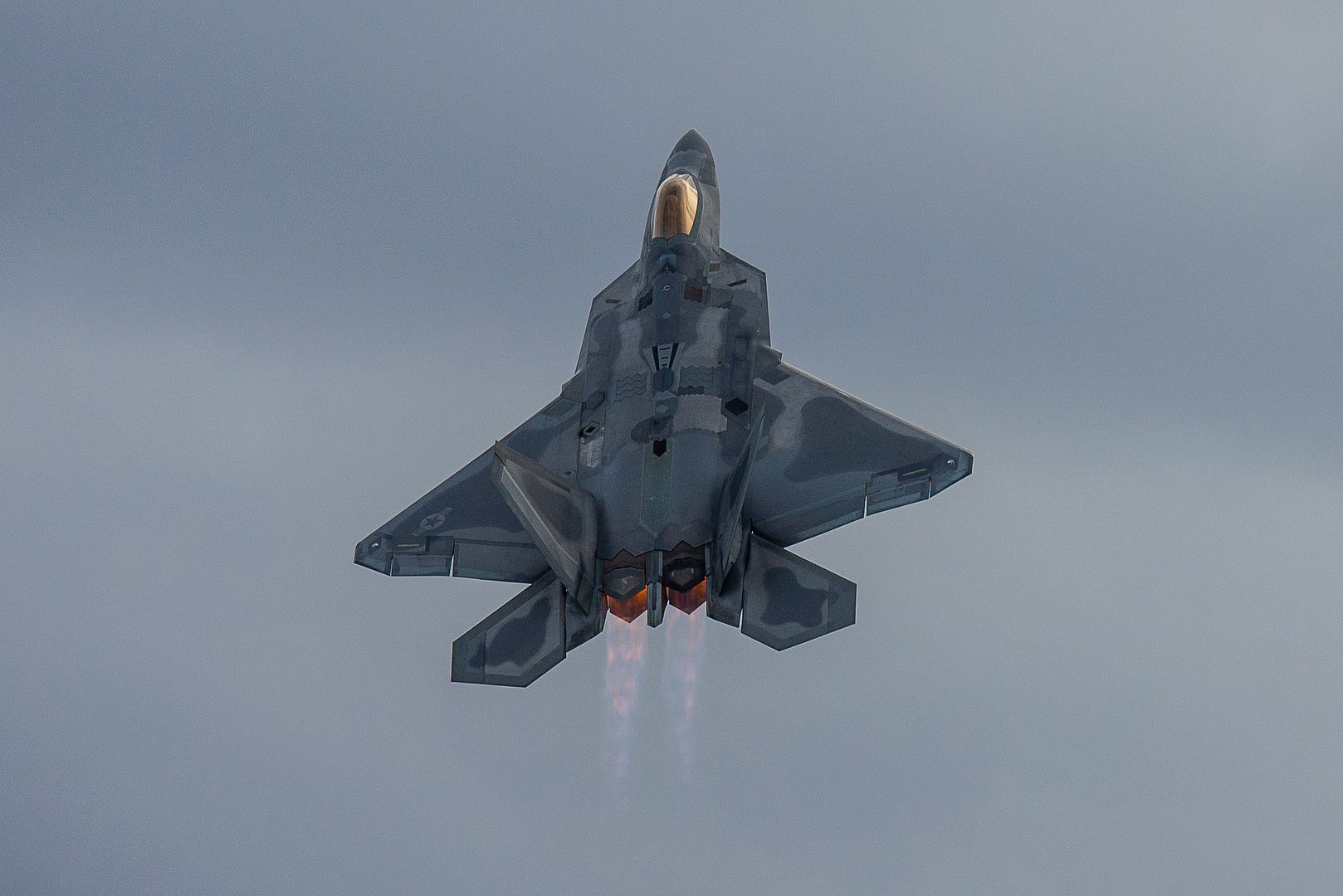
The U.S. Air Force Demonstration Teams fly alongside an F-86 Sabre during the Heritage Flight Course at Davis-Monthan Air Force Base, Ariz., March 2, 2019. The five-day course prepares demonstration team pilots, maintainers and public affairs for the upcoming air show season. (U.S. Air Force photo by Staff Sgt. Jensen Stidham)
A U.S. Air Force F-22 Raptor assigned to Joint Base Elmendorf-Richardson, Alaska, flies over Avalon International Airport during the 2019 Australian International Aerospace & Defence Exposition and Airshow (AVALON 2019) at Geelong, Victoria, Australia, March 1, 2019. The F-22, a critical component of the Global Strike Task Force, is designed to project air dominance rapidly and at great distances to defeat threats attempting to deny adversaries' access to our nation's Air Force, Army, Navy and Marine Corps. (U.S. Air Force photo by Staff Sgt. Sergio A. Gamboa)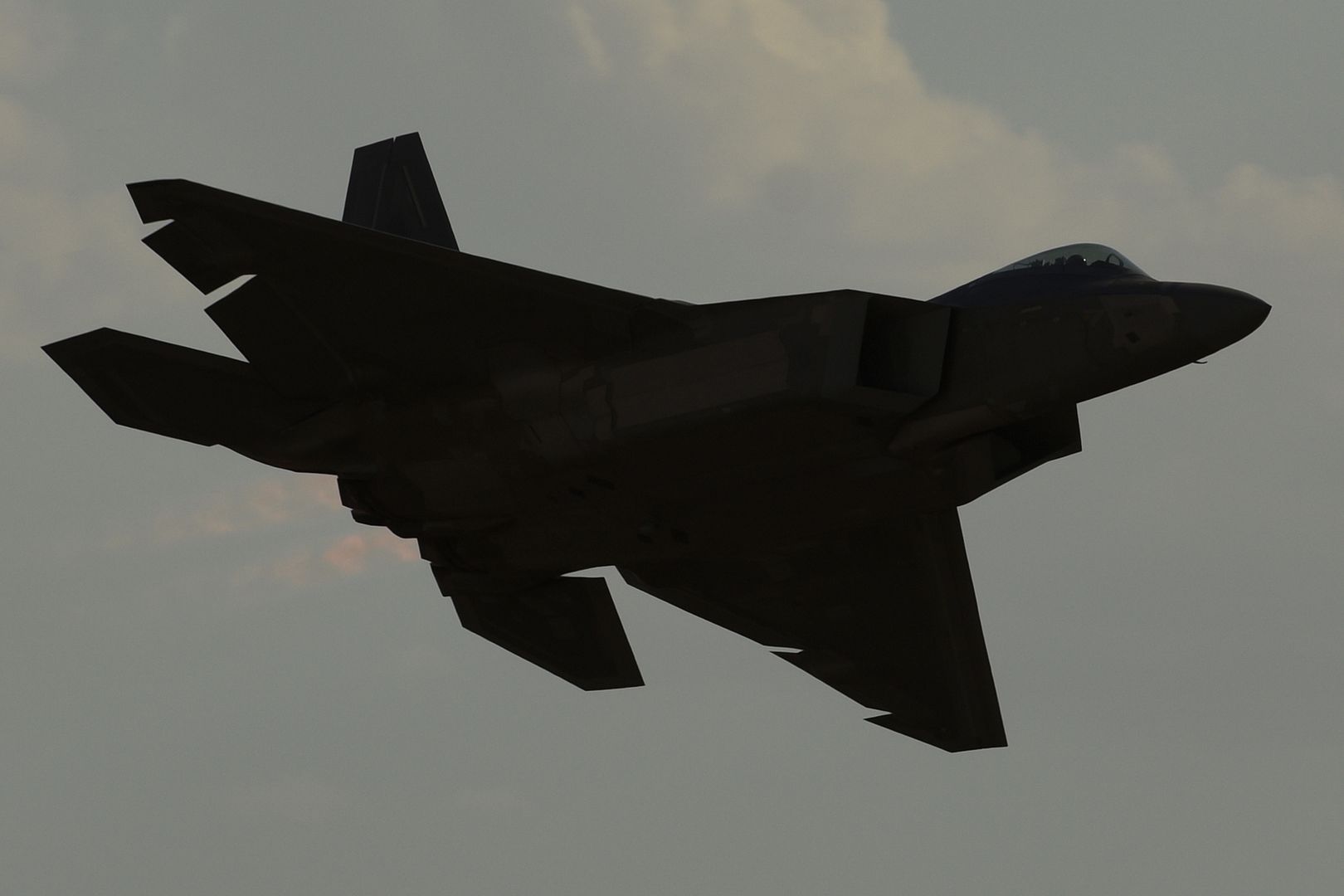
An Australian Defence Force F/A-18 Hornet taxis along the Avalon International Airport flightline during the 2019 Australian International Aerospace & Defence Exposition and Airshow (AVALON 2019) at Geelong, Victoria, Australia, March 1, 2019. Along with Australian aircraft, U.S. military aircraft are to be showcased through flight demonstrations and static displays during the airshow. (U.S. Air Force photo by Staff Sgt. Sergio A. Gamboa)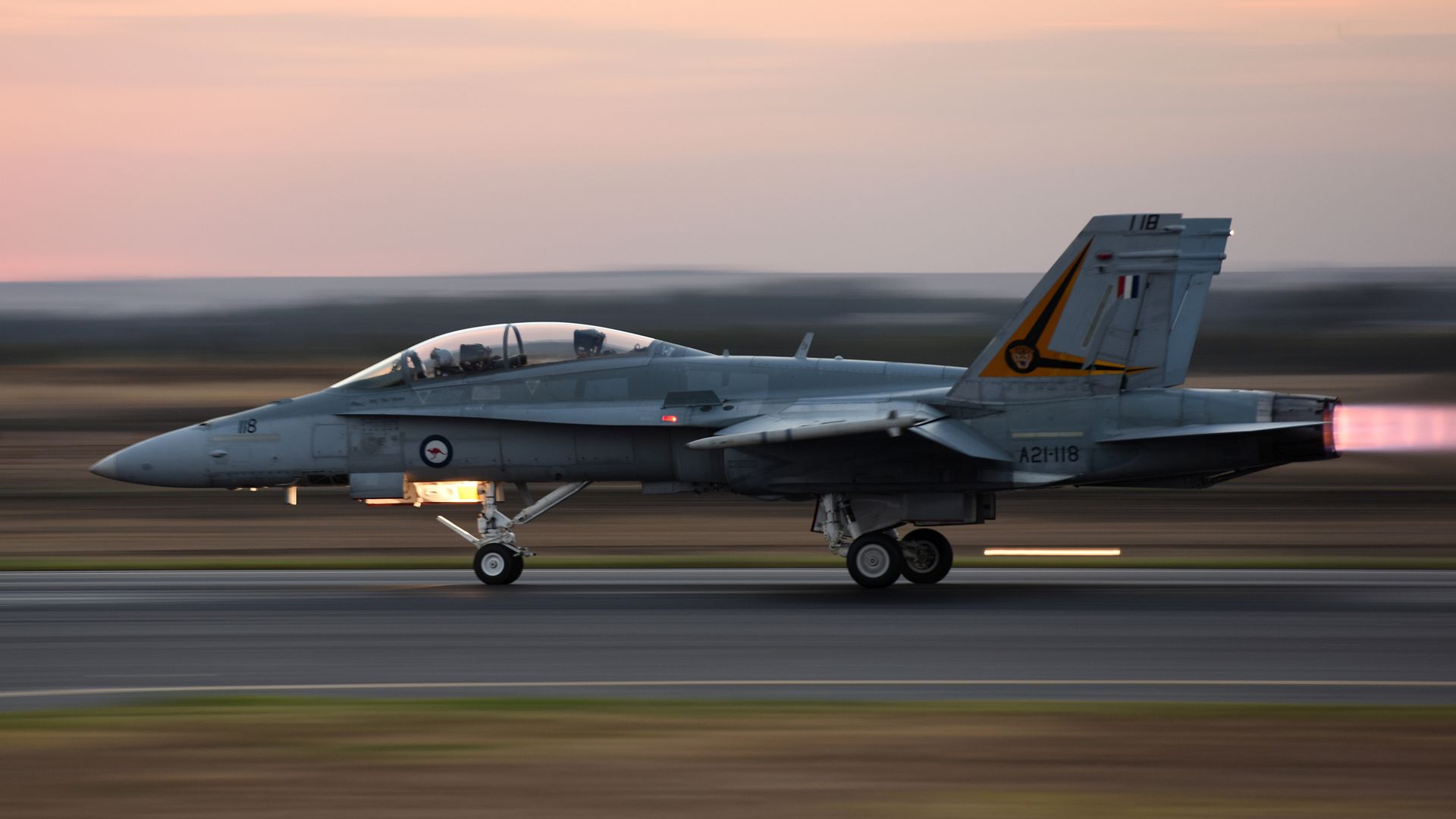
A P-51 Mustang sits on the flight line at Davis-Monthan Air Force Base, Ariz., March 2, 2019.
(Photo by Senior Airman Cheyenne Powers)
-
 Main AdminA U.S. Navy MH-60S Seahawk, assigned to Helicopter Sea Combat Squadron 25 (HSC-25), performs their pre-flight check for a combat search and rescue exercise during COPE North 2019, on Mar. 4, 2019, at Andersen Air Force Base, Guam. CN19 is a long-standing exercise designed to enhance multilateral air operations amongst partner nations and will include humanitarian assistance and disaster relief airlift operations as well as large-force employment. Approximately 2,000 U.S. Airmen, Marines, and Sailors will participate alongside approximately 800 RAAF and JASDF members during the exercise. (U.S. Air Force Photo by Senior Airman Xavier Navarro)
Main AdminA U.S. Navy MH-60S Seahawk, assigned to Helicopter Sea Combat Squadron 25 (HSC-25), performs their pre-flight check for a combat search and rescue exercise during COPE North 2019, on Mar. 4, 2019, at Andersen Air Force Base, Guam. CN19 is a long-standing exercise designed to enhance multilateral air operations amongst partner nations and will include humanitarian assistance and disaster relief airlift operations as well as large-force employment. Approximately 2,000 U.S. Airmen, Marines, and Sailors will participate alongside approximately 800 RAAF and JASDF members during the exercise. (U.S. Air Force Photo by Senior Airman Xavier Navarro)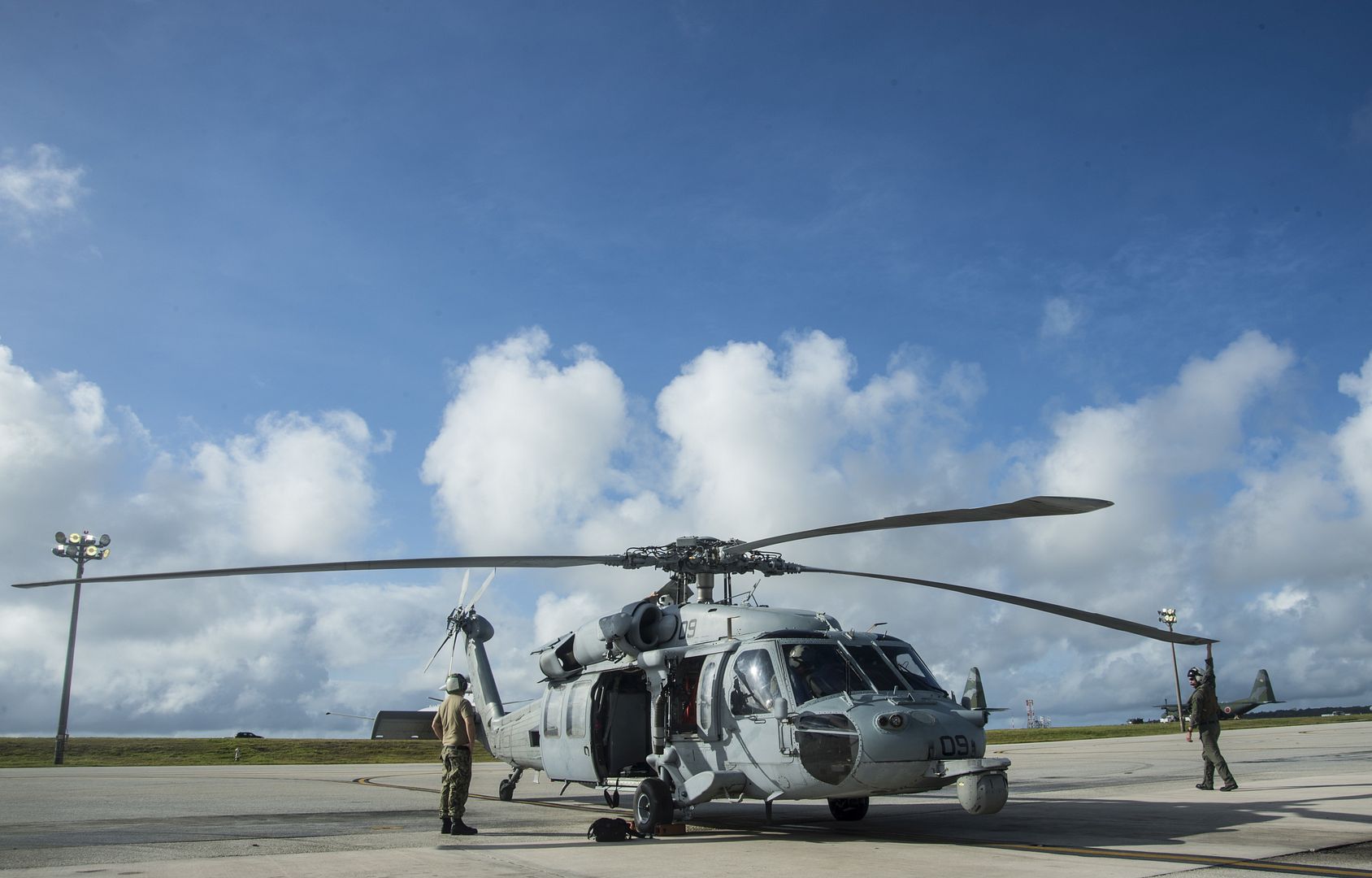
The United States Air Force Air Demonstration Squadron ?Thunderbirds? perform a practice flyover for the Captain Marvel world premiere Mar. 4, 2019, Los Angeles, CA. The flyover is a unique moment to honor the men and women serving in the Armed Forces who are represented in Captain Marvel. (U.S. Air Force Photo's/SSgt Ashley Corkins)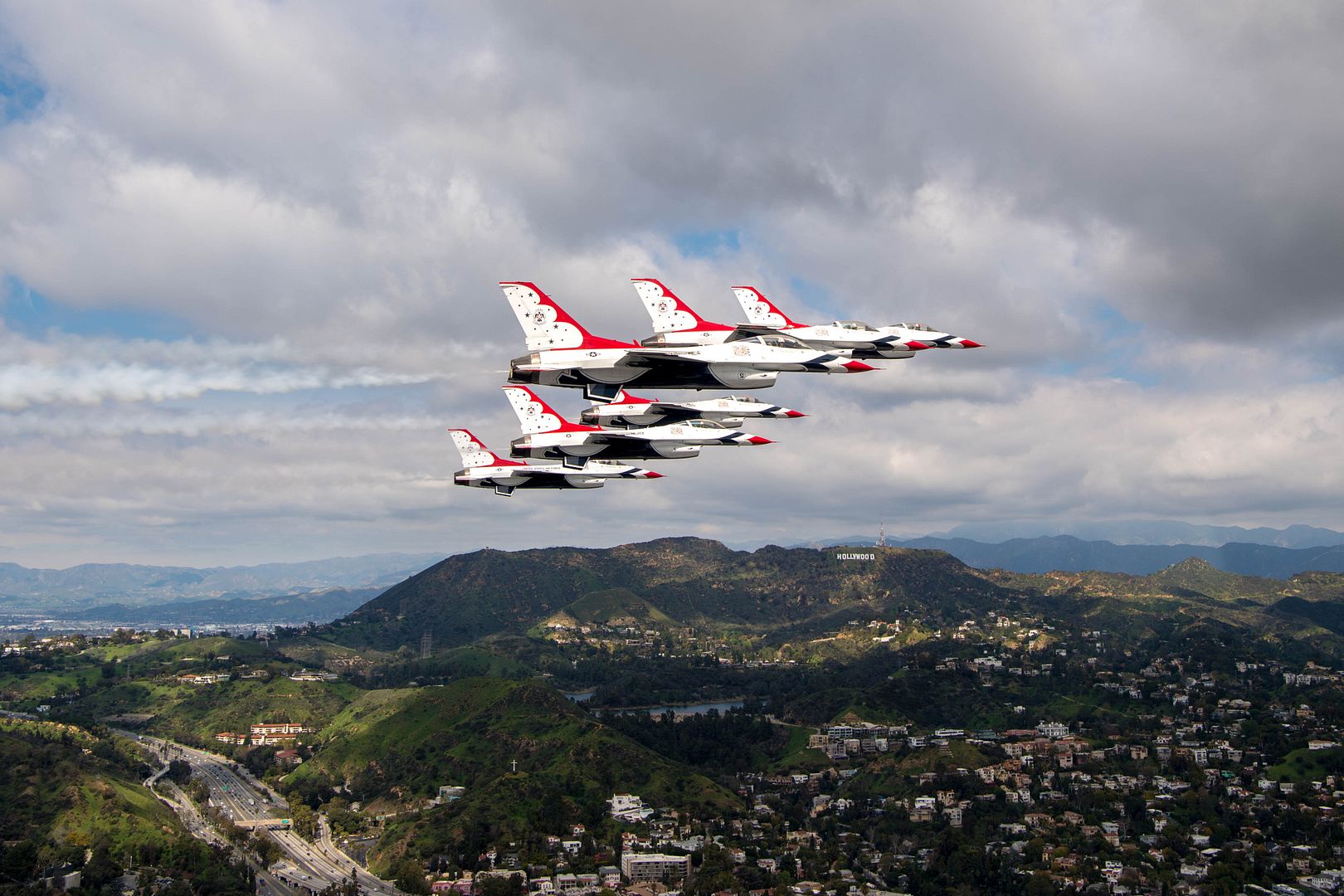

ATLANTA, March 5, 2019 /PRNewswire/ -- Sikorsky, a Lockheed Martin company (NYSE: LMT), today announced new plans for its S-92? helicopter line that will re-designate fielded helicopters as the S-92A+ after modification, and newly produced aircraft as the S-92B. The two variants will share a nearly identical configuration, with S-92B helicopters also featuring enlarged cabin windows and plans for a common cabin door suitable for offshore and SAR configurations. The announcement came at the 2019 Helicopter Association International Heli-Expo show.
The S-92 helicopter boasts a best-in-class safety record and sets the industry standard for reliability. These changes to the venerable S-92 helicopter will introduce new technology that is focused on reliability and operating cost reduction, while at the same time delivering increased capability. Changes will increase commonality of the aircraft between the offshore, SAR, and utility configurations and allow for speedier reconfiguration between roles, making it an even better choice for operators that want a diverse aircraft capable of multiple missions. Sikorsky expects to launch an hourly aftermarket support program, reflecting a targeted economic improvement of the S-92A+ and S-92B, that will be available concurrent with deliveries.
Sikorsky's S-92 helicopter fleet update will include the introduction of phase one MATRIXTM technology that will bring advanced computing power to the platform. This foundation enables adoption of autonomous landing technology such as Rig ApproachTM 2.0 and a new technology from Sikorsky's Innovations lab called SuperSearchTM that uses advanced algorithms to locate objects up to 30 percent faster. Both aircraft will include SAR AFCS and a newly designed interior that is lighter and common to both SAR and OSO missions.
Notably, both configurations will include the Phase IV main gearbox. This gearbox has been validated to exceed the requirements of CFR 29.927(c) as demonstrated by full-scale testing witnessed by the FAA. All of the primary lubrication system oil was removed prior to operating the gearbox for the equivalent of over 500 nautical miles of flight at an airspeed of 80 knots. No discernable anomalies were identified during the post-test examination.
General Electric's CT7-8A6 engine, capable of producing more power in higher altitudes and hotter temperatures, also will be available as an option for both the S-92A+ and S-92B products.
Sikorsky has significantly invested to bring these capabilities into production, but will let market interest determine the pace of remaining internal research and development spending. Current plans have initial availability set for 2022 and have an S-92B helicopter price target below historical S-92 prices. The S-92A+ kit is being designed to allow common fleet benefit at an economical targeted price.
"Our S-92 aircraft has set the standard for modern helicopters, and we're excited with these changes that will ensure it remains so," said Audrey Brady, Sikorsky Vice President, Commercial Systems & Services. "Reliability means safety. Reliability means economics. With these updates and an unmatched cabin size and capacity, our customers will see an economic benefit demonstrating that the S-92 is the best choice in helicopter missions near or far."
"We think safety is a good investment, and so we welcome Sikorsky's investment in this significant new technology, which will drive greater reliability, resilience and operational capability," said Gretchen Haskins, CEO of HeliOffshore.
Since 2004, Sikorsky has delivered more than 300 production S-92 helicopters. The industry standard for safety and reliability, the S-92 helicopter is the preferred aircraft of its size class for offshore oil worker transportation. In 2018, the fleet flew 175,000 hours, a record for the fleet, contributing to a total of nearly 1.5 million hours flown.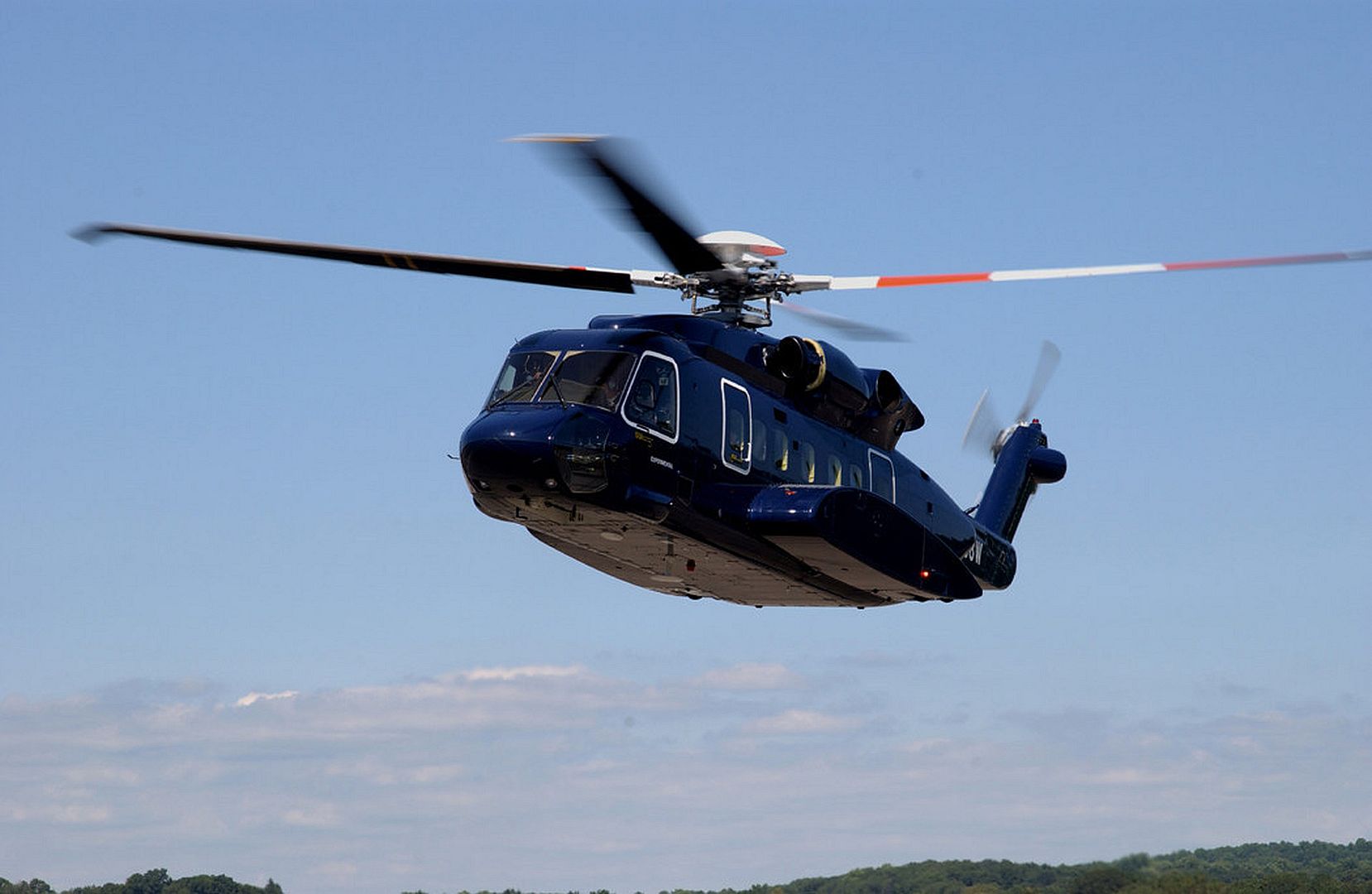
Airbus Helicopters and Swiss Rotor Service (SRS) have signed a Memorandum of Understanding to cooperate in the promotion of the Maximum Pilot View Kit (MPVK) for the H125 and older variants of the AS350 single-engine helicopter (B2 & B3 versions). This will enable customers to have the MPVK installed directly by Airbus Helicopters on newly-built H125?s coming out of its final assembly line in Marignane (France) or out of its worldwide Customer Centers network.
Designed specifically for the H125, the MPVK consists of a large lower viewing aperture and transparent fuselage window fairing, which multiplies by ten the field of view of pilots during vertical work operations. Providing unrestricted pilot view below and to the right hand side of the aircraft, the kit improves the H125 mission capability and enhances the safety for pilots and ground crews in demanding operations such as sling loading, firefighting, confined area operations, search and rescue and emergency medical services, as well as any tasks requiring to operate near the ground and obstacles.
?We are striving to constantly improving the safety, performance and versatility of the H125 in order to better meet our customers? expectations?, said Axel Aloccio, Head of the Light Helicopters Programme at Airbus Helicopters. ?With the MPVK, which will be available this year in new helicopters but also on retrofit, the H125 will further increase its mission capability in important market segments and provide enhanced mission safety?.
Swiss Rotor Solutions AG was founded in 2013 with the purpose of offering services and products for the helicopter industry. The MPVK STC is already EASA, FAA, TCCA, ANAC Brazil and DGAC Mexico approved
?We are really happy to start this cooperation with Airbus Helicopters to further promote the use of the MPVK among H125 operators?, said Thomas Bolzli, CEO of SRS. ?At present there are about 30 aircraft equipped with the kit but with a fleet of about 2000 H125/AS350 currently dedicated to work depending on high pilot vertical visibility, we are very optimistic for the future success of this kit?.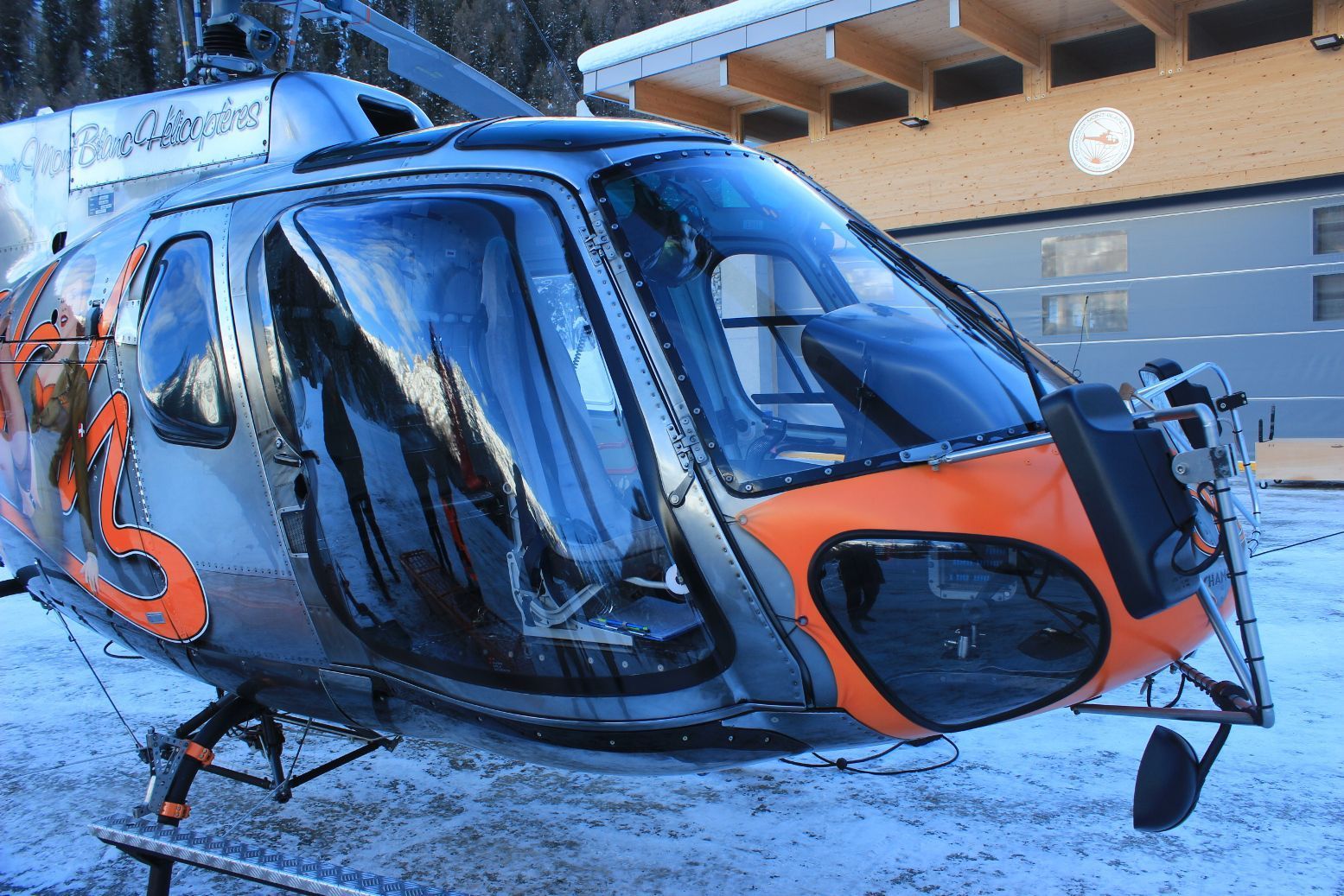
-
5 years agoThu Mar 07 2019, 11:01am
 Main AdminA U.S. Air Force F-15 Eagle flies during a large show-of-force formation over Andersen Air Force Base, Guam, Mar. 6, 2019. CN19 is a long-standing exercise designed to enhance multilateral air operations amongst partner nations and includes humanitarian assistance and disaster relief airlift operations as well as large-force employment. Approximately 2,000 U.S. Airmen, Marines, and Sailors participated alongside approximately 800 RAAF and JASDF members during the exercise. (U.S. Air Force Photo by Senior Airman Xavier Navarro)
Main AdminA U.S. Air Force F-15 Eagle flies during a large show-of-force formation over Andersen Air Force Base, Guam, Mar. 6, 2019. CN19 is a long-standing exercise designed to enhance multilateral air operations amongst partner nations and includes humanitarian assistance and disaster relief airlift operations as well as large-force employment. Approximately 2,000 U.S. Airmen, Marines, and Sailors participated alongside approximately 800 RAAF and JASDF members during the exercise. (U.S. Air Force Photo by Senior Airman Xavier Navarro)
A U.S. Air Force F-16C Fighting Falcon from the 18th Aggressor Squadron assigned to Eielson Air Force Base, Alaska, flies during a large show-of-force formation over Andersen Air Force Base, Guam, Mar. 6, 2019. CN19 is a long-standing exercise designed to enhance multilateral air operations amongst partner nations and includes humanitarian assistance and disaster relief airlift operations as well as large-force employment. Approximately 2,000 U.S. Airmen, Marines, and Sailors participated alongside approximately 800 RAAF and JASDF members during the exercise. (U.S. Air Force Photo by Senior Airman Xavier Navarro)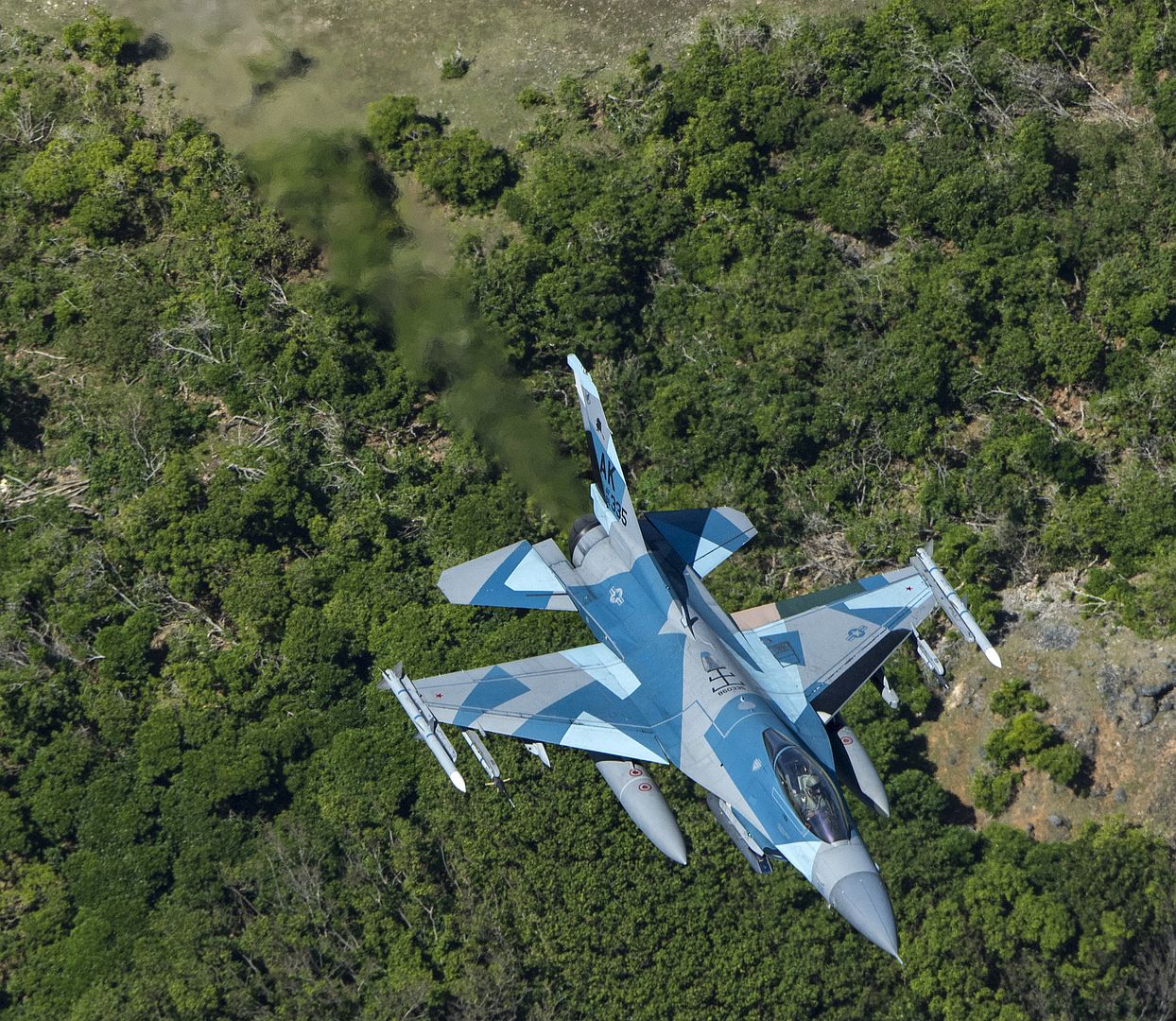
Two KC-135 ?Stratotanker? aircraft assigned to the 171st Air Refueling Wing near Pittsburgh sit idle on the ramp after being de-iced March 6, 2019. The aircraft are scheduled to fly in formation during a training mission. (U.S. Air National Guard photo by Staff Sgt. Bryan Hoover)
Atlanta - Airbus has signed an order for an ACH160 with an undisclosed Canadian customer. The customer, who has vast experience in corporate aviation, has opted for the aircraft to be delivered with a custom-made interior.
?We are proud to announce the sale of the first H160 in Canada where we have seen strong interest in this game-changing aircraft. The H160 has received considerable attention from private and business aviation, air medical services, and passenger transport operators,? said Romain Trapp, President of Airbus Helicopters Canada. ?The H160?s breakthrough design, low sound levels, smooth flight at high speeds and the product maturity at entry into service, meet and often exceed the premium standards set by operators in high-demand markets.?
The selection of the H160 followed a flight demonstration during the H160?s 2018 North American tour, which demonstrated passenger comfort and the next generation-technology firsthand.
The innovative medium twin-engine H160 is the first member of the H generation. From its inception, the complete design of this helicopter has revolved around the creation of an aircraft with added value for customers in terms of performance, economic competitiveness, safety and comfort. In addition, there is increased external visibility for pilots through the enlarged windshield, lateral and floor level, combined with the aircrafts? cameras which show one of four multi-functional displays in the cockpit.
Airbus? digital helicopter avionics suite, Helionix, as well as the 4-axis autopilot, further contribute to the H160?s safety by significantly reducing pilot workload. Along with the integrated automatic functions, Helionix allows the pilot to concentrate on the mission at hand.
The H160 has also been designed to facilitate ease of maintenance, allowing it to reach levels similar to that of a light-twin helicopter. The aircraft?s optimized accessibility has been praised by rotary-wing operators who have had the opportunity to fly in the H160.
ACH ? Airbus Corporate Helicopters is the Airbus Helicopters offer dedicated to its private and corporate customers offering end to end service-based ownership experience.
-
 Main AdminWRIGHT-PATTERSON AIR FORCE BASE, Ohio (AFNS) -- The XQ-58A Valkyrie demonstrator, a long-range, high subsonic unmanned air vehicle completed its inaugural flight March 5, 2019, at Yuma Proving Ground, Arizona. The Air Force Research Laboratory partnered with Kratos Unmanned Aerial Systems to develop the XQ-58A.
Main AdminWRIGHT-PATTERSON AIR FORCE BASE, Ohio (AFNS) -- The XQ-58A Valkyrie demonstrator, a long-range, high subsonic unmanned air vehicle completed its inaugural flight March 5, 2019, at Yuma Proving Ground, Arizona. The Air Force Research Laboratory partnered with Kratos Unmanned Aerial Systems to develop the XQ-58A.
This joint effort falls within the Air Force Research Laboratory?s Low Cost Attritable Aircraft Technology, or LCAAT, portfolio, which has the objective to break the escalating cost trajectory of tactically relevant aircraft. The objectives of the LCAAT initiative include designing and building UAS faster by developing better design tools and maturing and leveraging commercial manufacturing processes to reduce build time and cost.
Developed for runway independence, the aircraft behaved as expected and completed 76 minutes of flight time. The time to first flight took a little over 2.5 years from contract award. The XQ-58A has a total of five planned test flights in two phases with objectives that include evaluating system functionality, aerodynamic performance and launch and recovery systems.
?XQ-58A is the first example of a class of UAV that is defined by low procurement and operating costs while providing game changing combat capability,? said Doug Szczublewski, AFRL?s XQ-58A Program Manager.
Members from the U.S. Air Force, U.S. Marine Corps, Japan Air Self-Defense Force, and the Royal Australian Air Force, participate and observed fueling operations during the Agile Combat Employment exercise March 6, 2019, at Andersen Air Force Base, Guam. This capability demonstrates the Air Force?s global reach and agility by providing a force able to quickly respond and provide combat air power in support of the U.S. commitment to regional security and stability. (U.S. Air Force photo by Master Sgt. JT May III)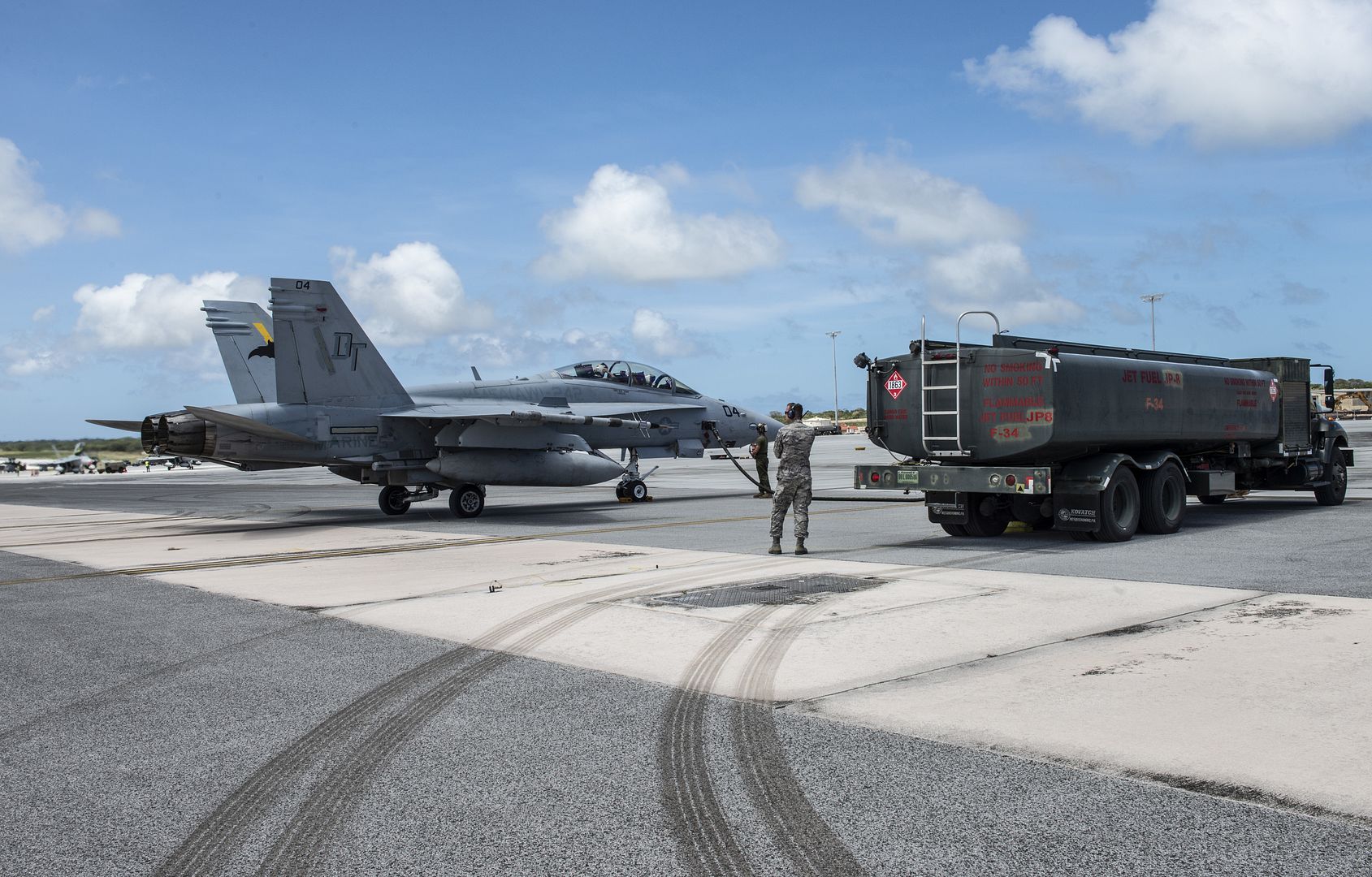
A B-52H Stratofortress taxis on the runway at Minot Air Force Base, North Dakota, March 5, 2019. The B-52 can perform strategic attack, close-air support, air interdiction, offensive counter-air and maritime operations. (U.S. Air Force photo by Airman 1st Class Heather Ley)
Vermont Air National Guard F-16 Falcon pilots from the 158th Fighter Wing, fly in formation after receiving fuel from a New Hampshire Air National Guard KC-135 Stratotanker assigned to the 157th Air Refueling Wing, over New York State, March 5, 2019. This is the last time the 157 ARW?s KC-135s will refuel the 158 FW?s F-16s, as both wings are divesting their aircraft in preparation to receive the KC-46A tanker and the F-35 fighter, respectively. (U.S. Air National Guard Photo by Master Sgt. Thomas Johnson)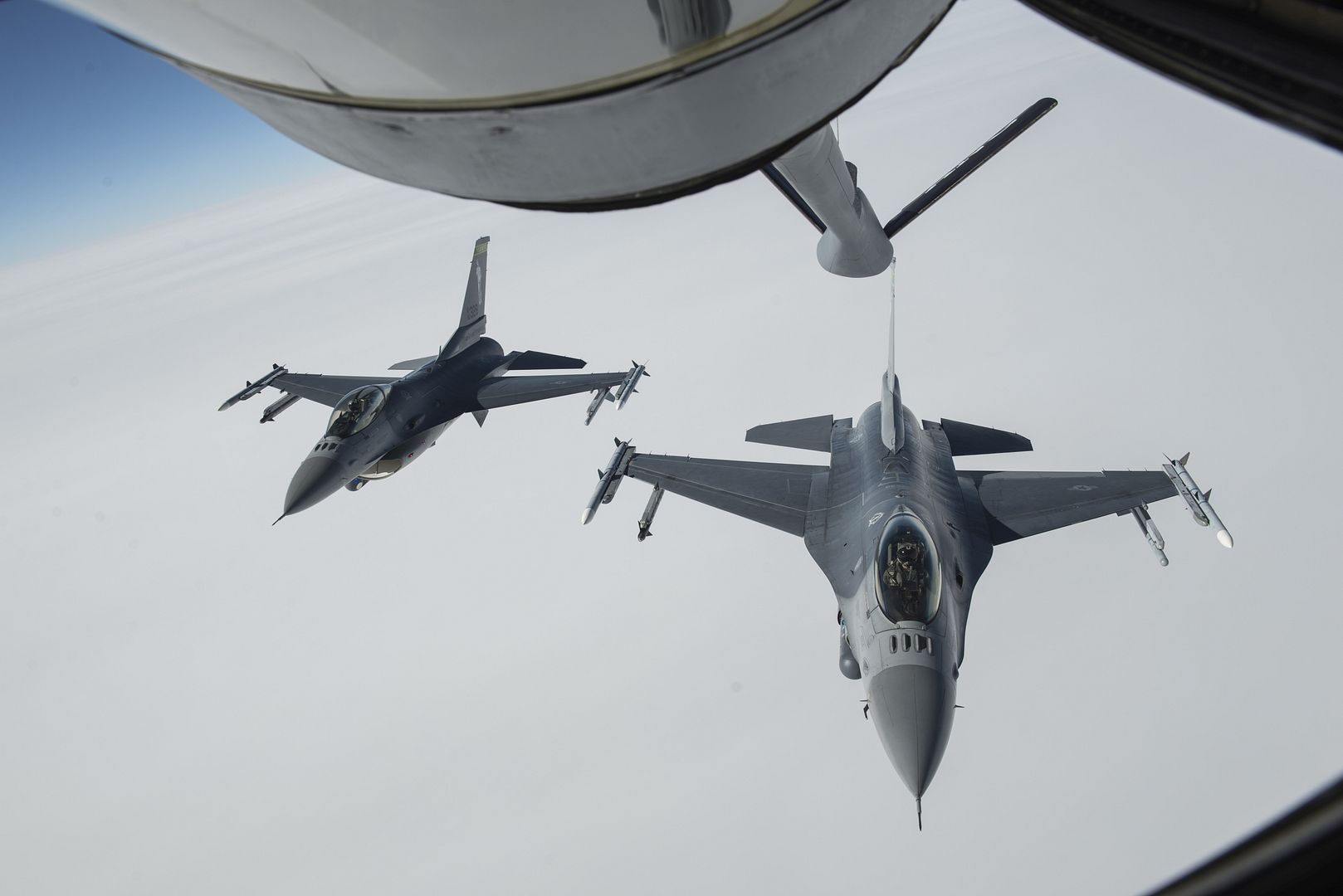
A Vermont Air National Guard F-16 Falcon pilot from the 158th Fighter Wing departs after receiving fuel from a KC-135 Stratotanker assigned to the 157th Air Refueling Wing, over New York State, March 5, 2019,. This is the last time the 157 ARW?s KC-135s will refuel the 158 FW?s F-16s, as both wings are divesting their aircraft in preparation to receive the KC-46A tanker and the F-35 fighter, respectively. (U.S. Air National Guard Photo by Master Sgt. Thomas Johnson)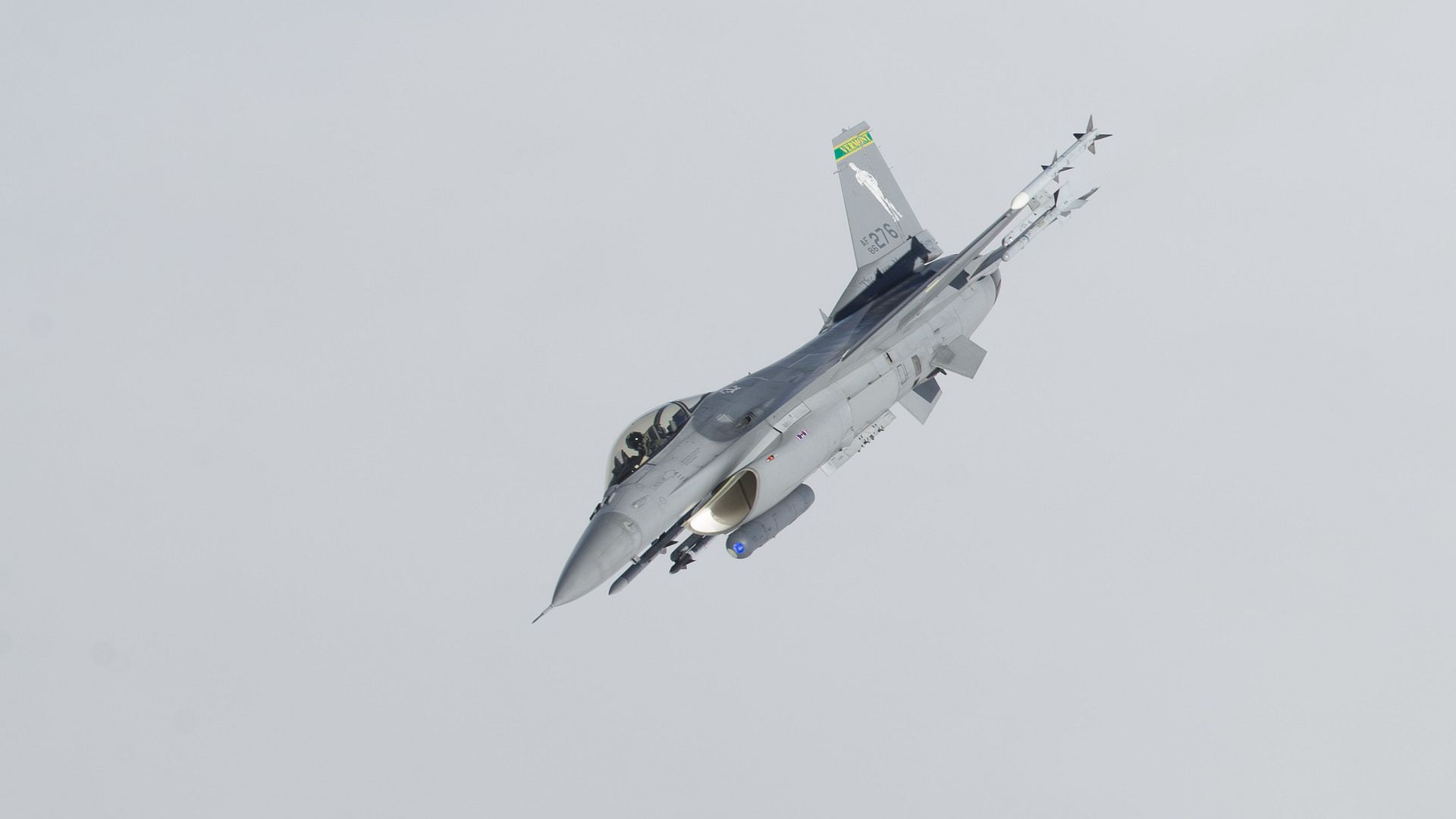
A formation of A-10s attached to the 442nd Fighter Wing at Whiteman Air Force Base, Mo, departs a KC-135 Stratotanker after receiving fuel, over Kansas March 6, 2019. The KC-135 is attached to the Air National Guard?s 185th Air Refueling Wing at Sioux City, IA and is regularly scheduled to refuel A-10s for training purposes. (U.S. Air National Guard photo by Tech. Sgt. Daniel Ter Haar)
A Tulsa Viper on approach March 6, 2019, at Tulsa Air National Guard Base, Oklahoma.
Photo's by Master Sgt. Craig Michael.
138th Fighter Wing
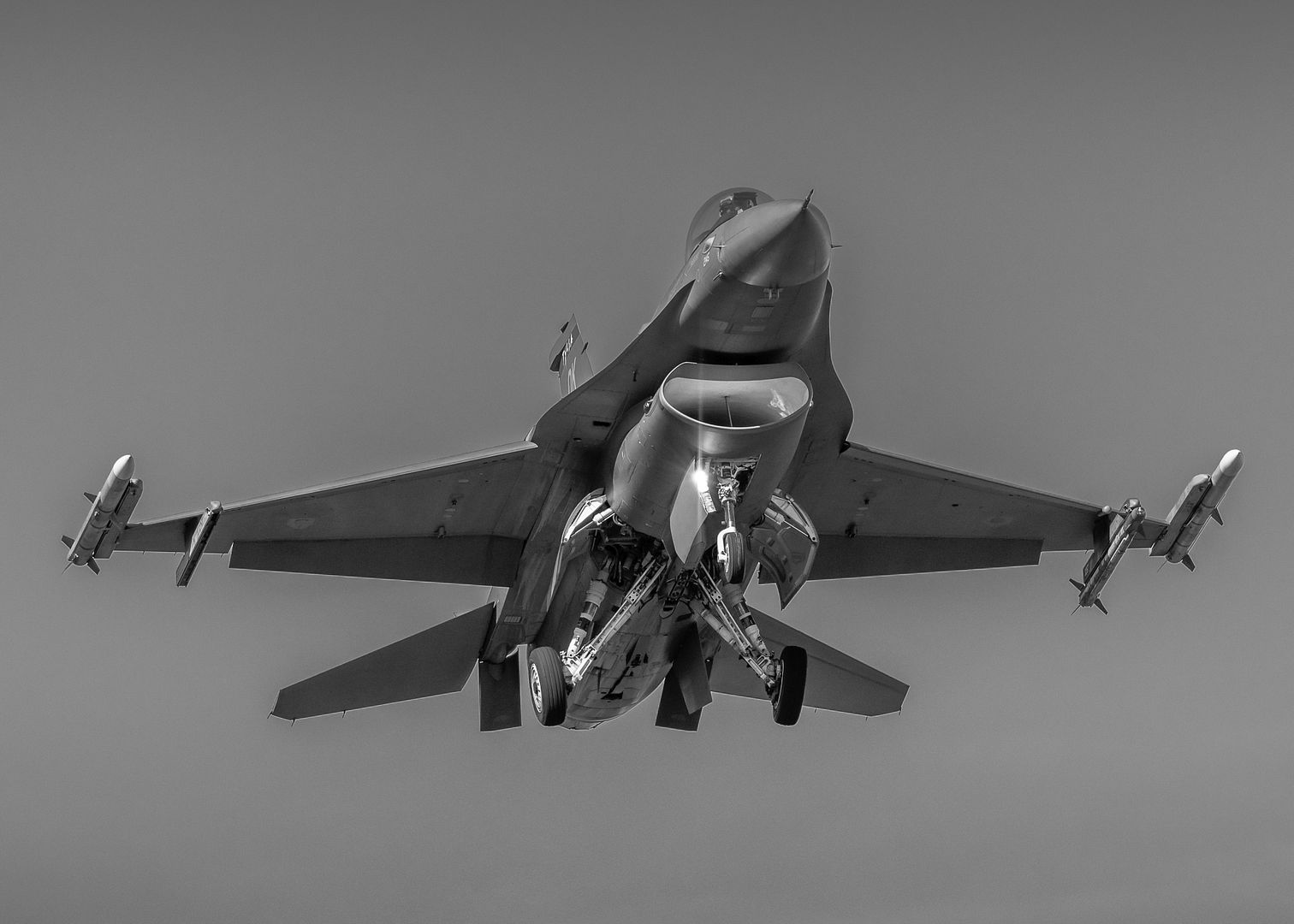

MEDITERRANEAN SEA (Mar. 5, 2019) A UH-1Y Huey helicopter assigned to the ?Black Knights? of Marine Medium Tiltrotor Squadron (VMM) 264 (Reinforced) departs the flight deck of the San Antonio-class amphibious transport dock ship USS Arlington (LPD 24), Mar. 5, 2019. Arlington is on a scheduled deployment as part of the Kearsarge Amphibious Ready Group in support of maritime security operations, crisis response and theater security cooperation, while also providing a forward naval presence. (U.S. Navy photo by Mass Communication Specialist 2nd Class Brandon Parker/Released)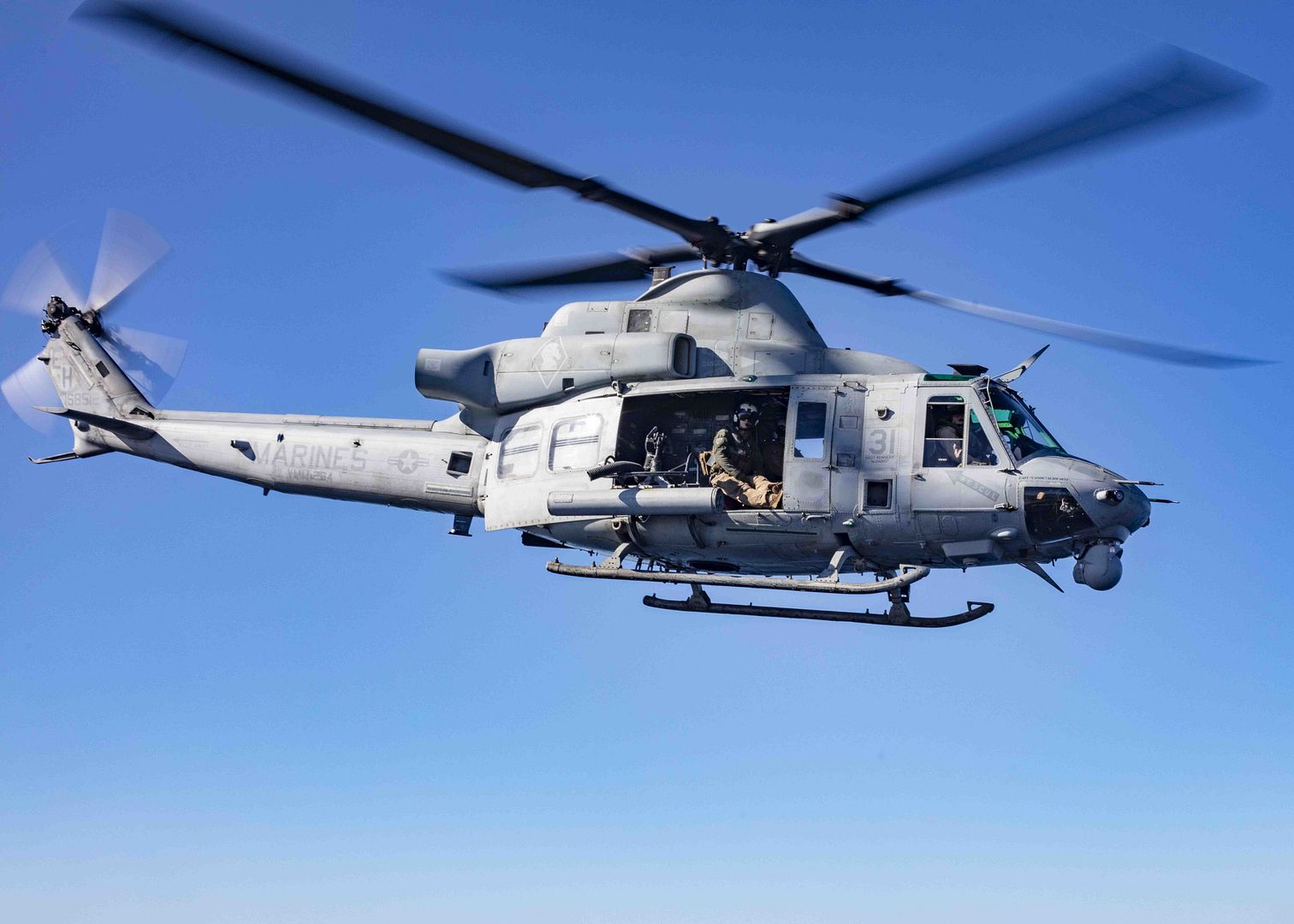
Iron Eagles conduct pre-flight inspections and checks on a CH-47 prior to a mission on Bagram Air Field where the 1st Armored Division Combat Aviation Brigade will transport forces and equipment in support of our Coalition and NATO partners across the Combined Joint Area of Operations Afghanistan.
03.05.2019
Photo by Capt. Roxana Thompson.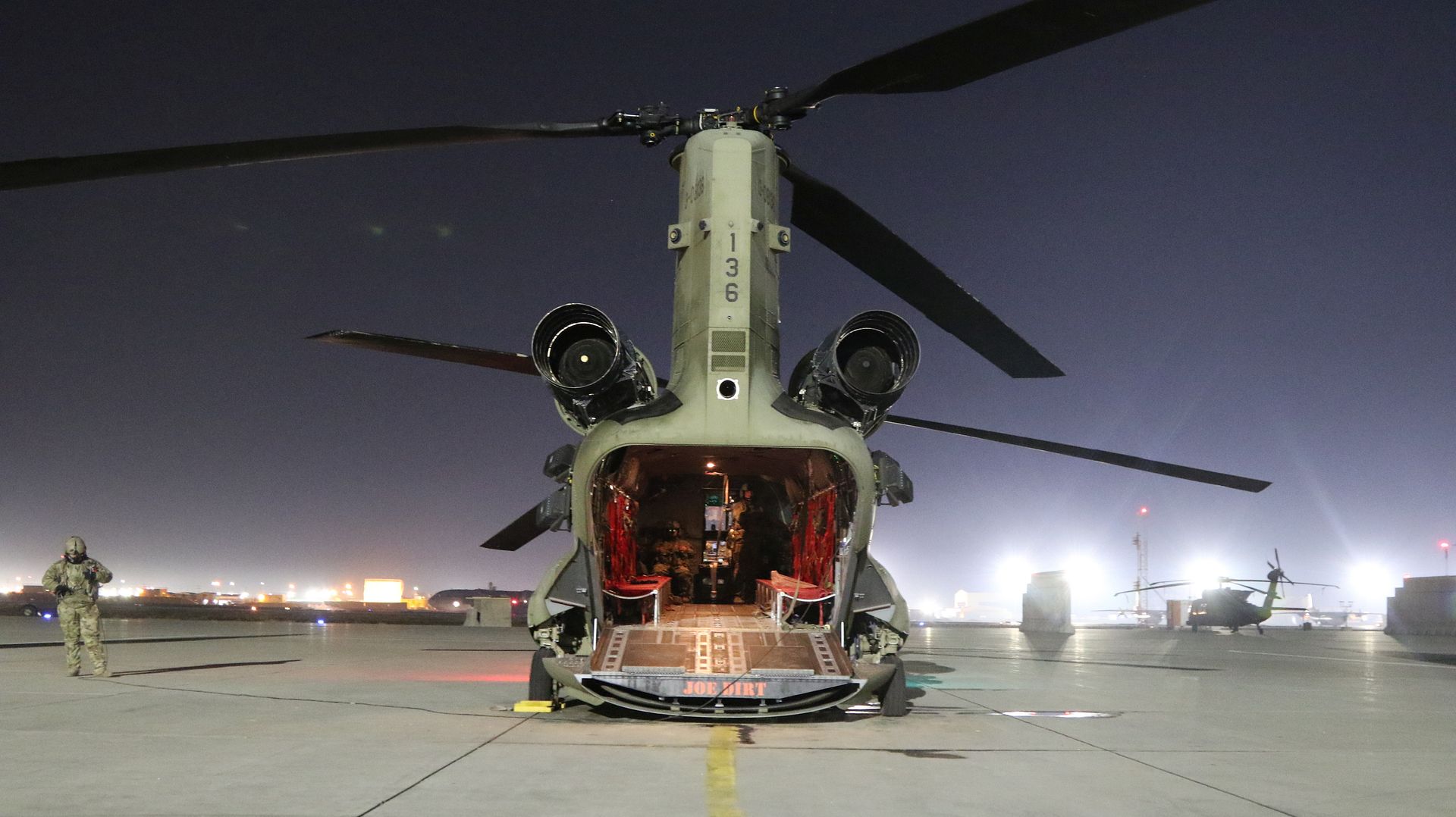
Wizz Air, the largest Central and Eastern European low-cost carrier, has taken delivery of its first of 184 A321neo aircraft on order at an event in Hamburg, with J?zsef V?radi, CEO Wizz Air and Christian Scherer, Airbus Chief Commercial Officer.
The new generation aircraft is powered by two Pratt & Whitney GTF engines and features the widest single-aisle cabin with 239 seats in a single class configuration and offers operators maximum flexibility, fuel efficiency and low operating costs.
Wizz Air is an all-Airbus operator, with more than 100 A320 Family aircraft operating all around Europe, with 261 more to be delivered. With 184 of the larger A321neo aircraft on order, Wizz Air is the largest Airbus customer worldwide of the type.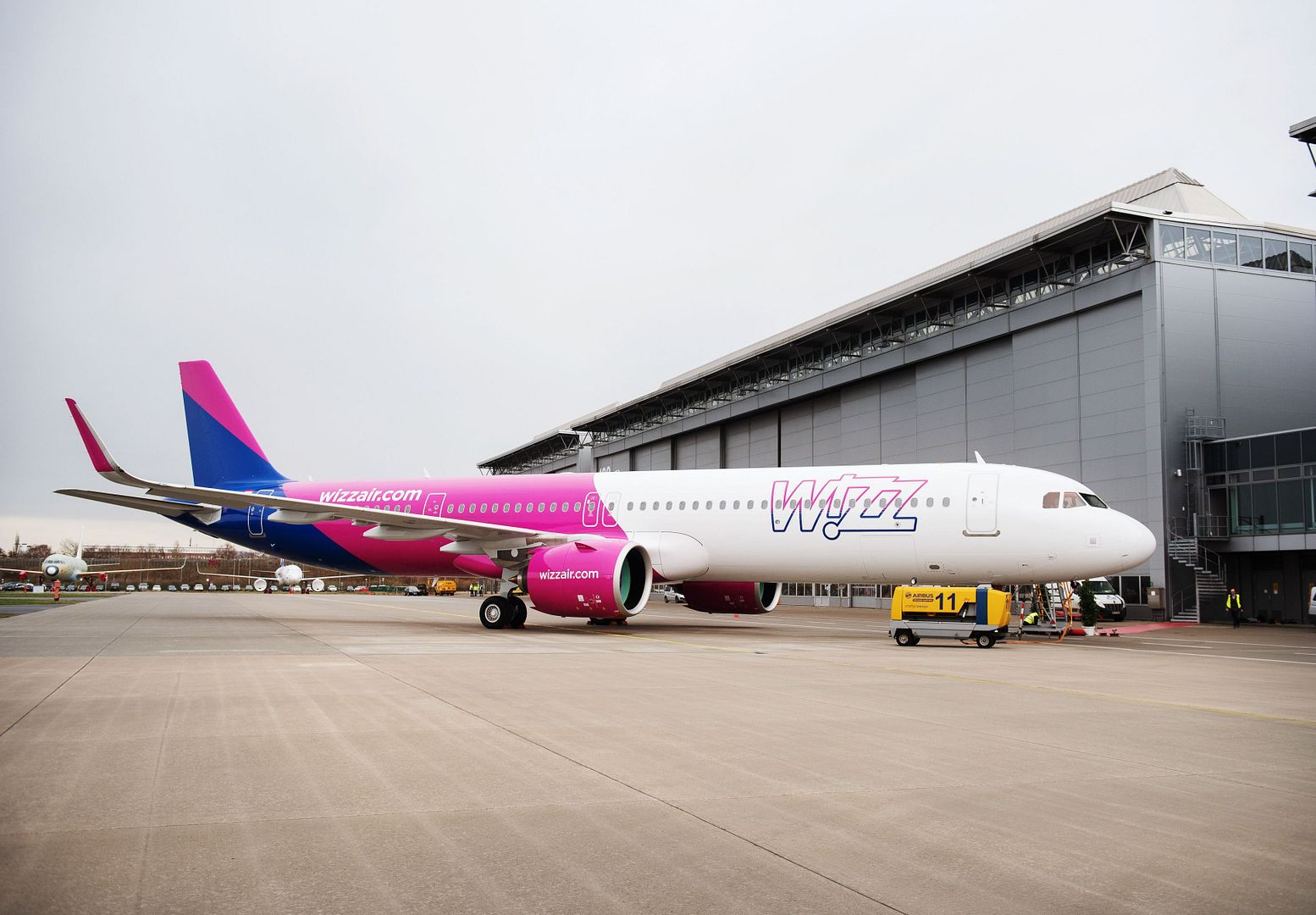
An all-Airbus carrier with more than 100 A320 Family jetliners in operation, Wizz Air has begun taking deliveries of 184 A321neo aircraft it has on order
The A320neo and its derivative aircraft family members are the world?s best-selling single-aisle aircraft with over 6,500 orders from over 100 customers since its launch in 2010. It has pioneered and incorporated the latest technologies, including its new generation engines and the industry's reference cabin design, delivering 20% fuel cost savings alone. The A320neo also offers significant environmental benefits with nearly a 50% reduction in noise footprint compared to previous generation aircraft.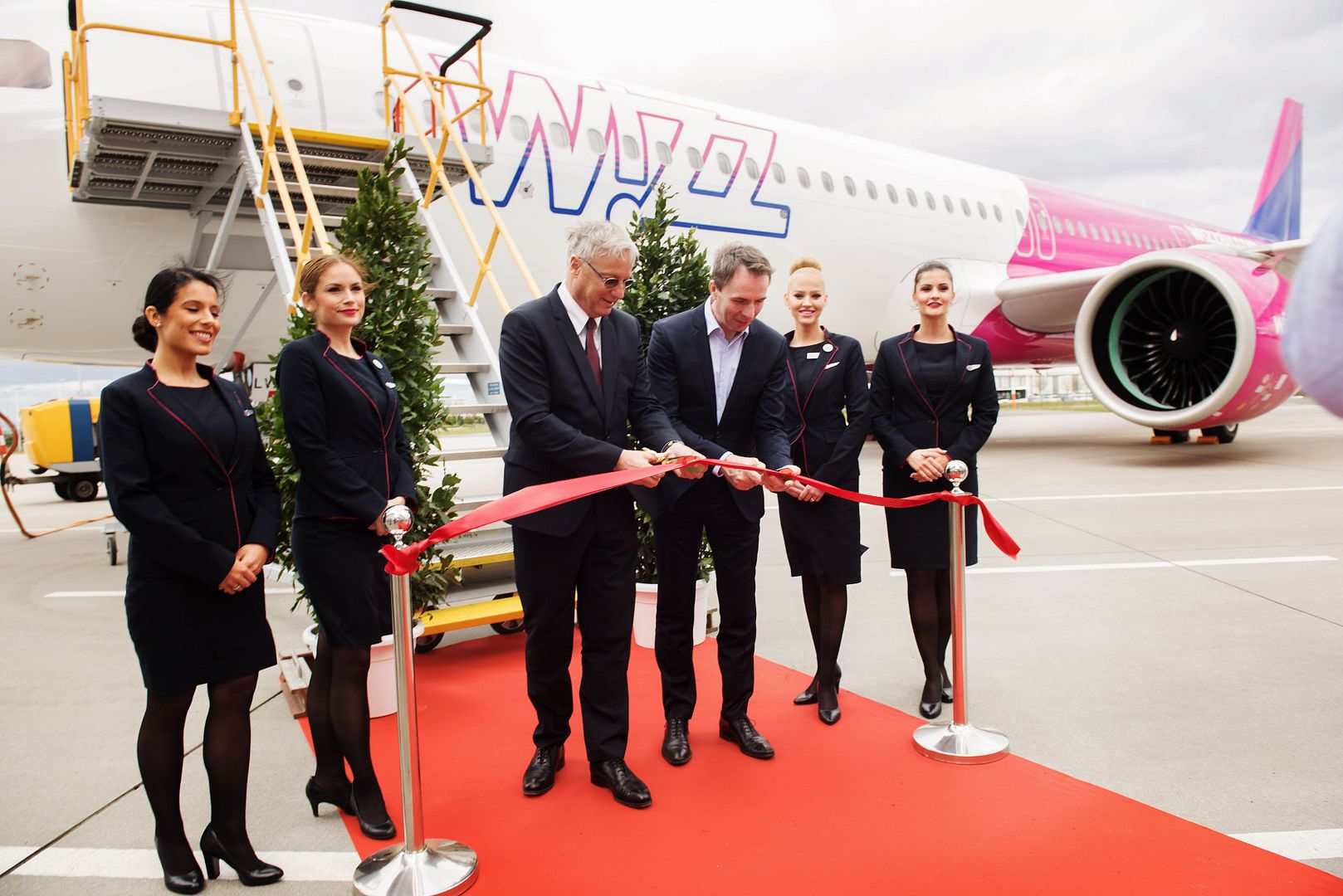
Post a reply
- Go to Previous topic
- Go to Next topic
- Go to Welcome
- Go to Introduce Yourself
- Go to General Discussion
- Go to Screenshots, Images and Videos
- Go to Off topic
- Go to Works in Progress
- Go to Skinning Tips / Tutorials
- Go to Skin Requests
- Go to IJAAF Library
- Go to Luftwaffe Library
- Go to RAF Library
- Go to USAAF / USN Library
- Go to Misc Library
- Go to The Ops Room
- Go to Made in Germany
- Go to Campaigns and Missions
- Go to Works in Progress
- Go to Juri's Air-Raid Shelter
- Go to Campaigns and Missions
- Go to Works in Progress
- Go to Skinpacks
- Go to External Projects Discussion
- Go to Books & Resources
